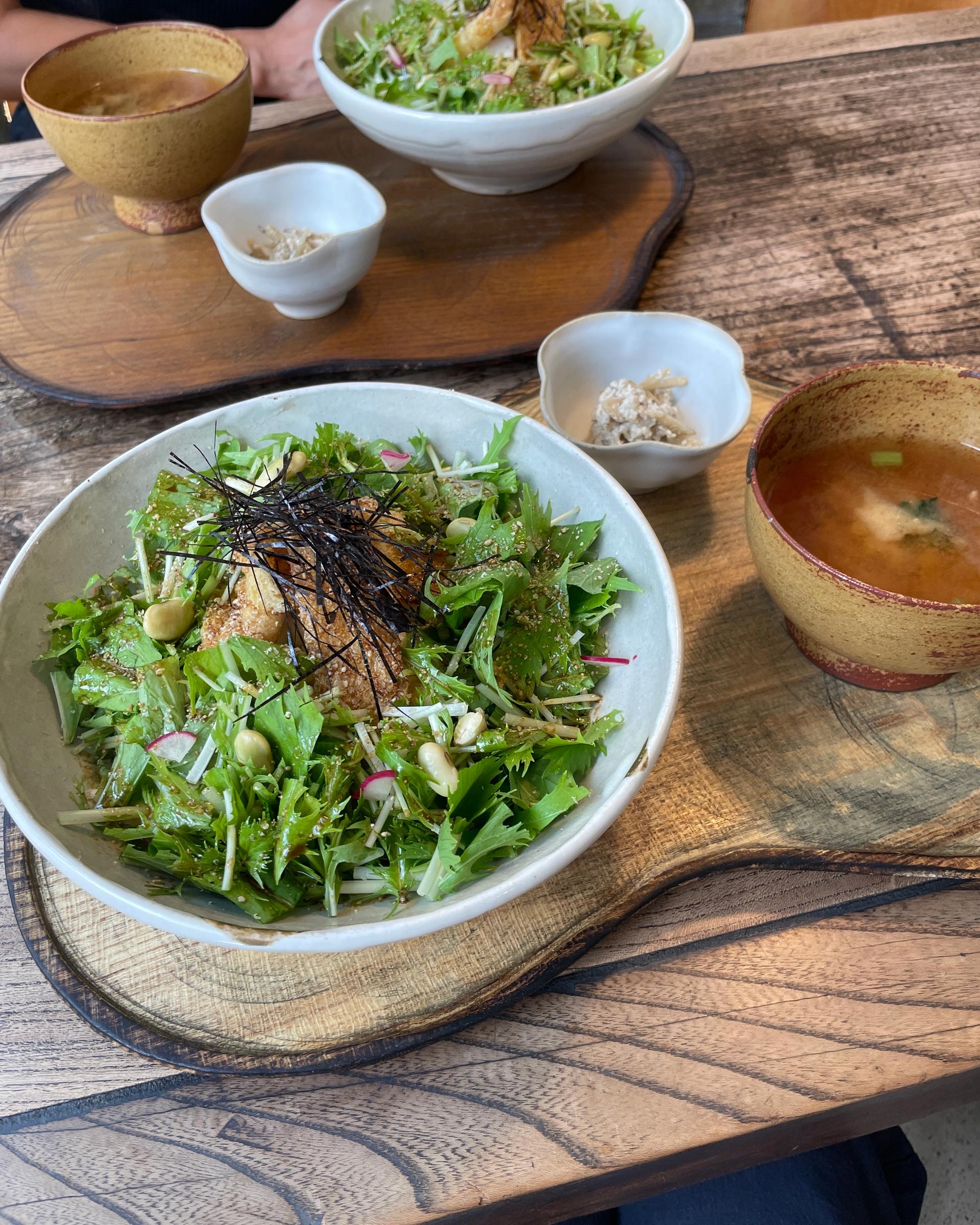Klay Blog
Pottery Towns We Visited in Japan
We’ve visited quite a few pottery towns over our last couple of trips to Japan. While we haven’t made it to all of the ancient kiln sites yet—and there are still a couple high on our list—we thought it was a good time to start recording the places we have explored so far. A few friends have recently asked for tips for their upcoming trips to Japan, so I found myself going through a lot of photos and revisiting the places we really loved in order to share some recommendations. It seemed like the perfect opportunity to turn those notes into a proper blog post, complete with photos and links. This is a list of the places we enjoyed the most and would recommend to like-minded friends planning their own visit.
We always take the time to refine our travel suggestions. This isn’t just a list of everywhere we happened to go—it’s a carefully edited selection based on our own research and first-hand experience, or suggestions from local Japanese friends. We see far more than what ends up on these tips blog posts, but only the places we truly rate make it onto our recommendations.
The trips to pottery towns were usually clustered together with near by things we wanted to do into the same trips from Kyoto or Tokyo. So I have also included highlights of the other things we saw on those trips too.
As with everything in Japan, when you are planning to visit places you MUST look up each places opening days and hours in advance when planning your trip. Each little business/ museum/ restaurant is unique and have very specific opening days, which can change all the time. I highly suggest not only relying on what comes up on google too, as many tiny businesses don't update on google. Their social media accounts are usually more reliable. I also suggest booking at restaurants and cafes wherever possible well in advance.
Another thing to keep in mind is that some of the pottery towns have big annual markets/ fairs, some even twice a year. We did not attend any of these as they weren't on when we were going, but it might be worth looking into.
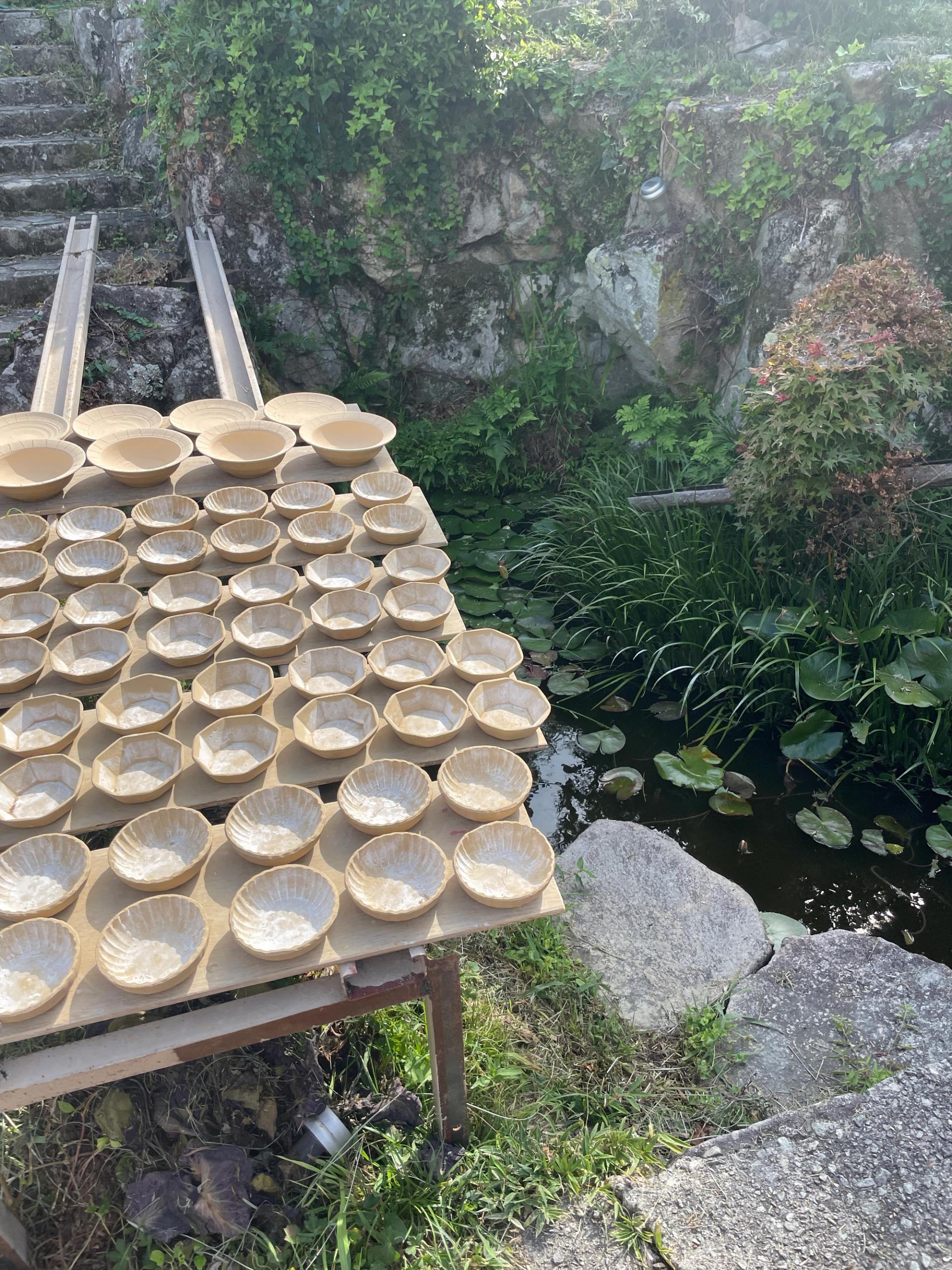
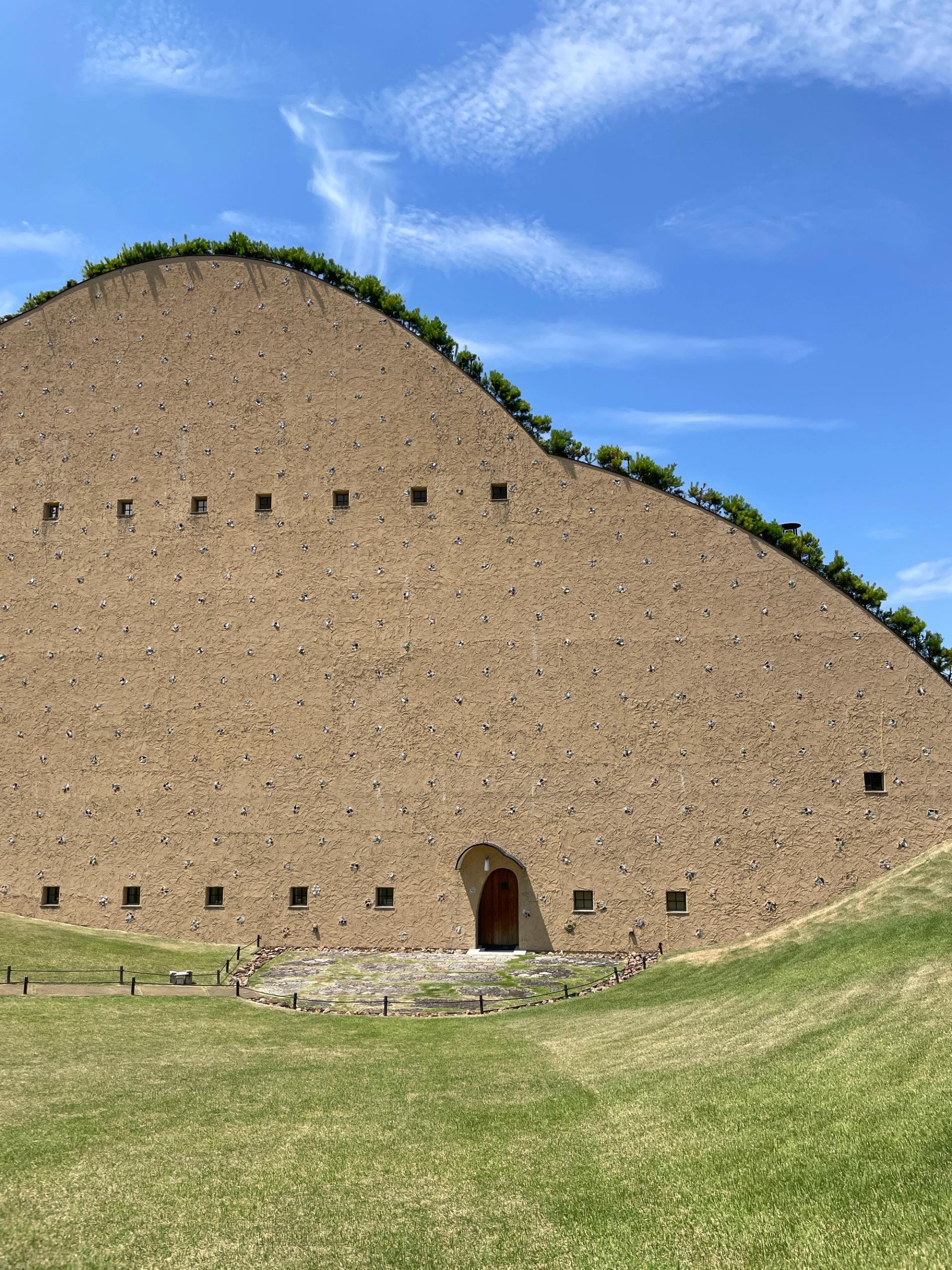
Image on the left is from Tamba and on the right is the Mosaic Tile Museum Tajimi designed by Japanese architect Terunobu Fujimori.
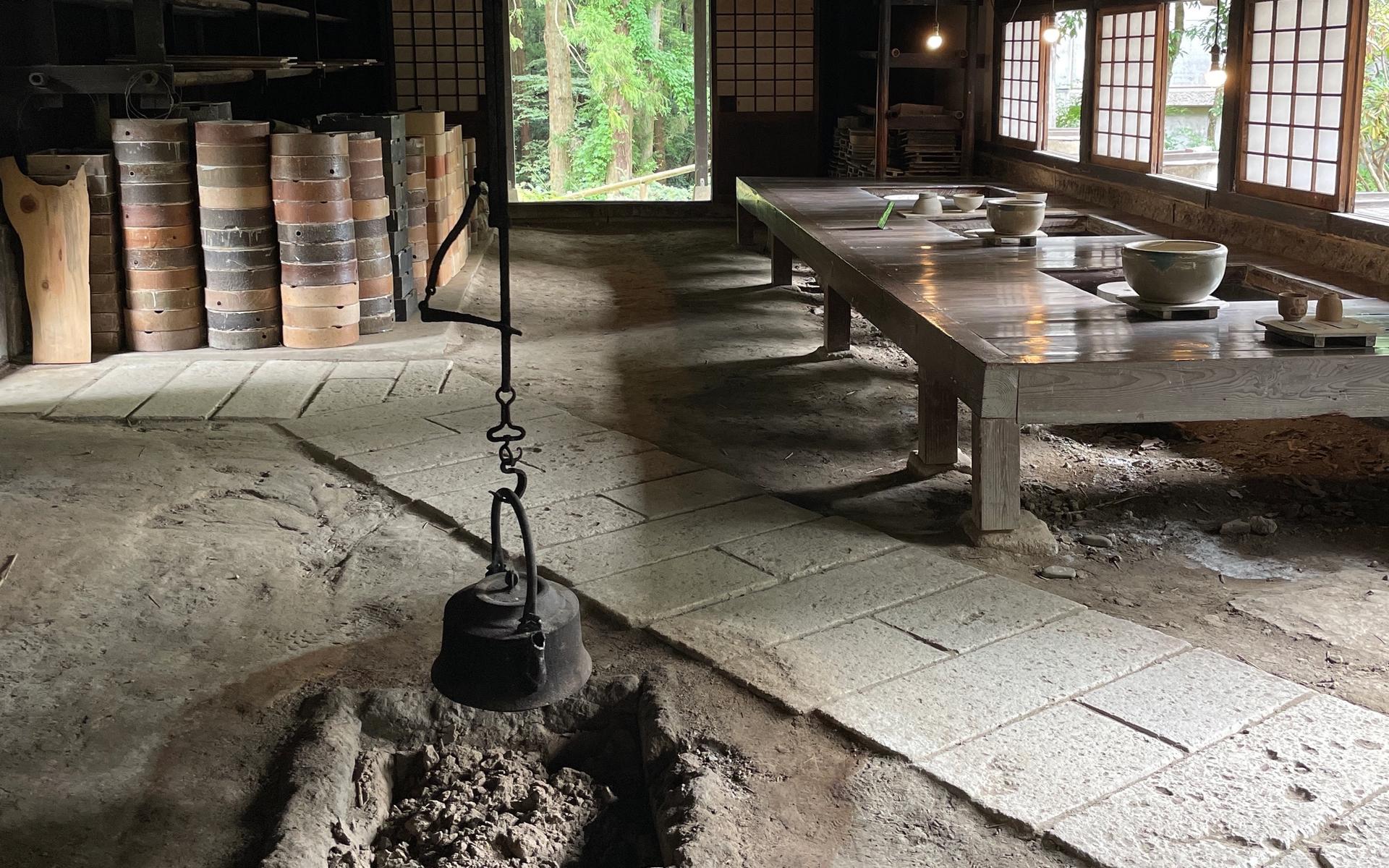
Mashiko
Although Mashiko is not one of the ancient kiln towns, it is a very famous pottery town because of its history of being an important part of the Mingei (folk arts) movement. Mashiko’s rise as a pottery town is inseparable from the life and work of Shoji Hamada. Although the town had a local pottery tradition dating back to the 19th century, it was Hamada’s arrival in the 1920s that brought it national and international attention. Hamada was more than just a skilled potter—he was a central figure in Japan’s Mingei movement, which championed the beauty of everyday handmade objects and sought to preserve traditional crafts in the face of industrialisation.
Hamada was part of a close-knit circle of influential people that included Soetsu Yanagi (father of Sori Yanagi), a philosopher and critic who coined the term Mingei, and Kanjiro Kawai, another brilliant potter with a deeply individual style (you can visit Kanjiro Kawai's incredible house in Kyoto – see our Kyoto tips blog post!). Together, they formed the core of the movement, united by a belief that functional, handmade objects created by unknown craftspeople possessed a quiet, honest beauty worthy of celebration. They believed that true art could be found not just in museums, but in humble, everyday items—bowls, cups, fabrics, tools—that carried the soul of their maker.
Hamada settled in Mashiko because he believed in working close to the materials and traditions of rural Japan. He built his own kiln, worked with local clay, and embraced the imperfections and variations that come from handcraft. His approach influenced generations of potters, both in Japan and abroad, and helped turn Mashiko into a centre for creative pottery rooted in tradition, but open to innovation.
Mashiko is about a two hour drive from Tokyo. We hired a car at Tokyo Narita airport and drove there. If you want to hire a car in Japan, make sure you get an international licence before you leave for Japan.
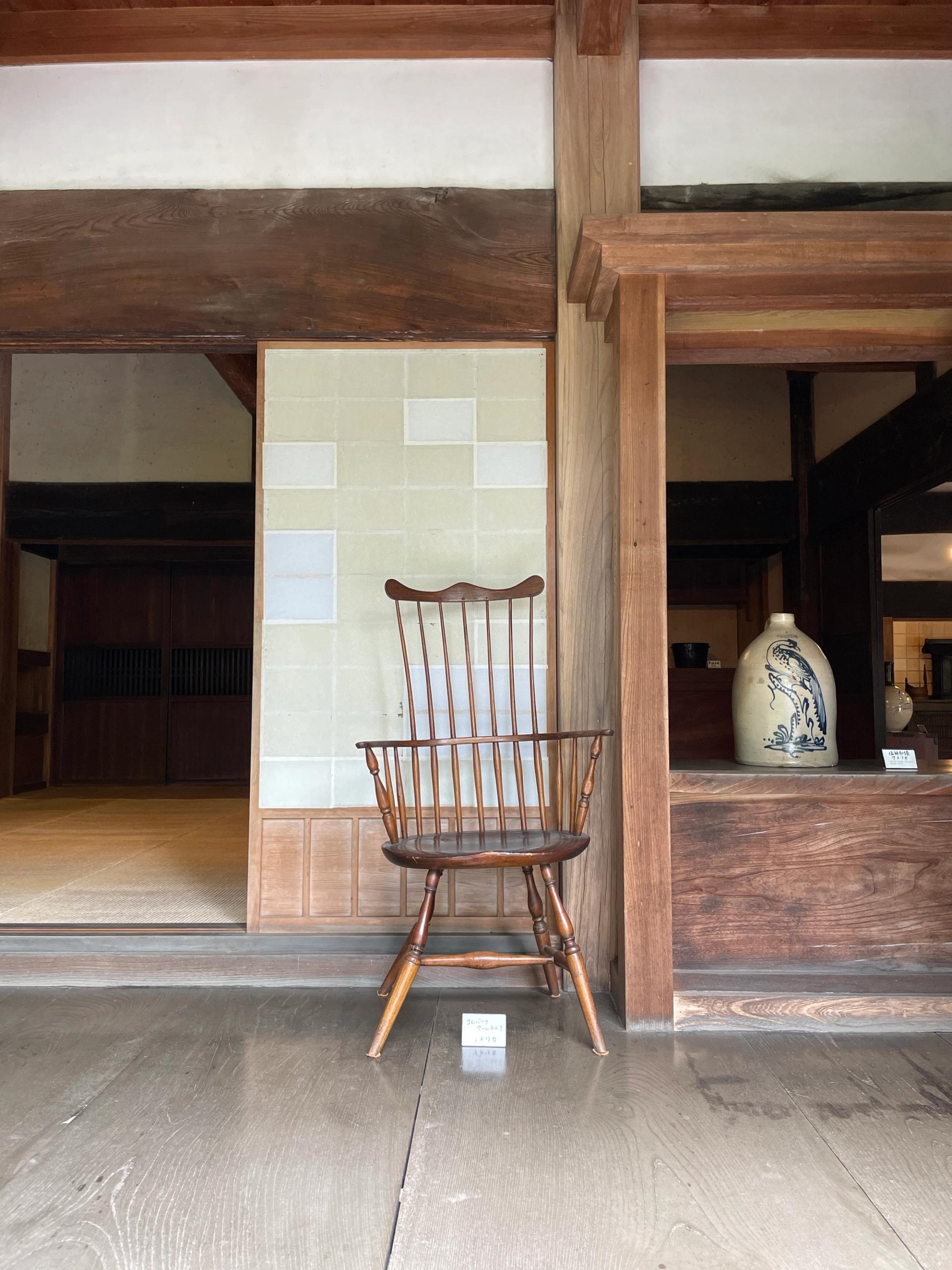
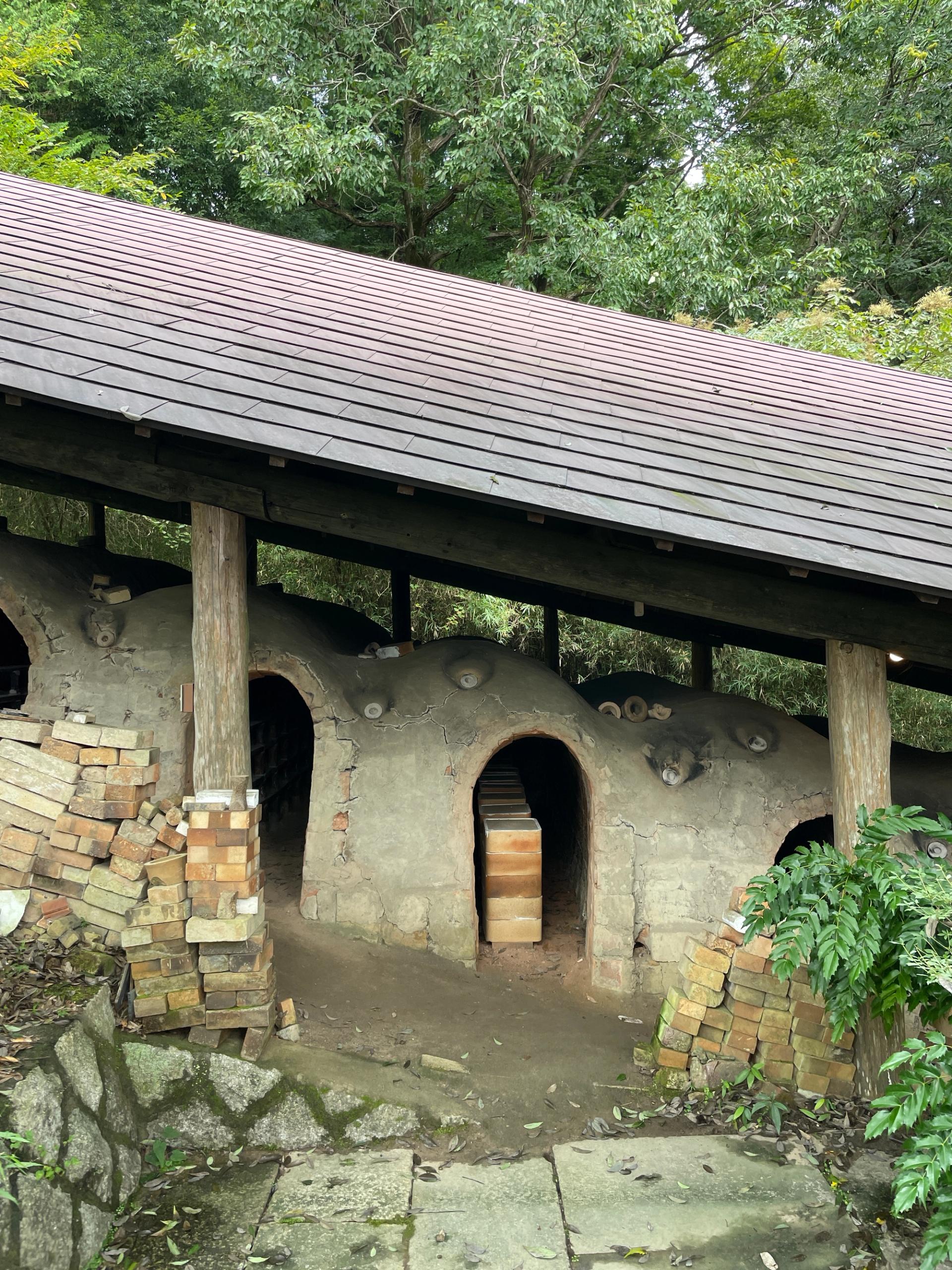
The first and main tip I would give is to visit Shoji Hamada’s former home and kiln, now the Hamada Memorial Mashiko Museum of Ceramic Art, which preserves his legacy and showcases his work alongside pieces by Yanagi, Kawai, and others in the Mingei movement.
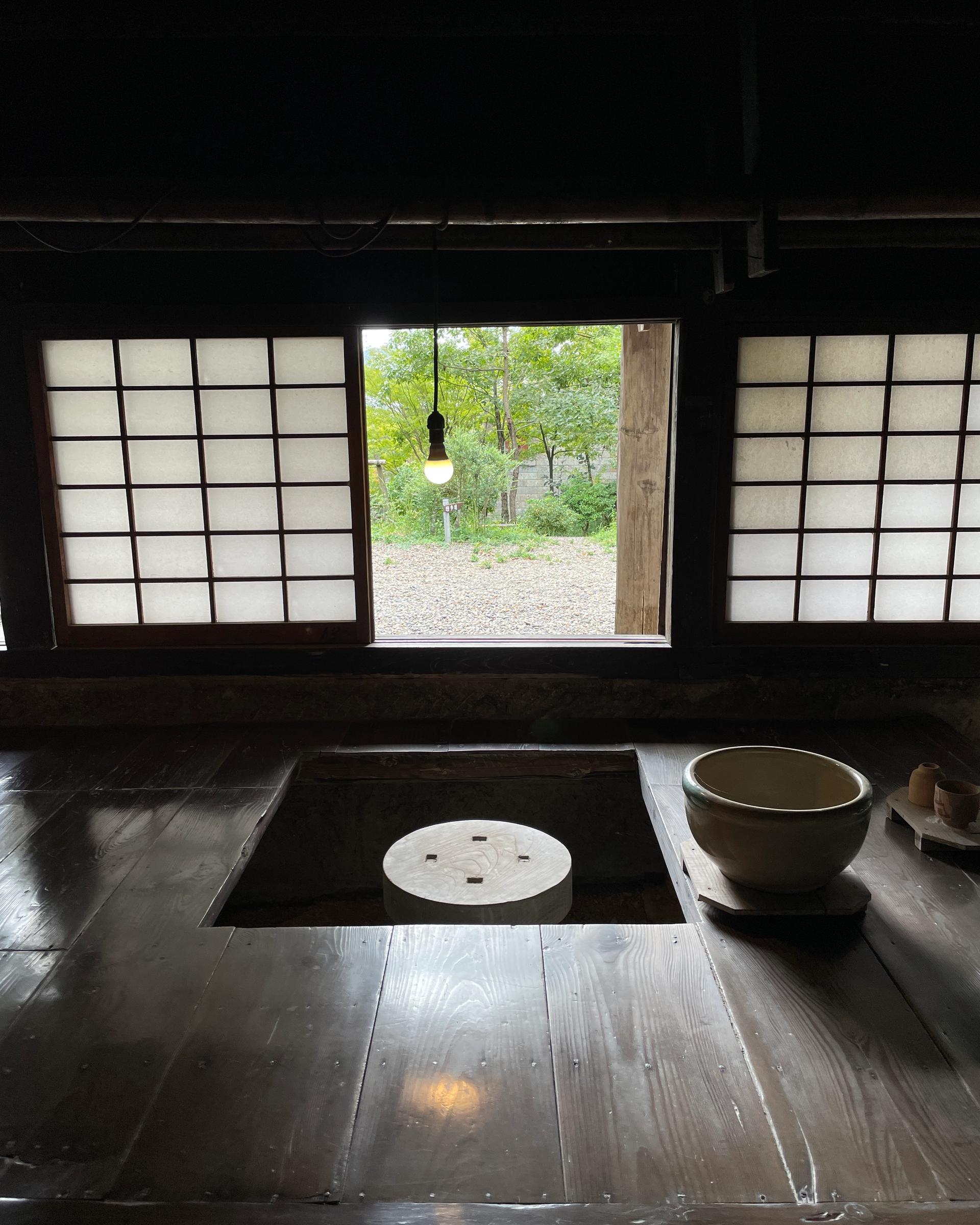
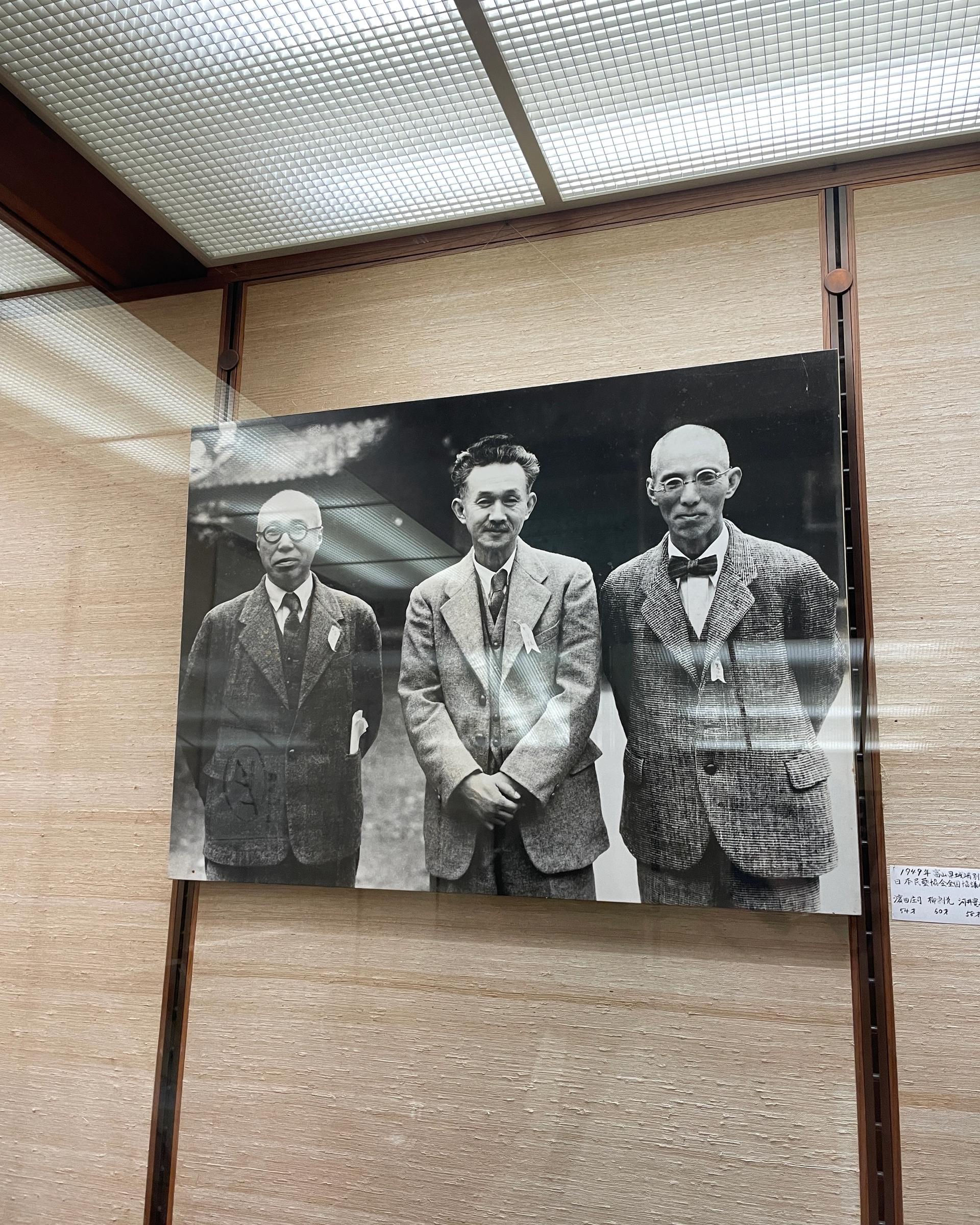
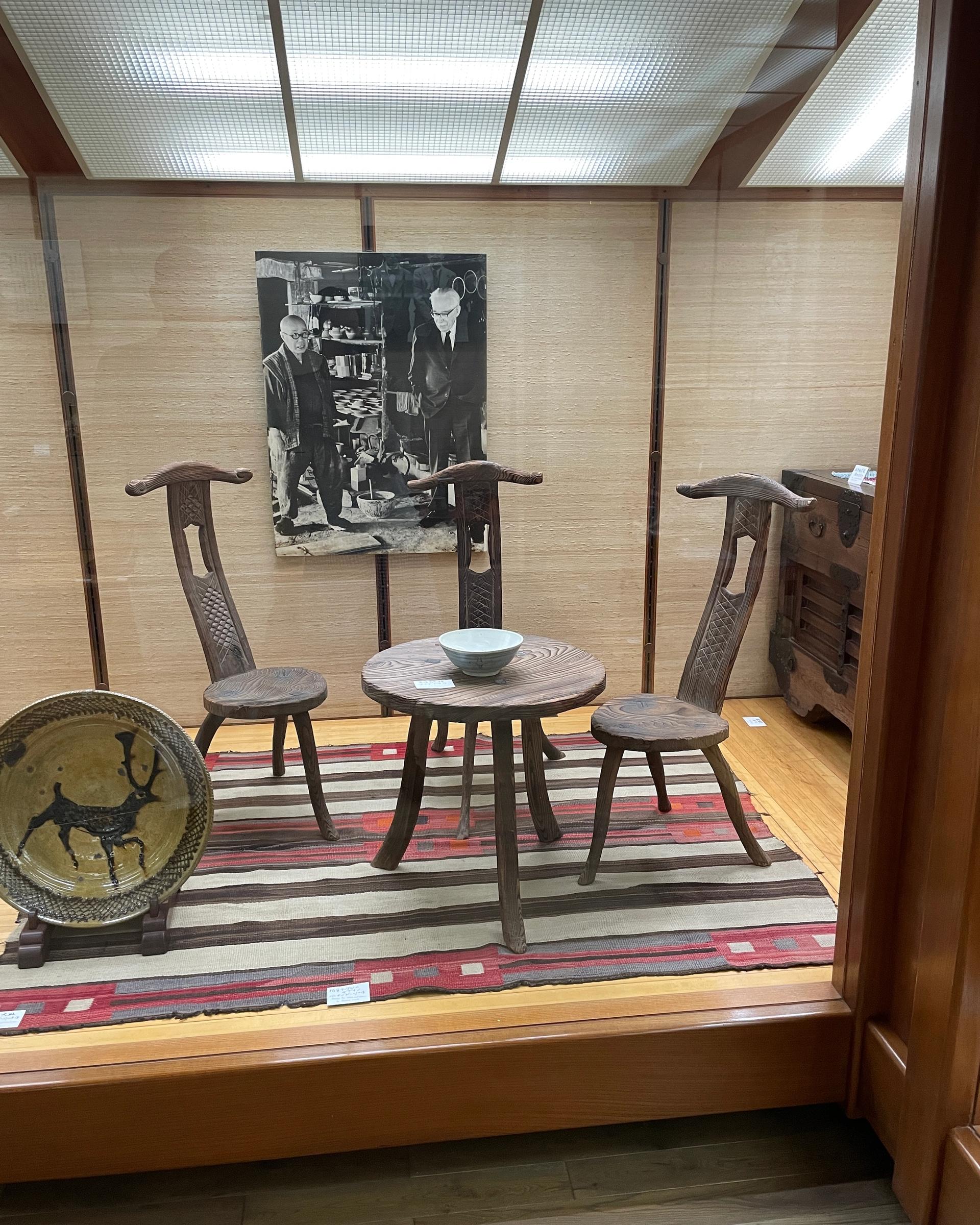
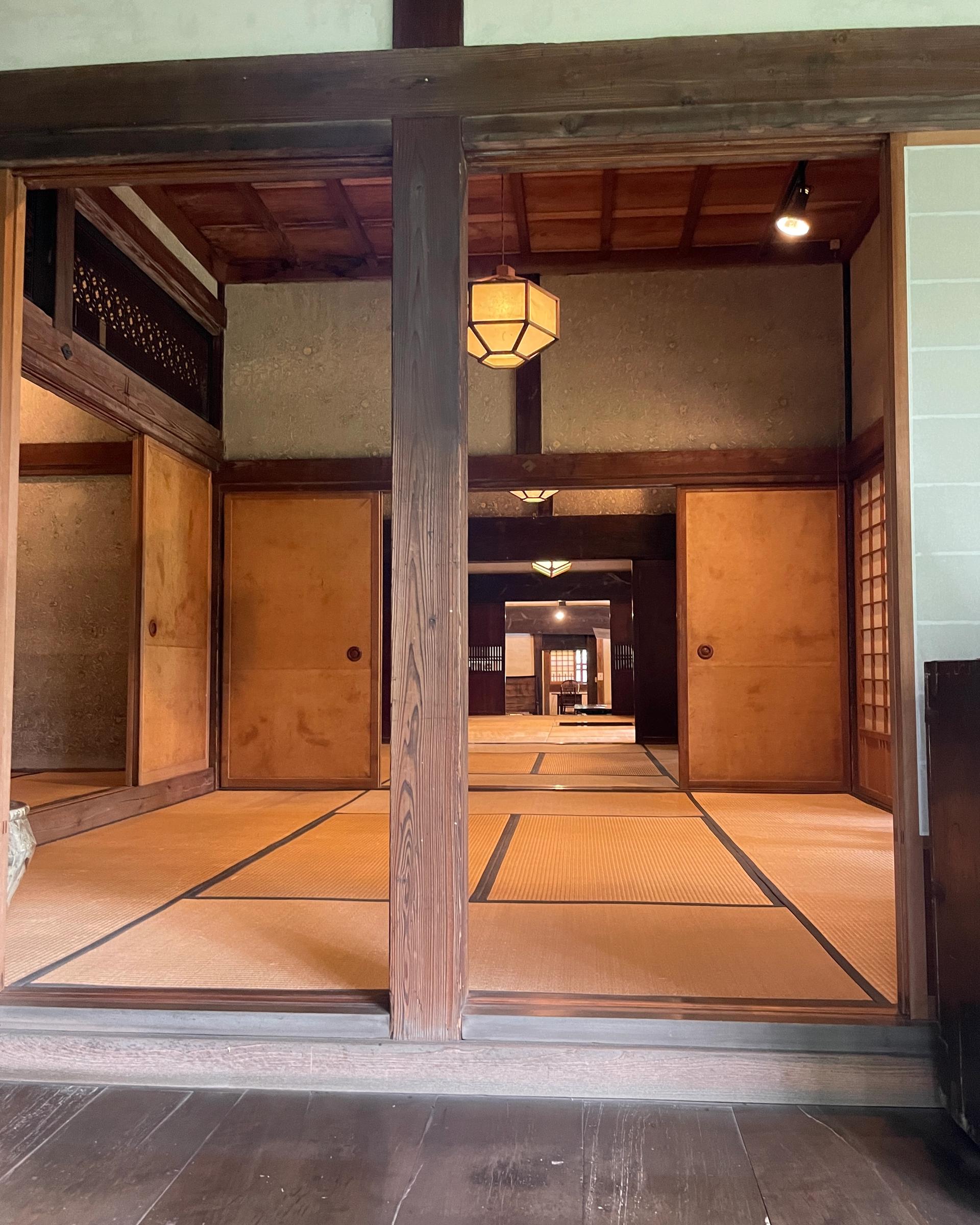
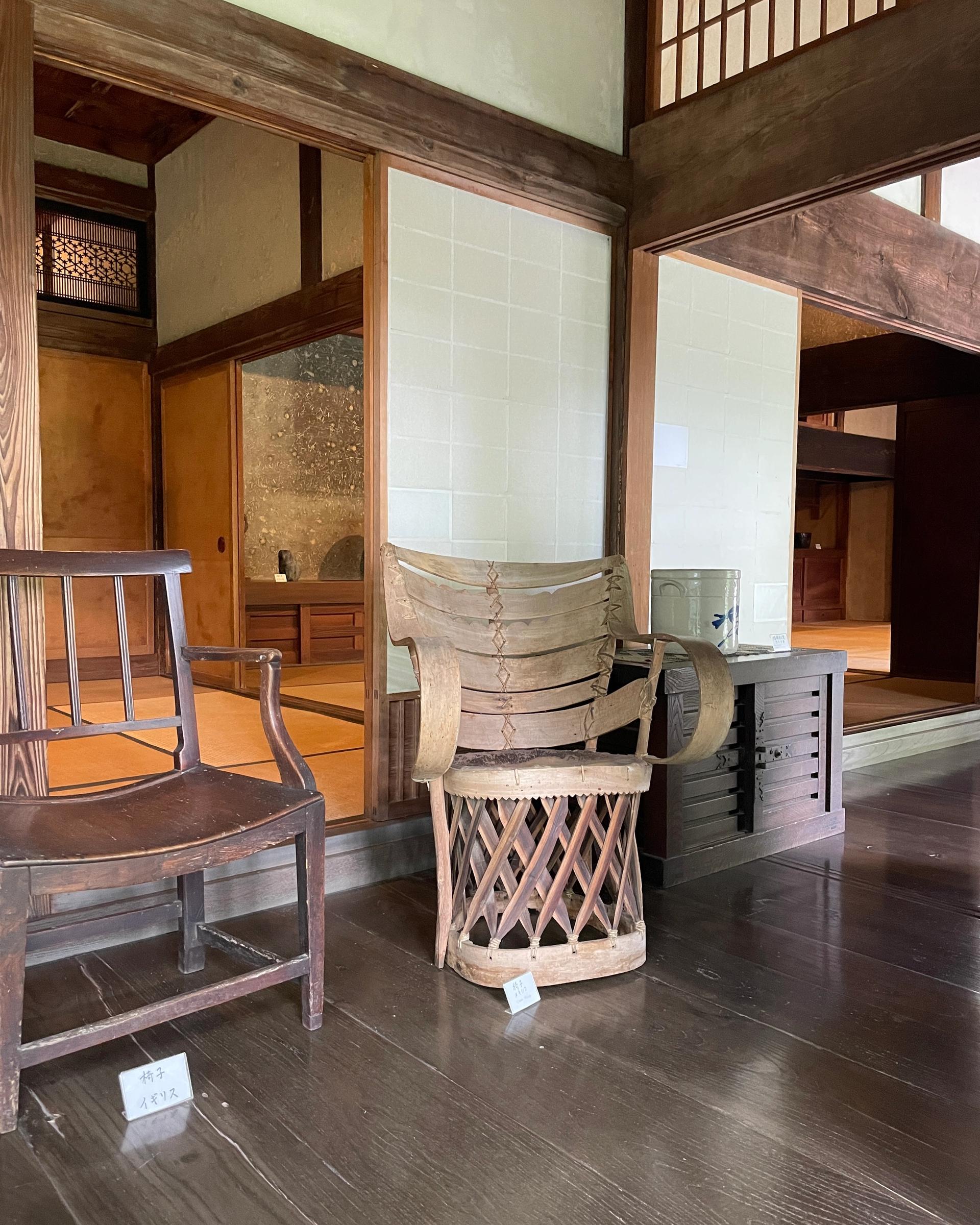
Really loved seeing the house and all the amazing furniture and finishings at the Shoji Hamada museum. This was Hamada's house.
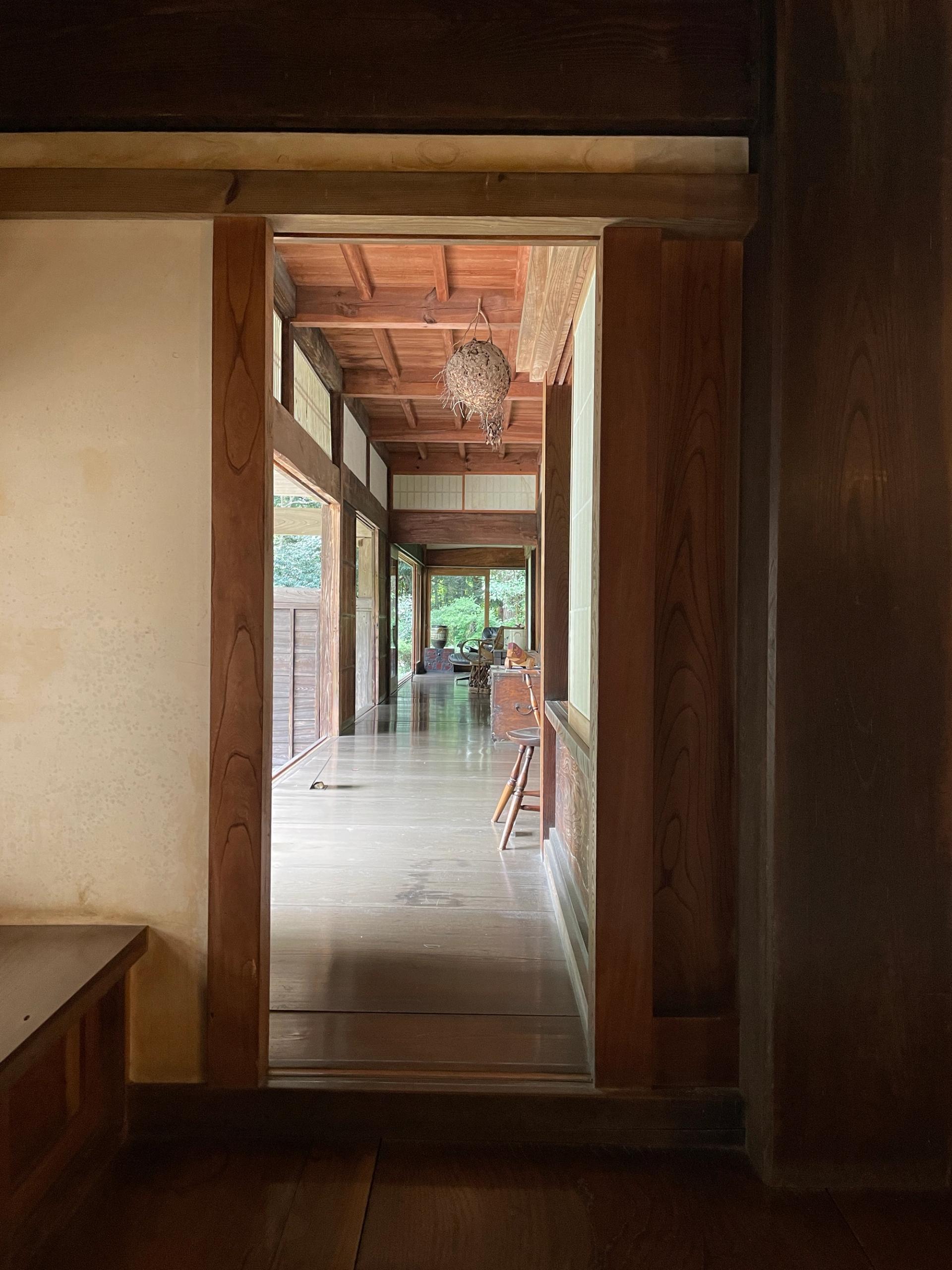
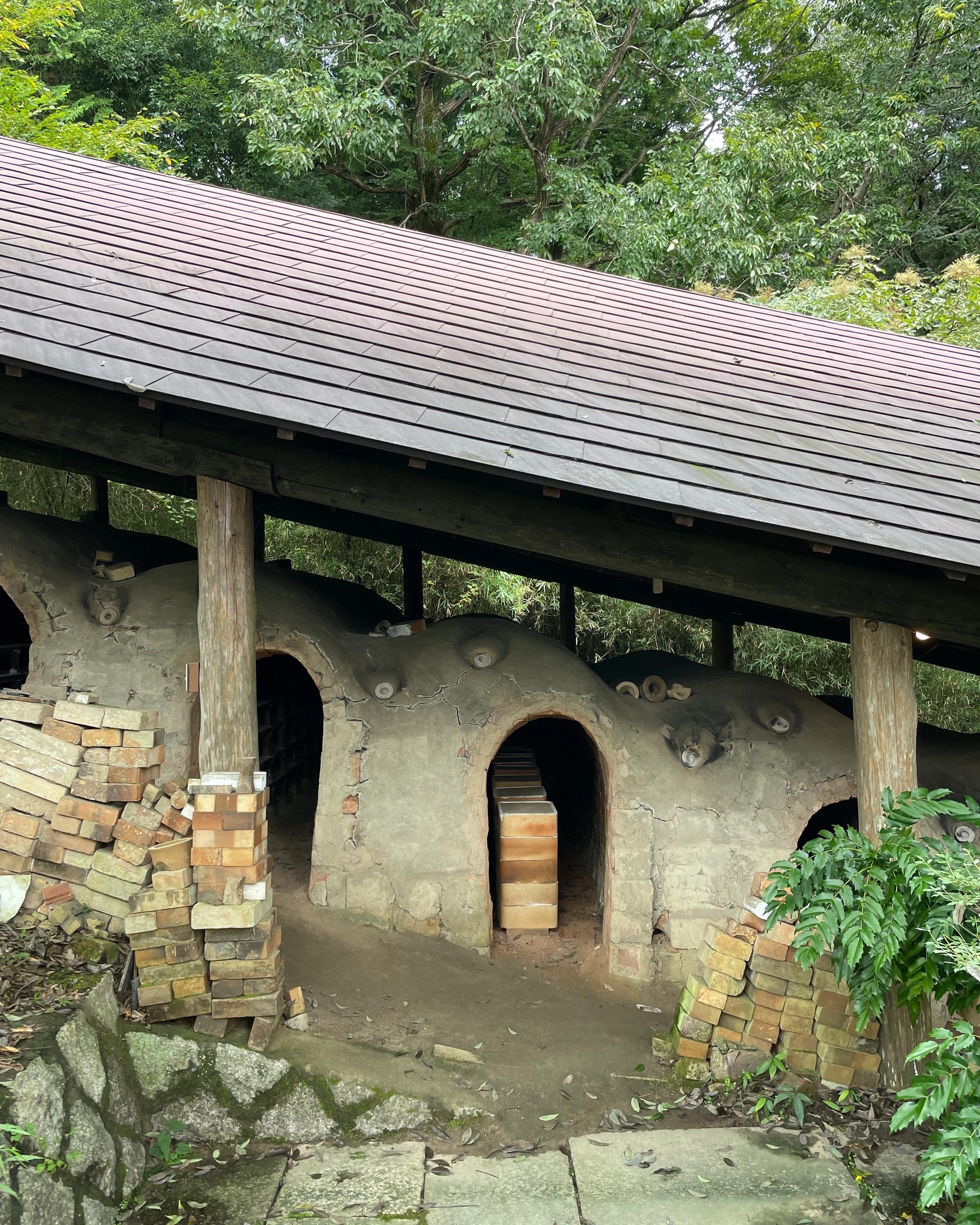
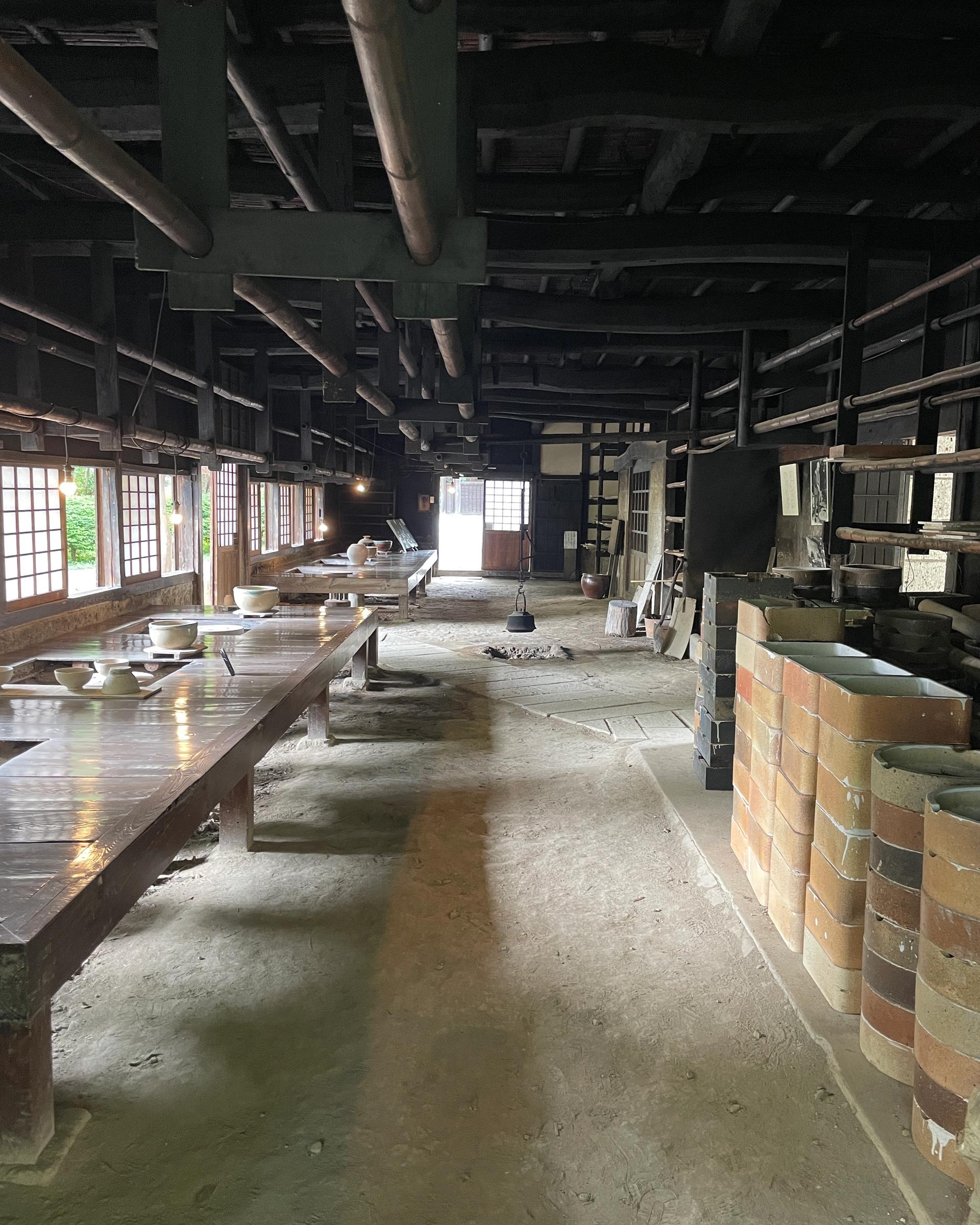
Pottery Shops in Mashiko
Most of the pottery shops in Mashiko are clustered along the town’s main street, known as Jonaizaka Pottery Street. It’s a nice street to stroll down, with shop after shop selling a variety of ceramics. None of the shops stood out to us in particular on this visit.
You’ll also find plenty of pottery in antique shops and lifestyle stores around town, which often stock a mix of vintage items, ceramics, and handmade goods from local craftspeople. I have mentioned our favourite ones below.
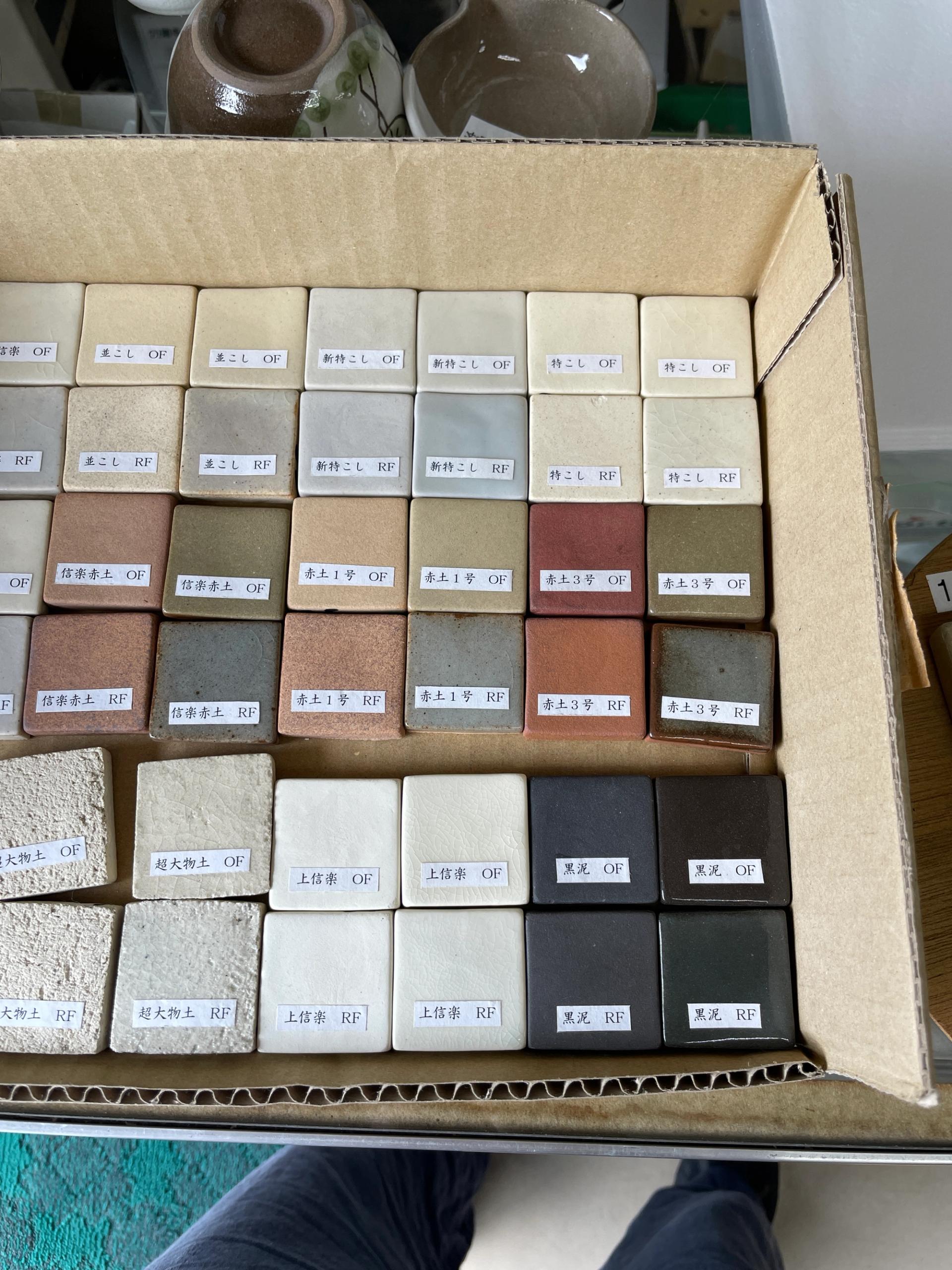
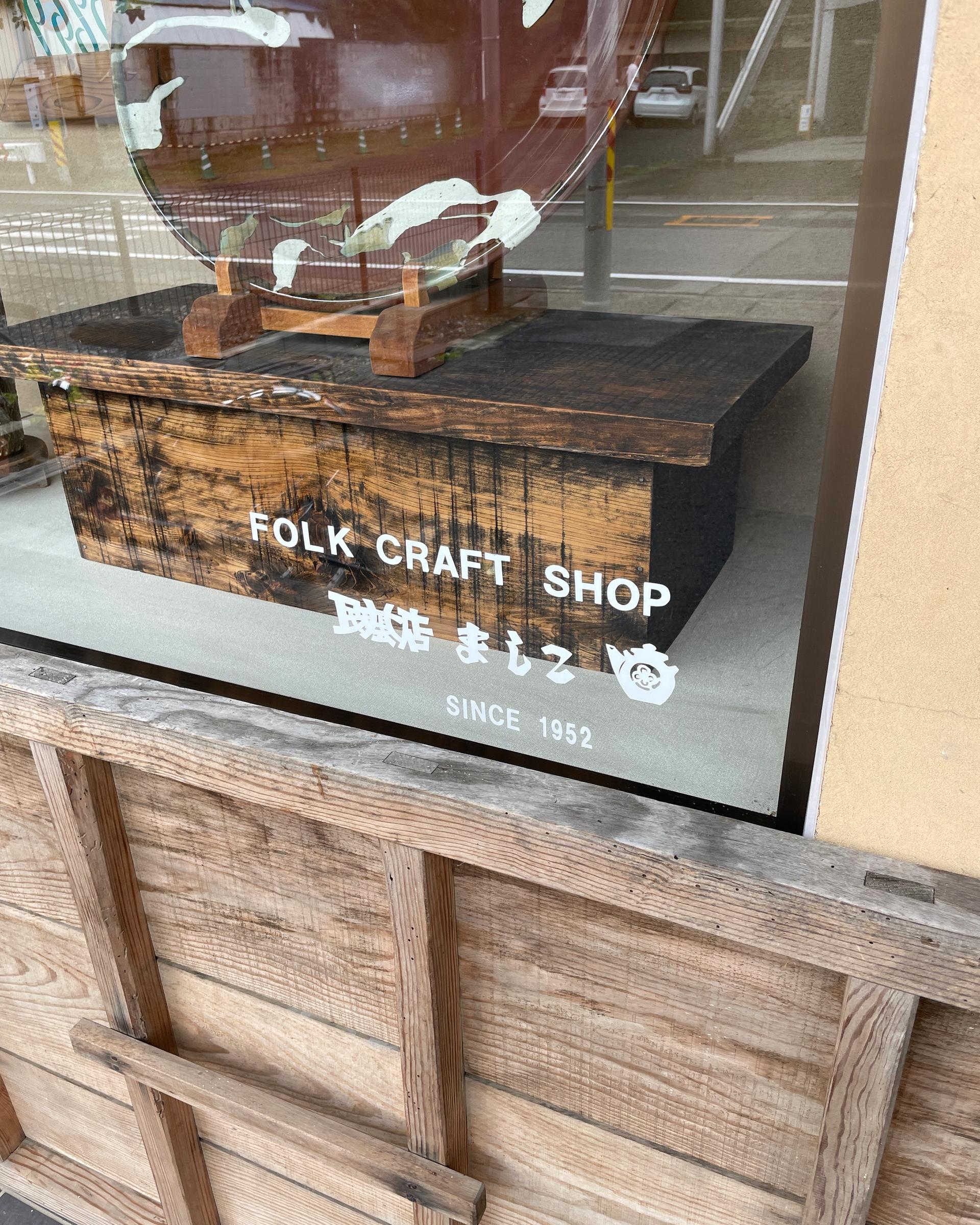
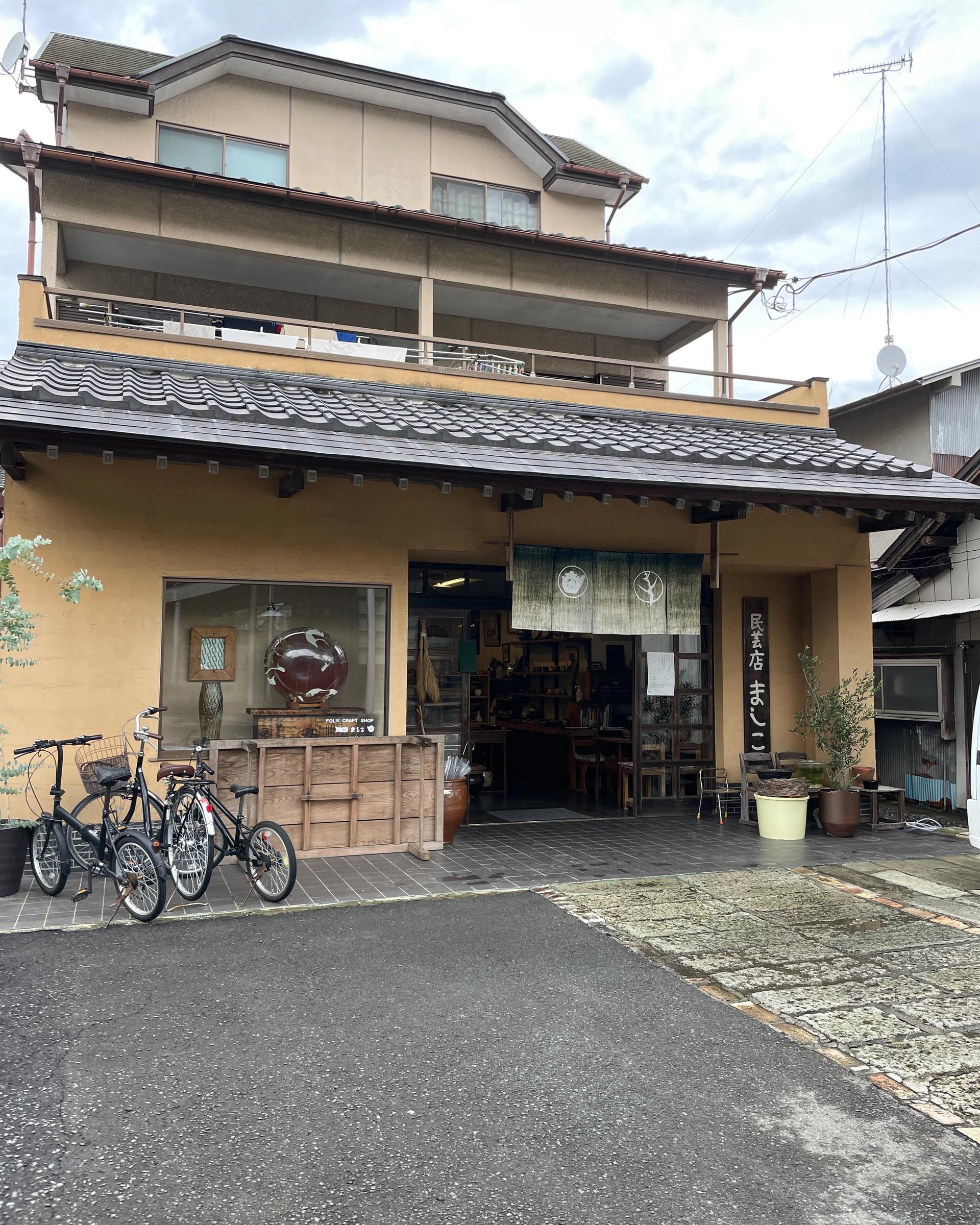
Mingei ten (folk crafts) store is a great pottery and craft store. I got a brown mug from here that we use everyday in the Klay studio that I often get asked about.
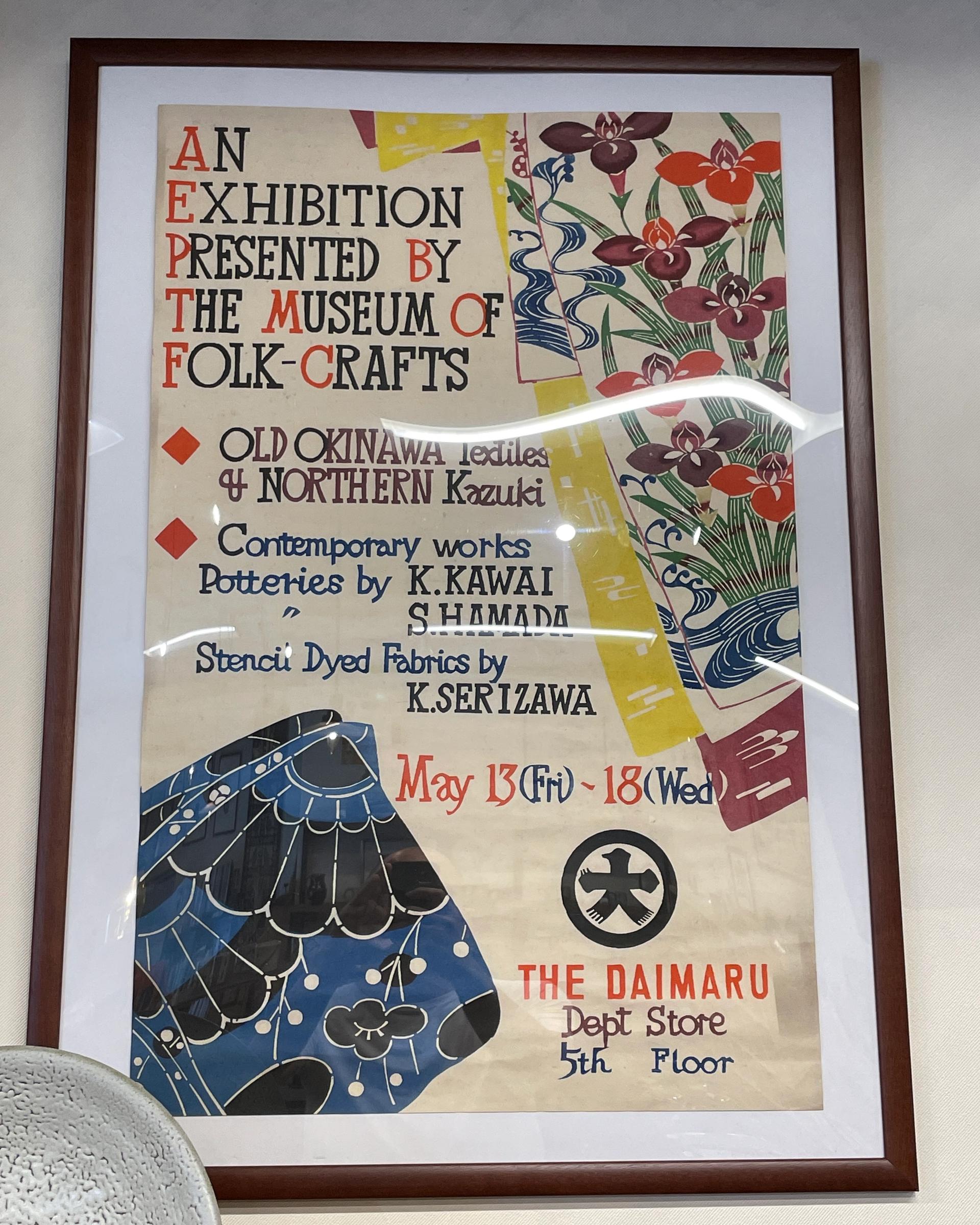
One of our favourite stops in Mashiko was Pejite (they also have a store in Tokyo! On my Tokyo tips page too). It’s a beautifully curated store that sells a mix of local pottery, refurbished antique furniture, handmade glassware, clothing, and other crafts. The space itself is really incredible too. No photos allowed inside :)
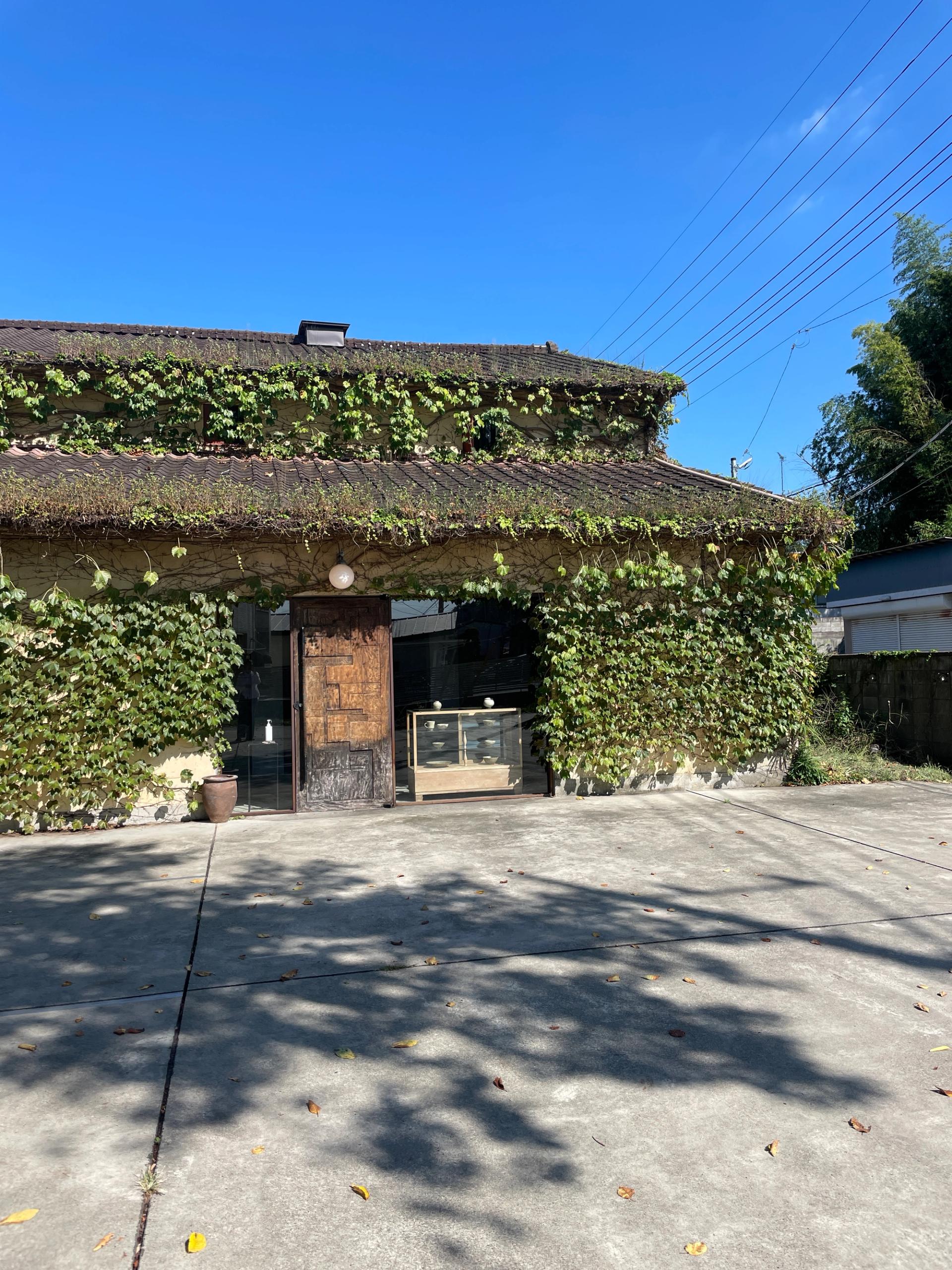
Tsukamoto is a 150 year old pottery company in Mashiko. We used to sell some of their beautiful pottery (and hope to again soon!). When we visited Mashiko I emailed them to ask if we can visit. Shin-san generously showed us around their incredible factories. They also have a showroom where you can buy their pottery. I don't think they give tours to the public, but I do know they run pottery workshops there! Maybe checkout their website for more information. Their website also has some helpful tips for Mashiko, including links to find out about the massive pottery fairs that happen twice a year in Mashiko.
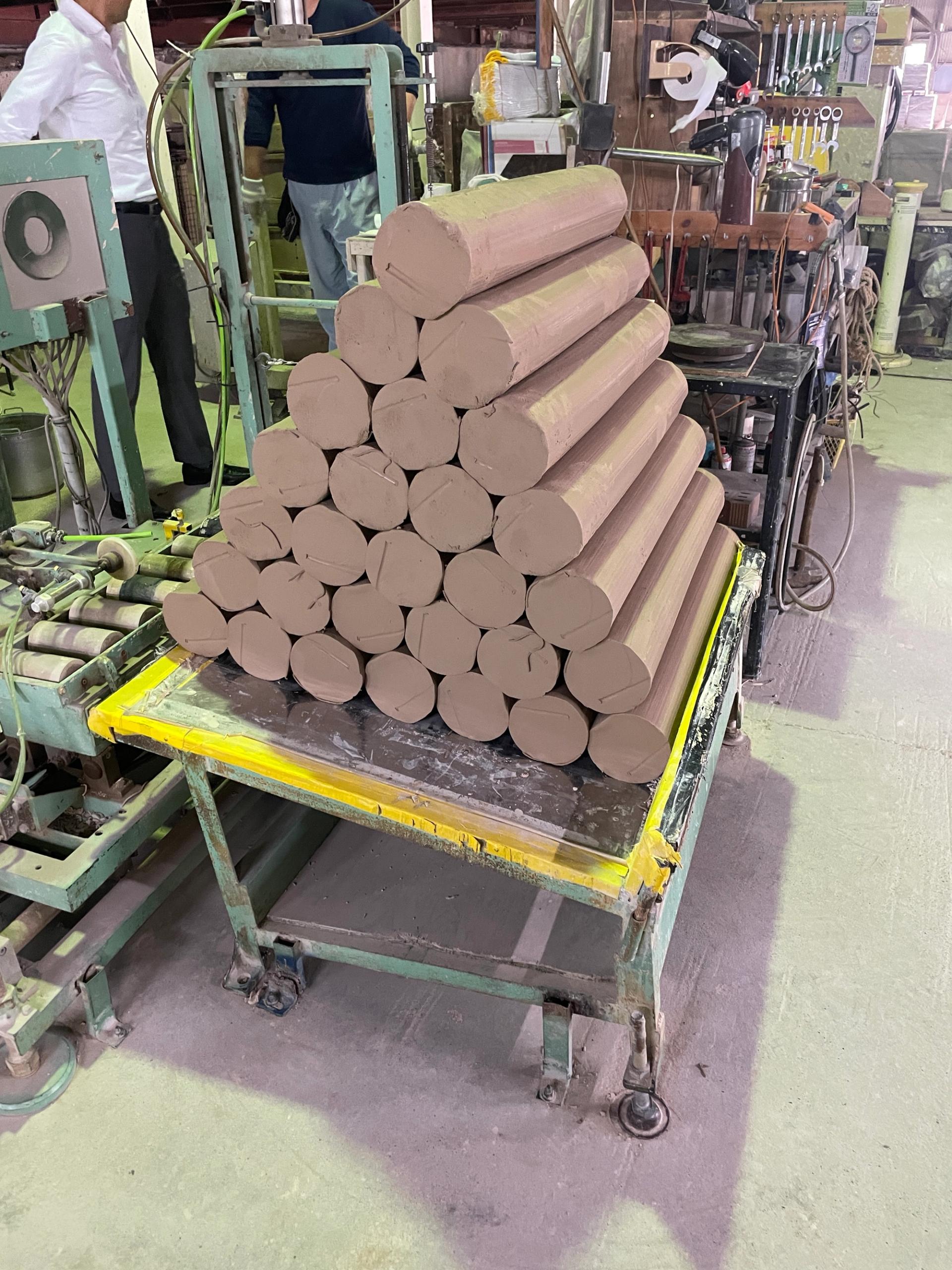
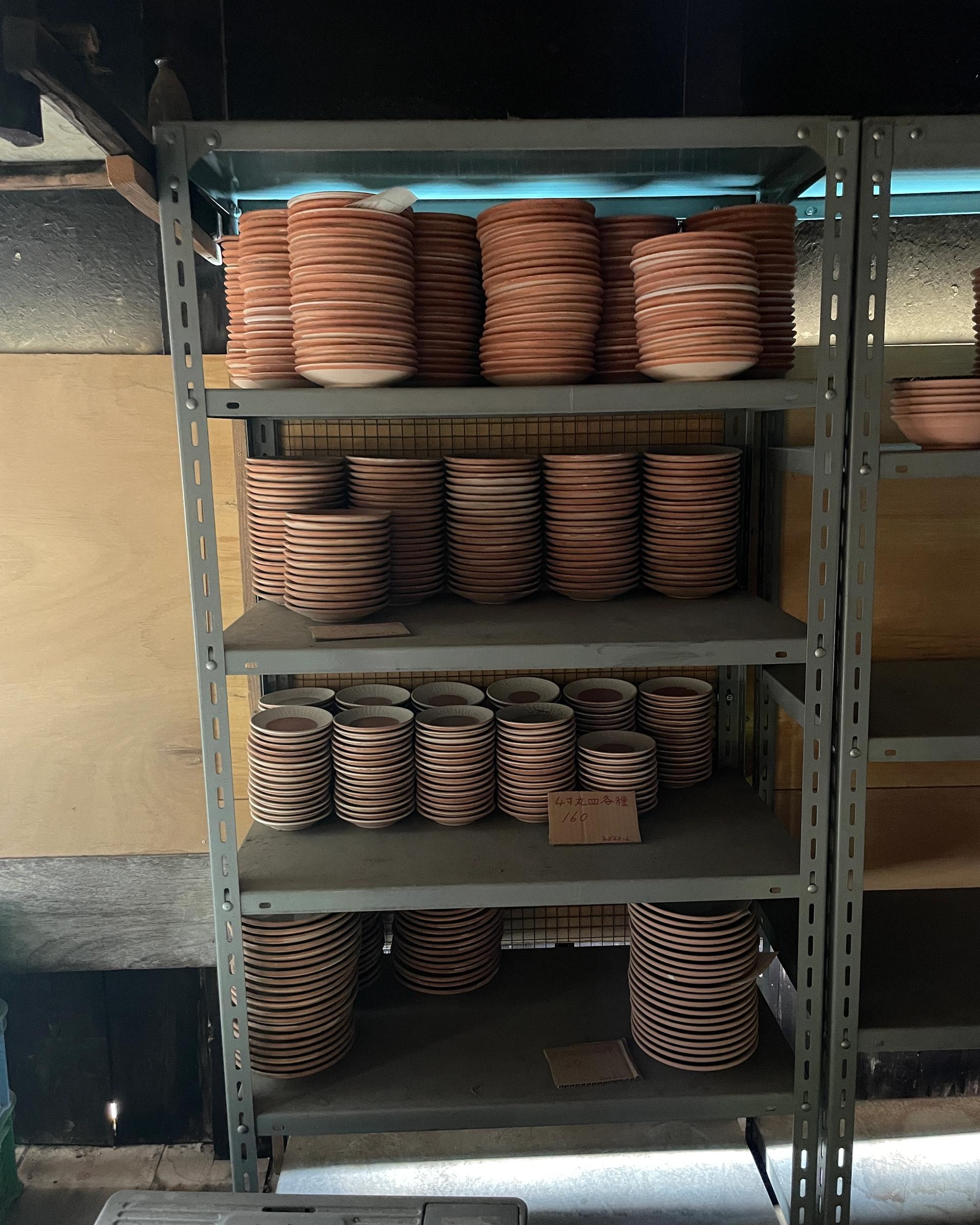
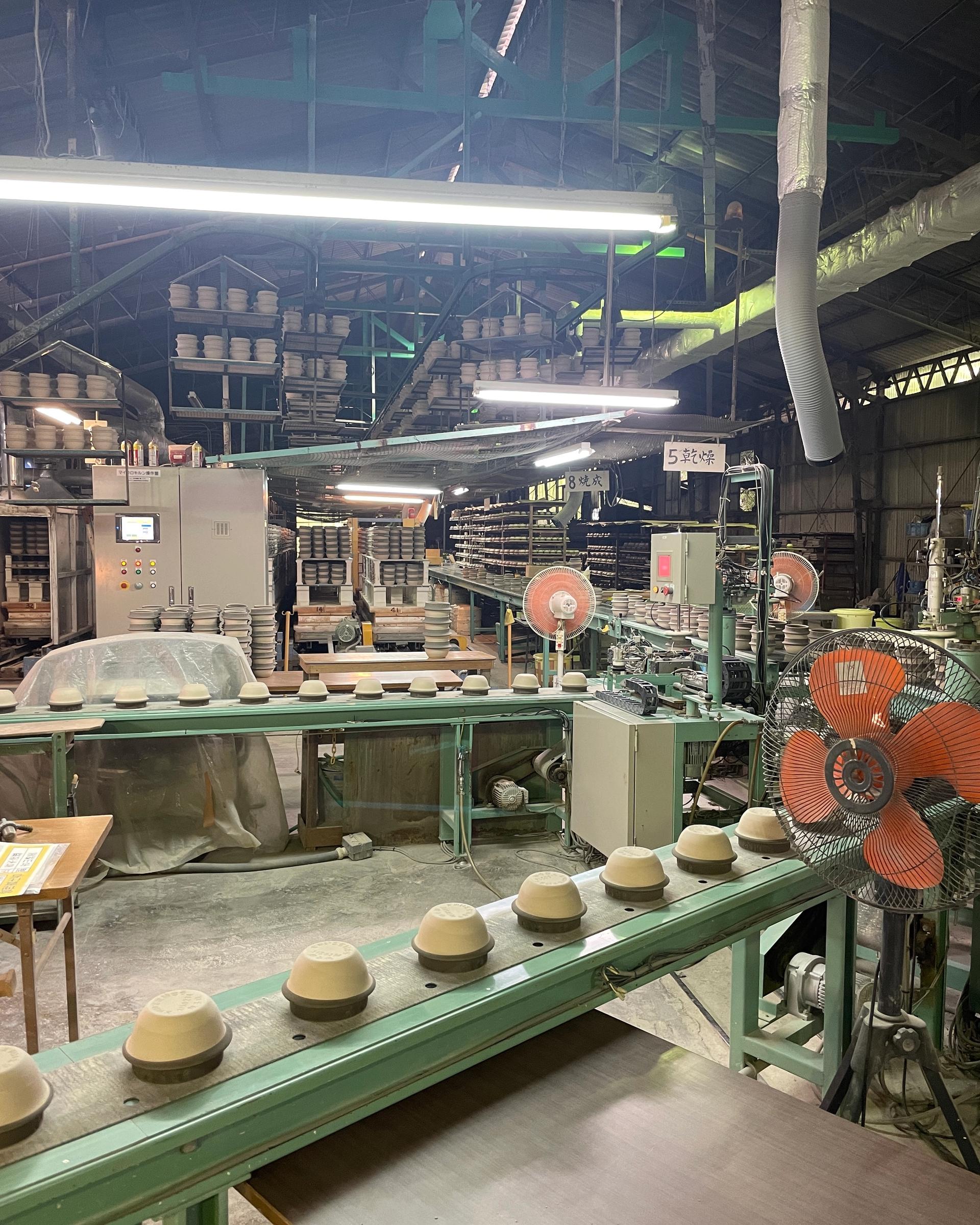
Antique shops in Mashiko
In addition to the amazing pottery and homewares stores in Mashiko there are some of the best antique shops we have ever been to.
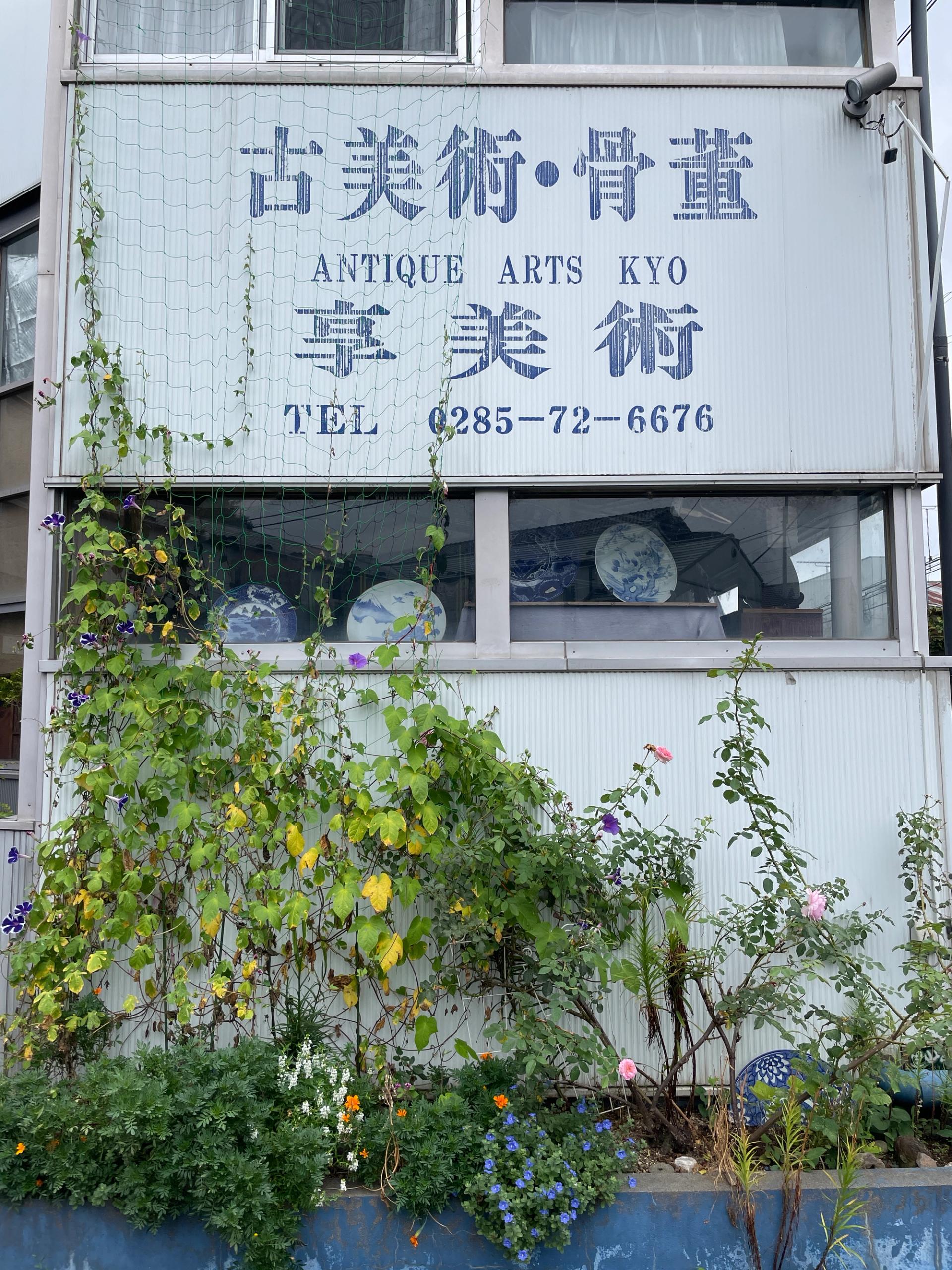
This store just came up as 'Antiques' on google maps. It was probably the biggest antique store we saw in Mashiko and the one we spent the most time in. I got some vintage fashion magazines for a friend. I loved looking through their old doors and screens.
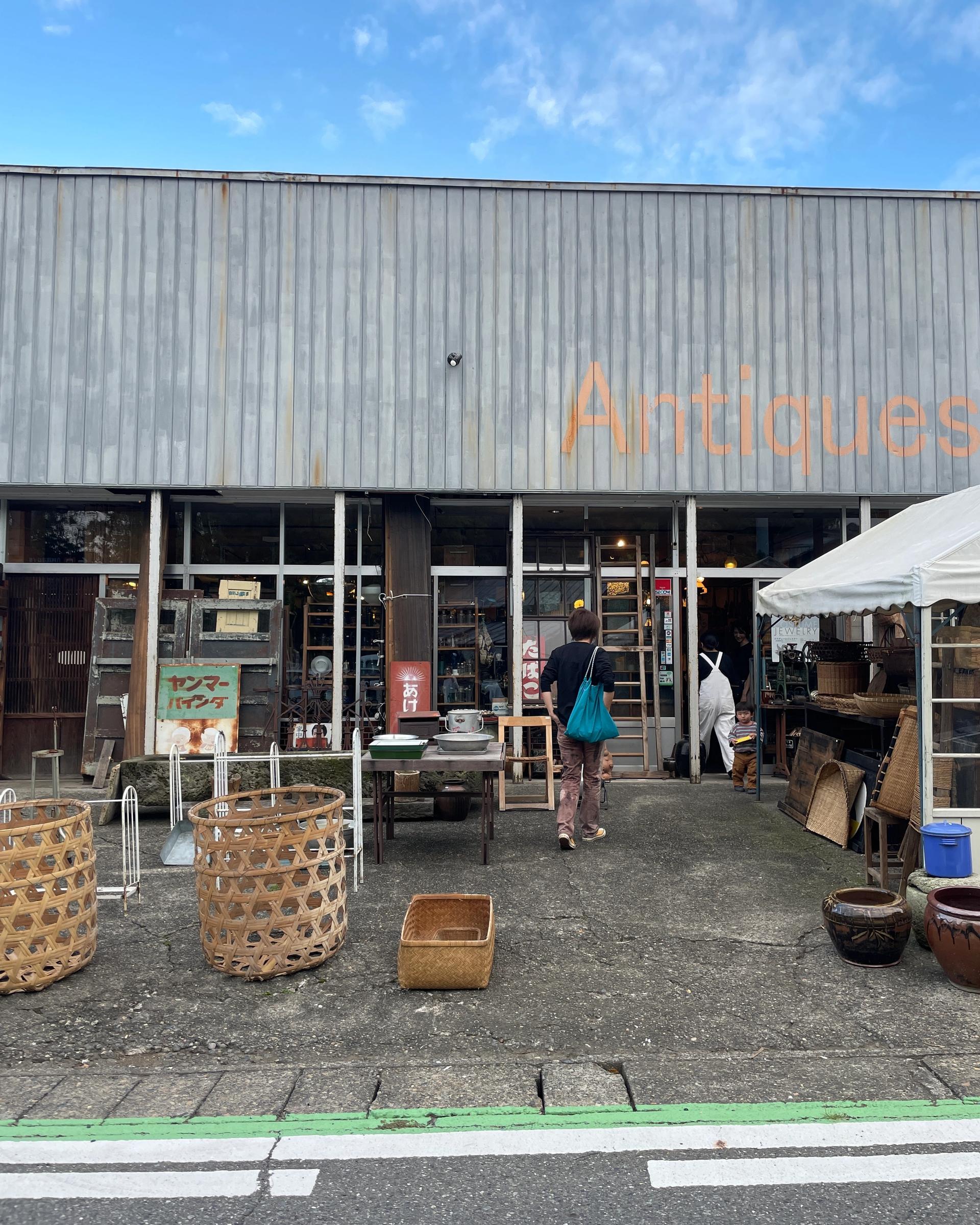
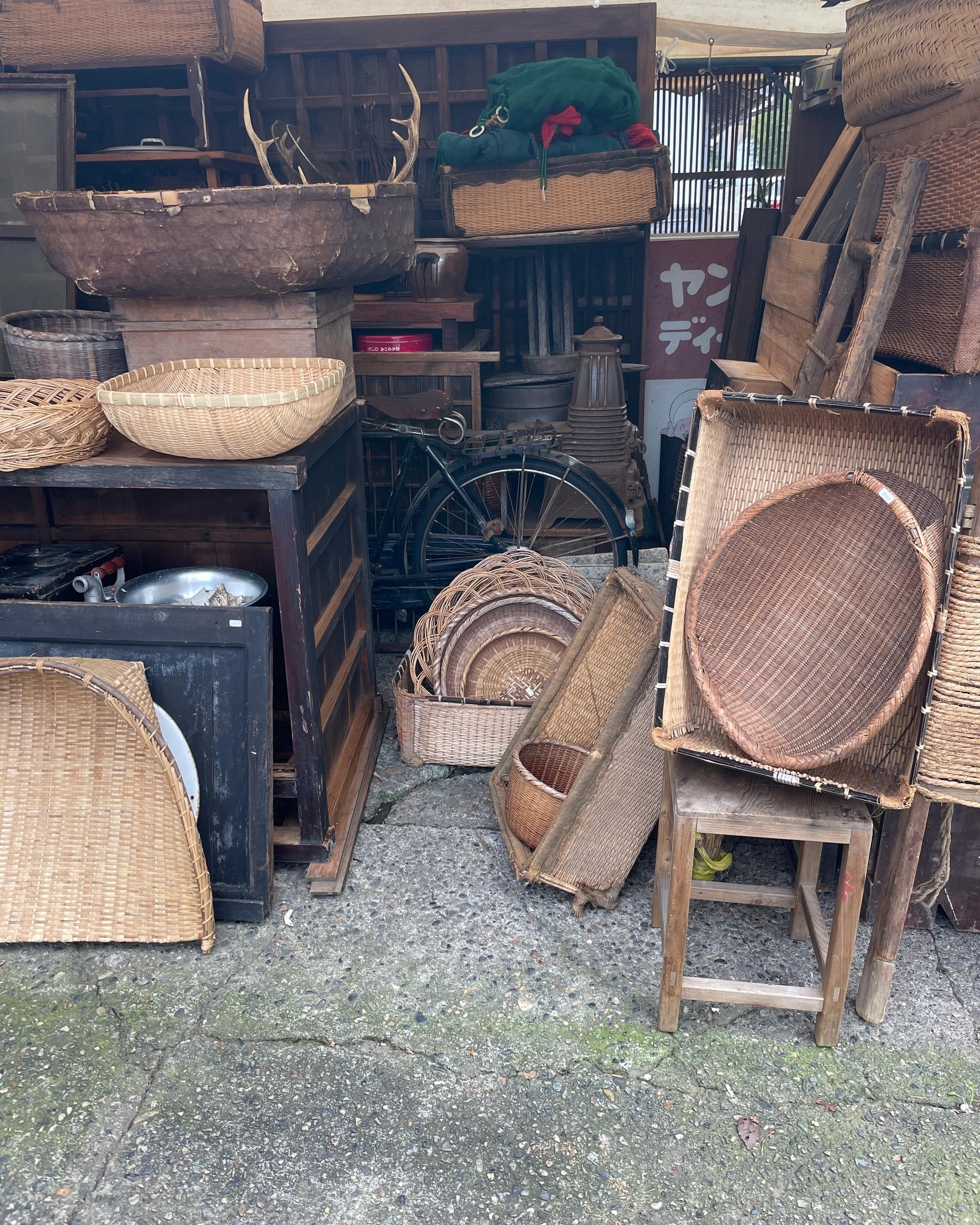
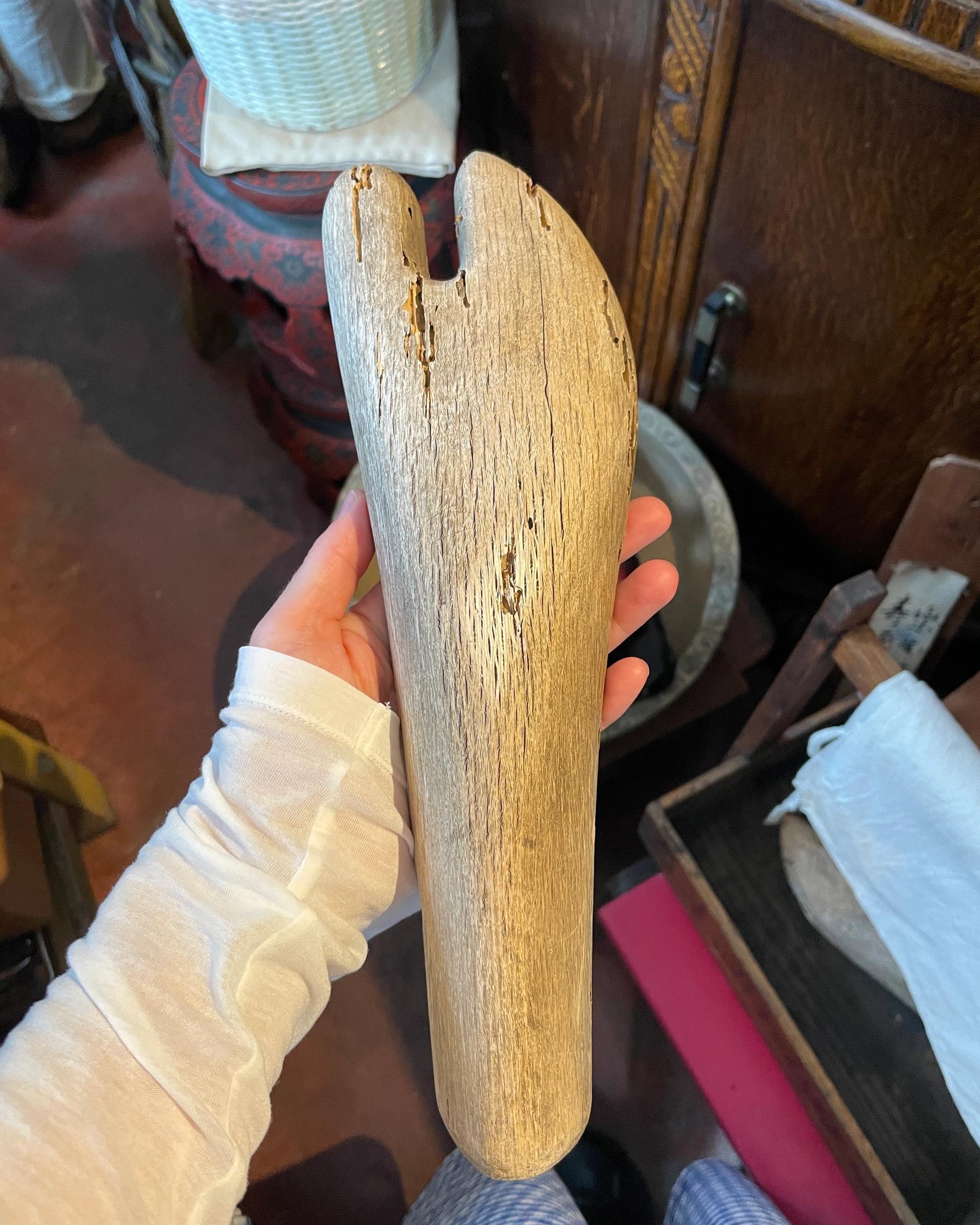
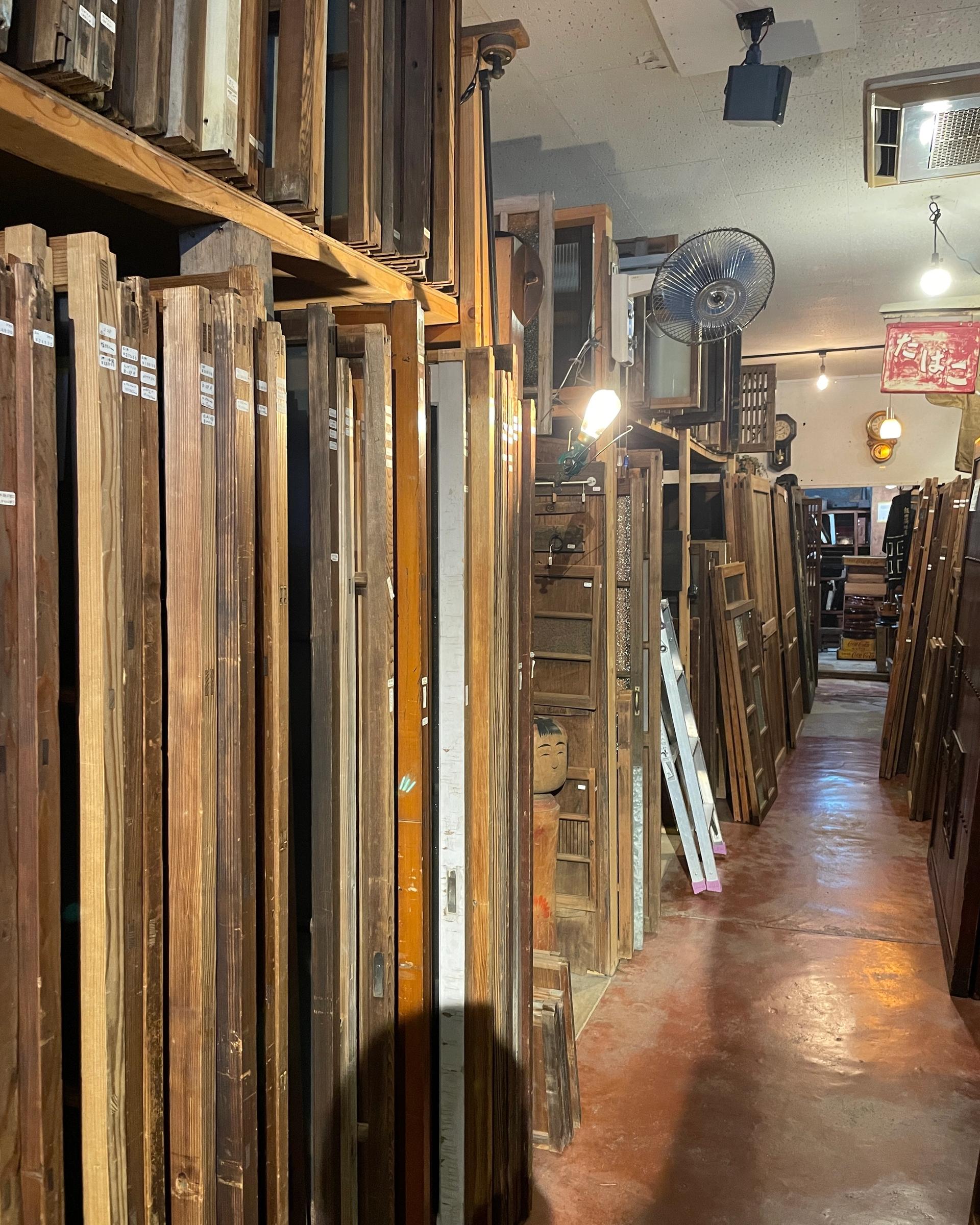
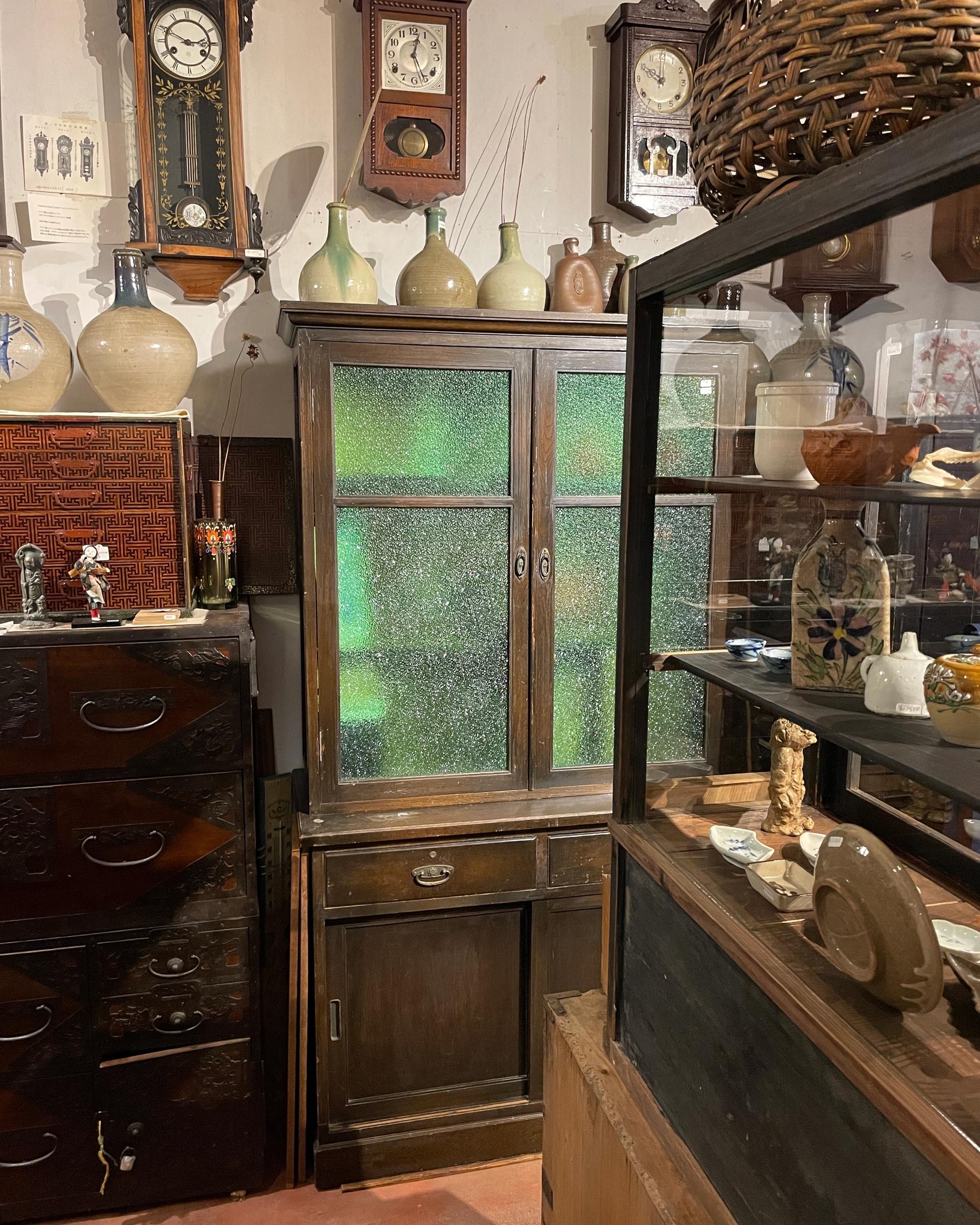
Uchimachi Kojo is a second hand book store (on the same street as Mingei ten!). I got some very good second hand architecture and design magazines from here. We really liked this shop. They have a nice instagram page too.
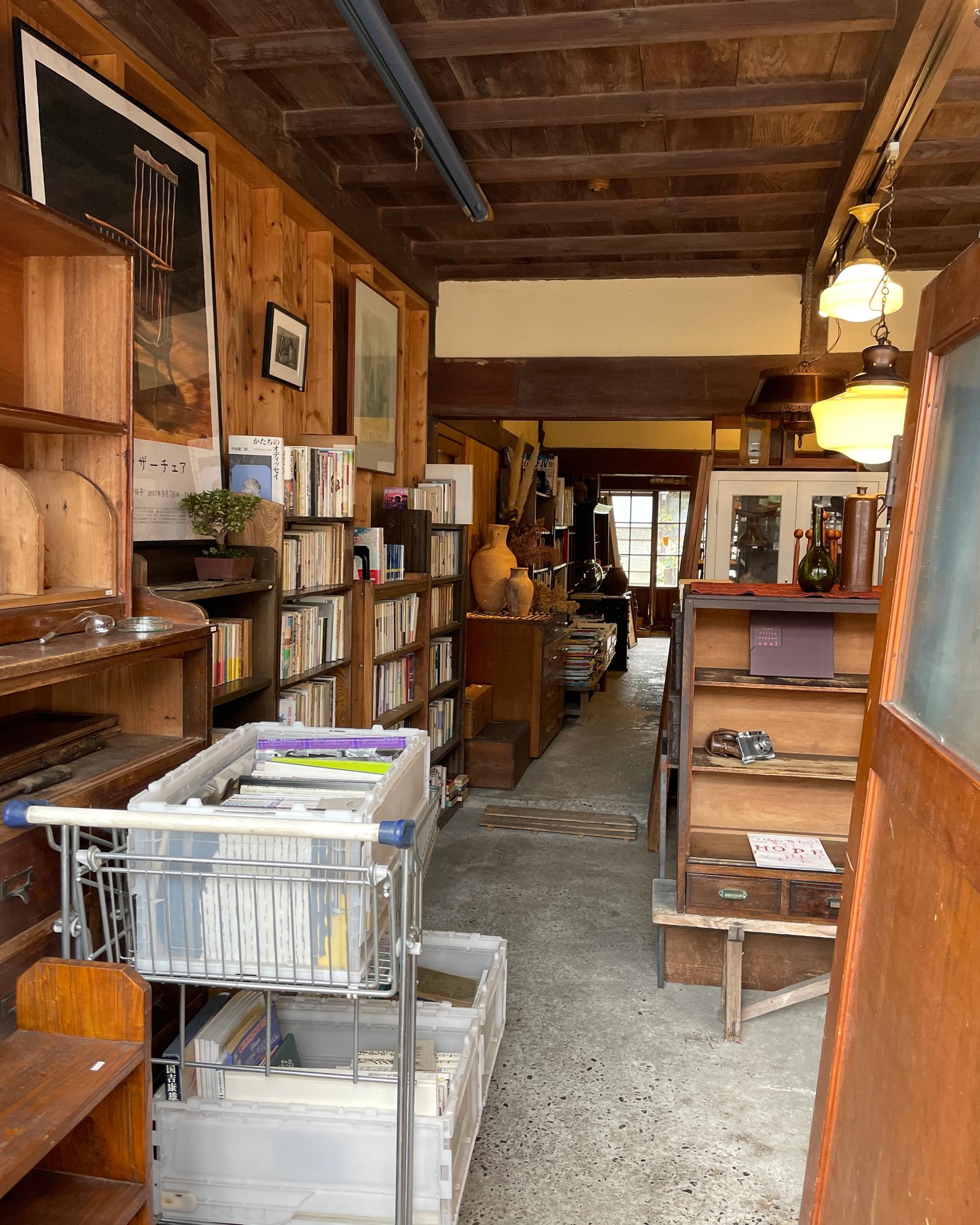
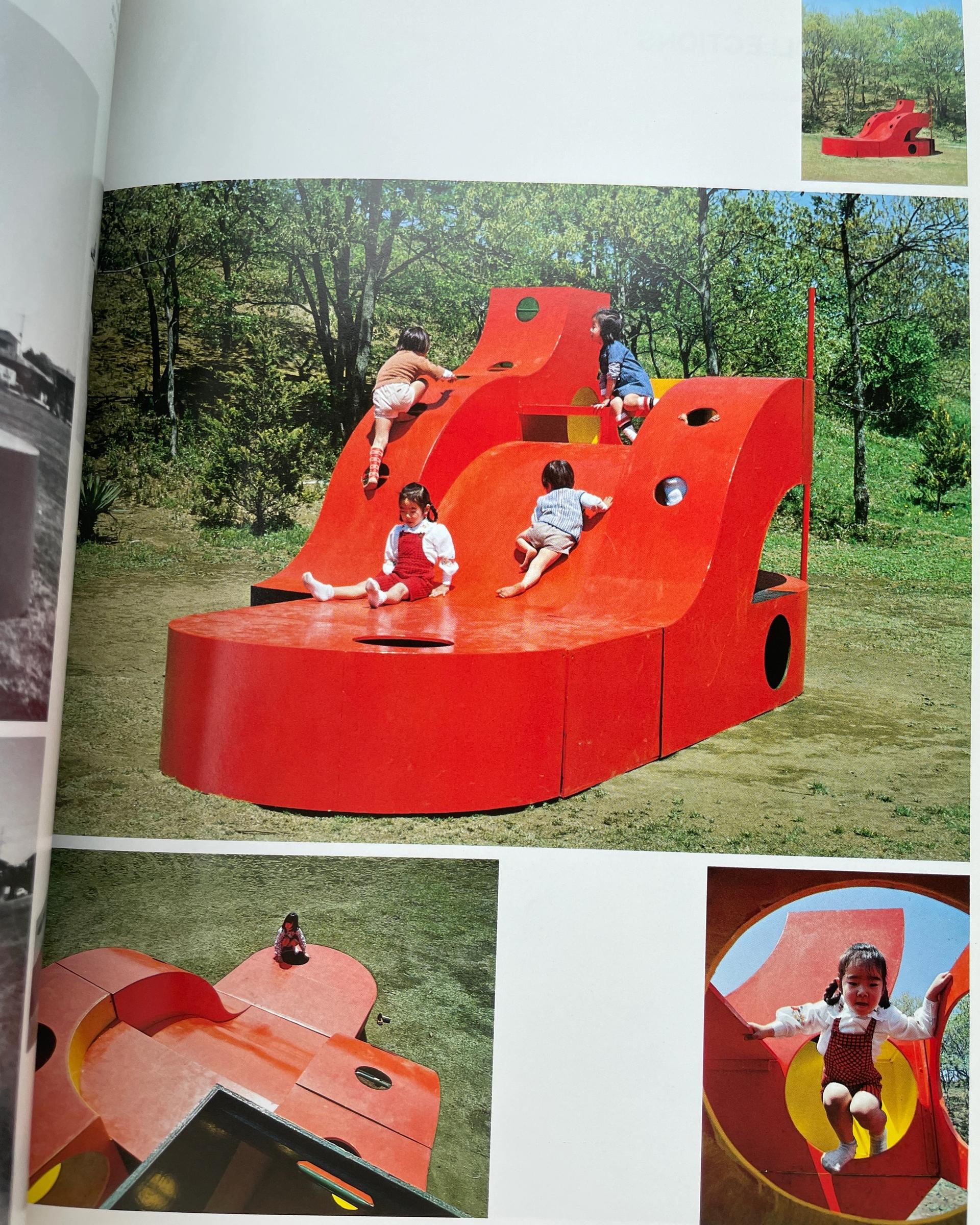
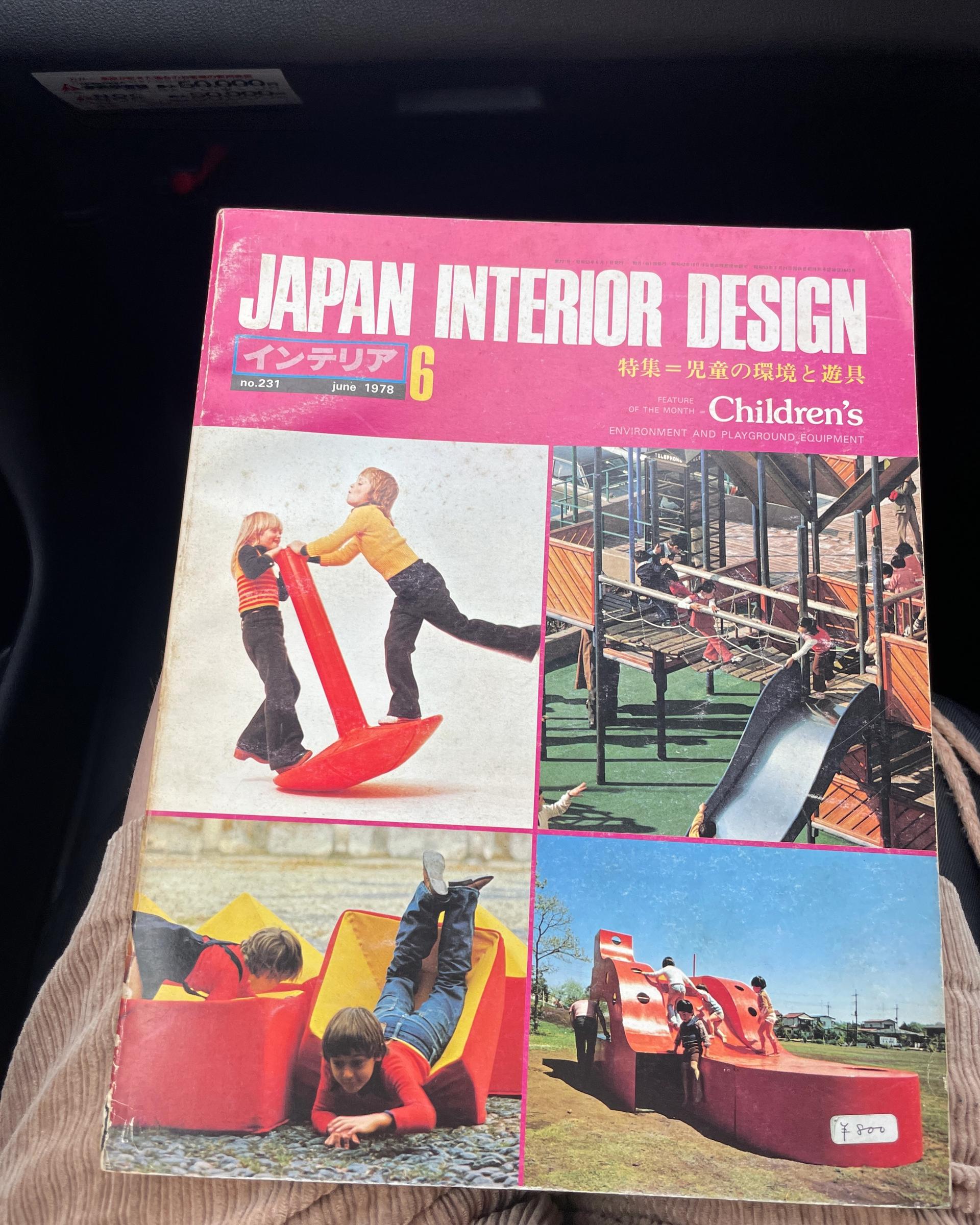
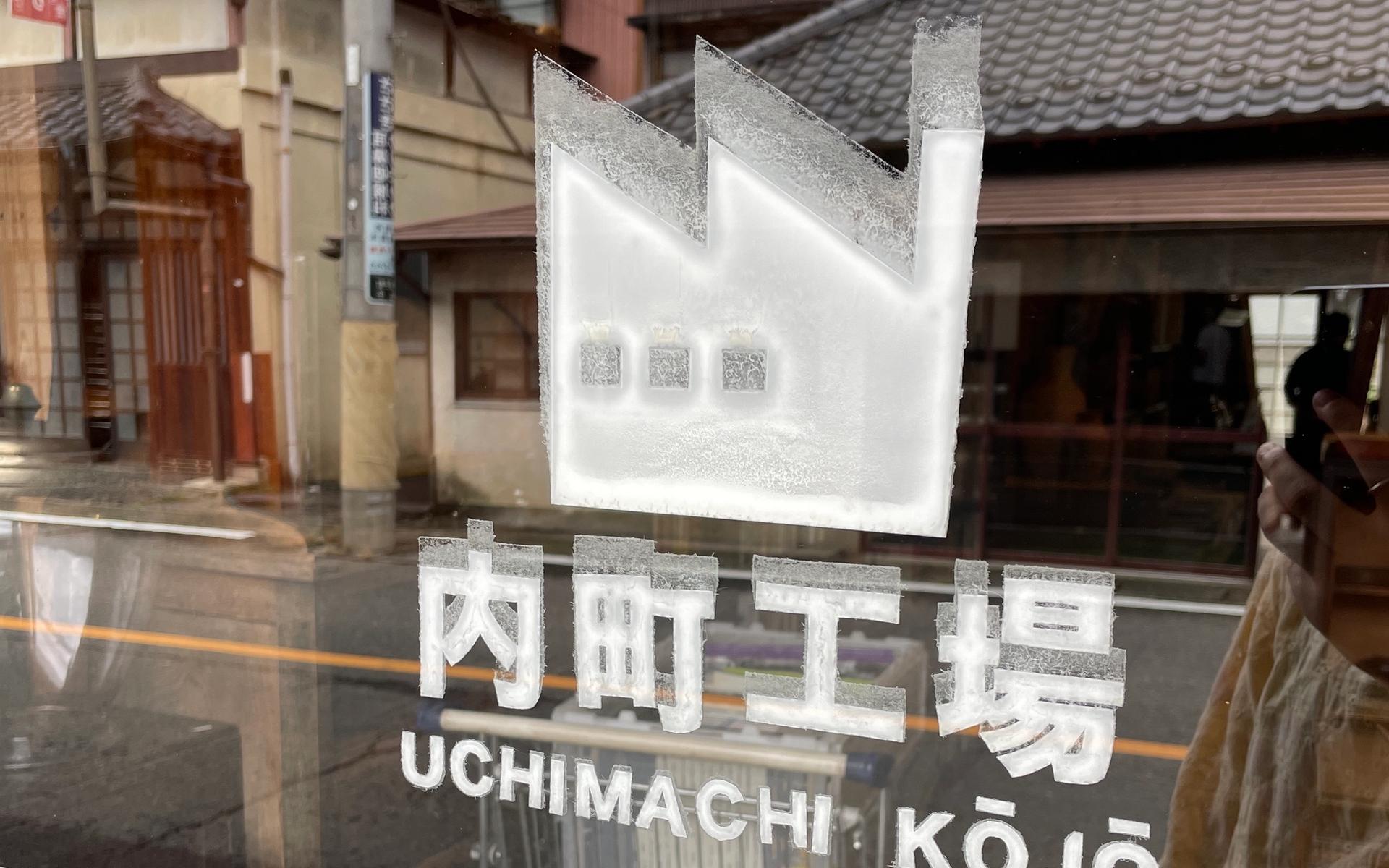
There is a great cluster of antique shops + also a cute coffee shop in this 'shopping mall strip' area. I got quite a few things from one of the shops here. It feels a bit less curated than the other antique shops and more of finding your own gems, which is always fun.
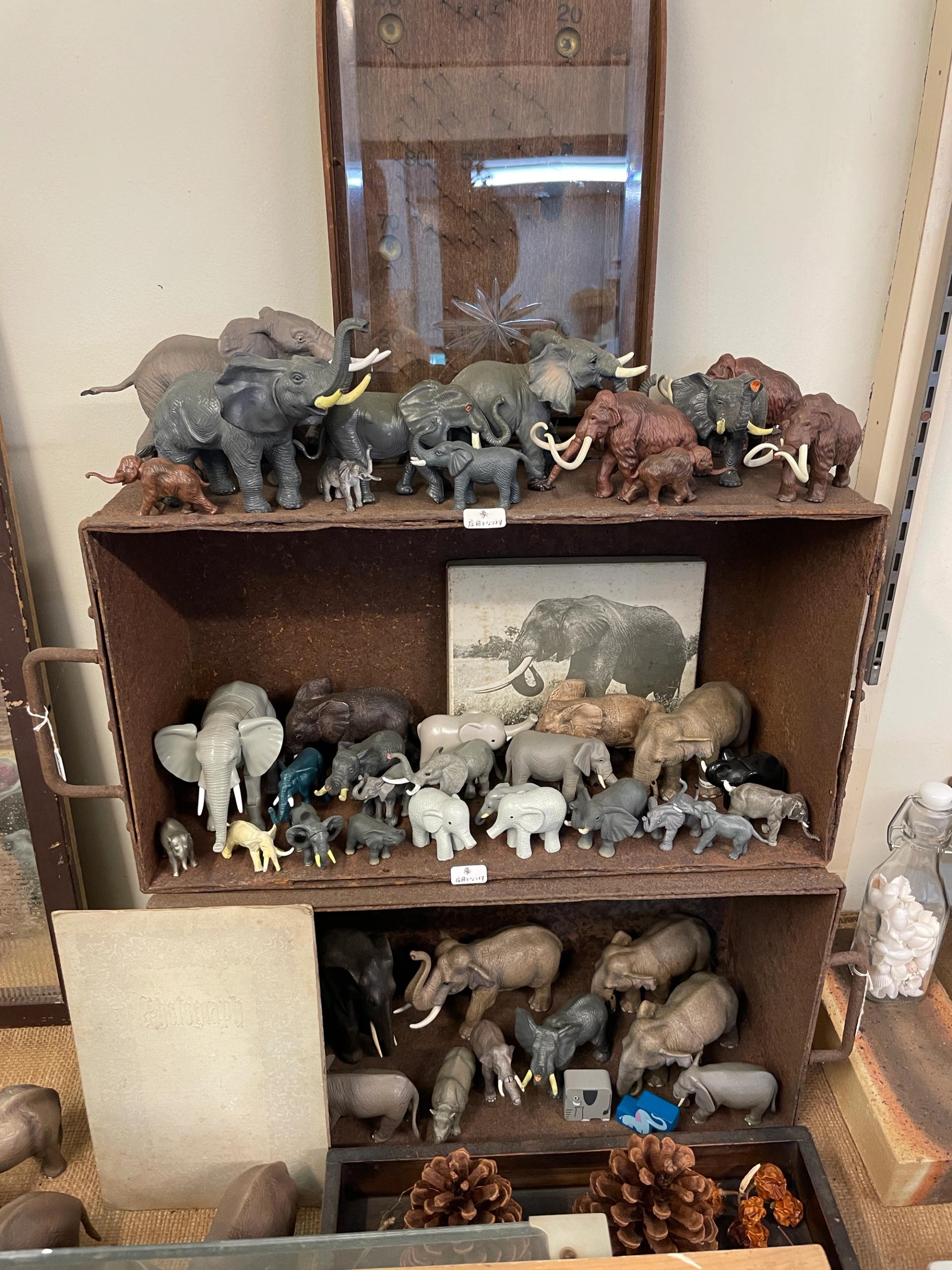
Just across the road from the above strip mall shops is Nihei, another antique store. They also have a nice instagram page.
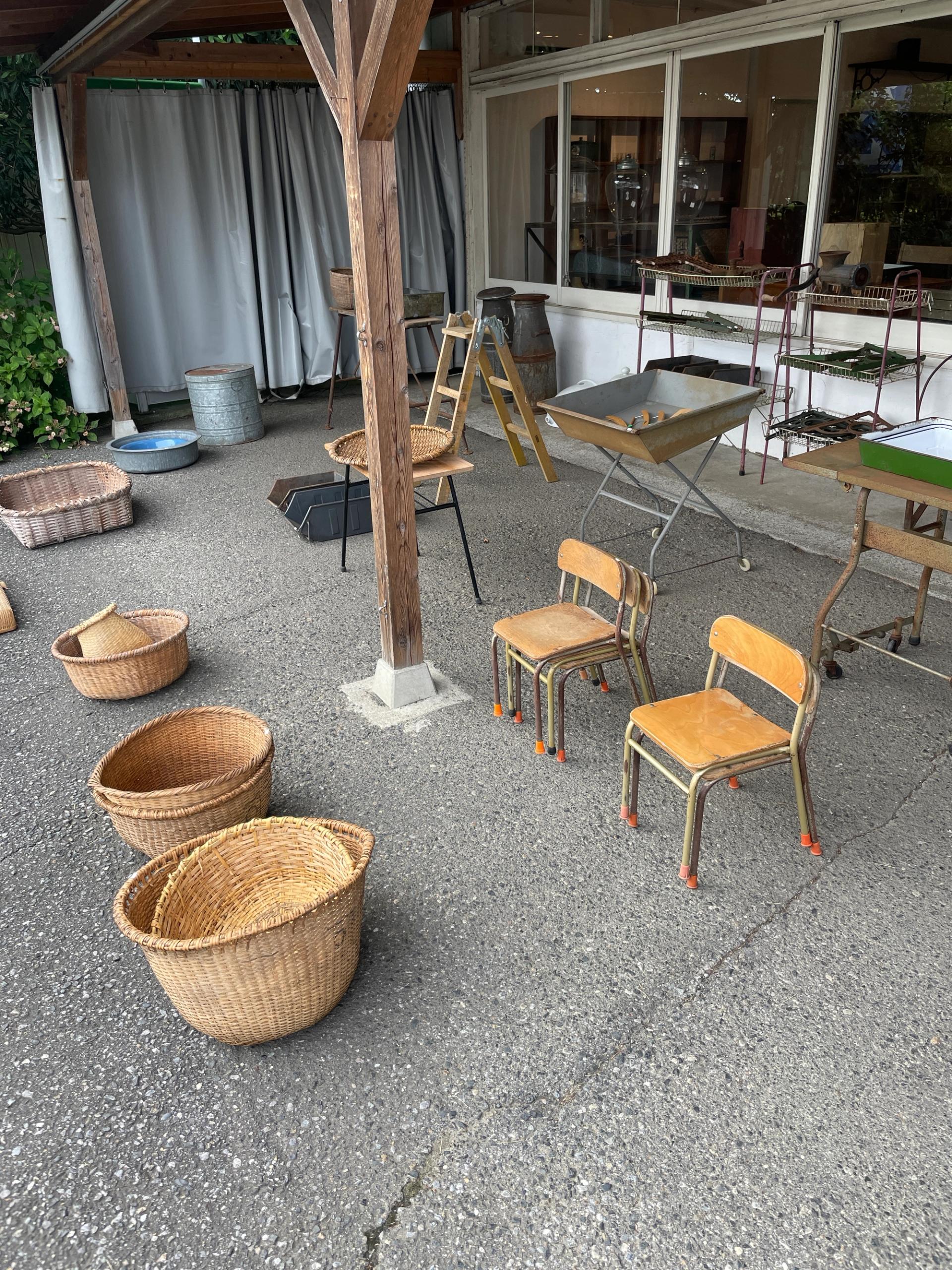
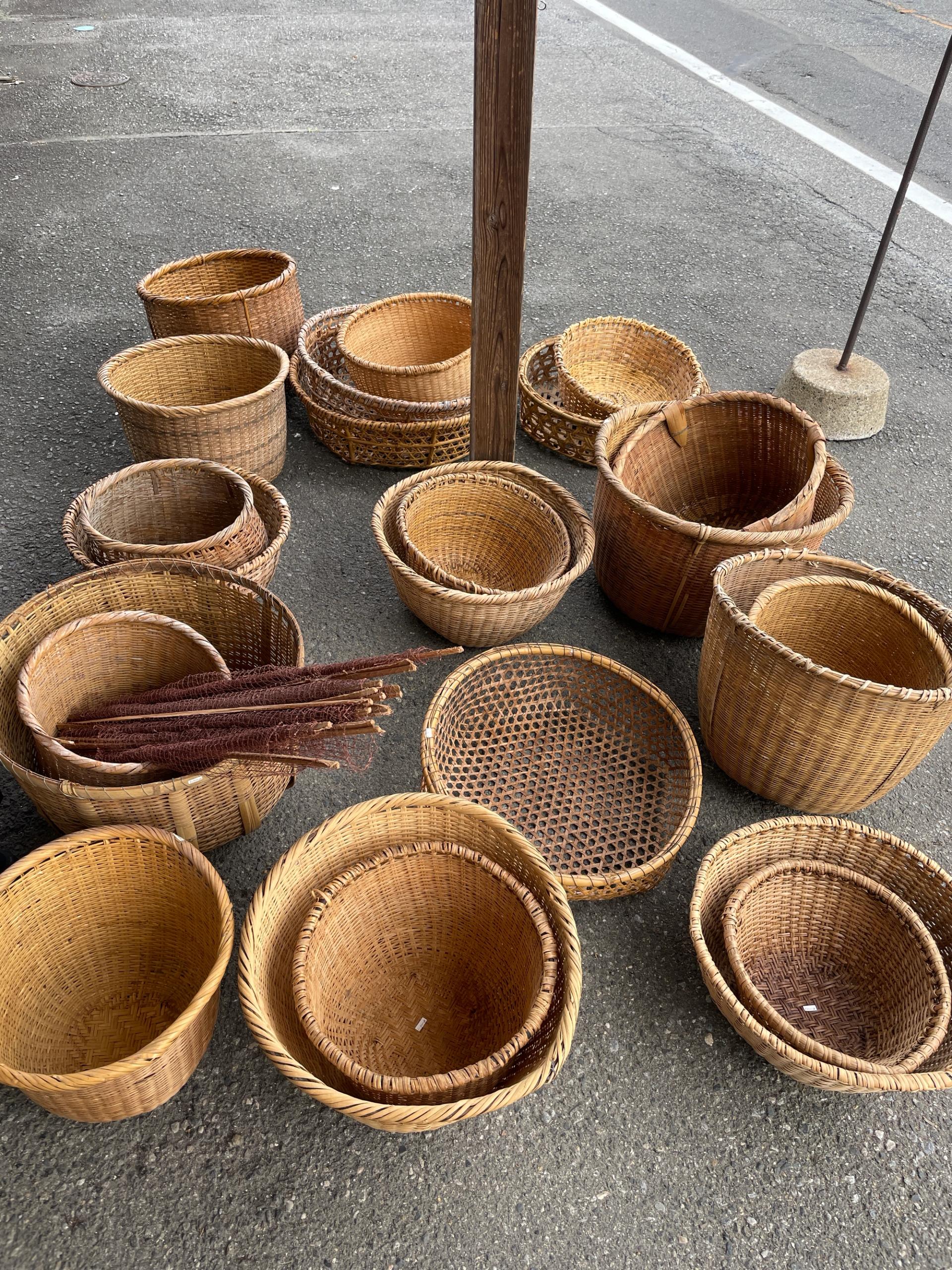
Just up the road (walking distance) from the strip mall cluster of antique shops are a couple of other antique shops.
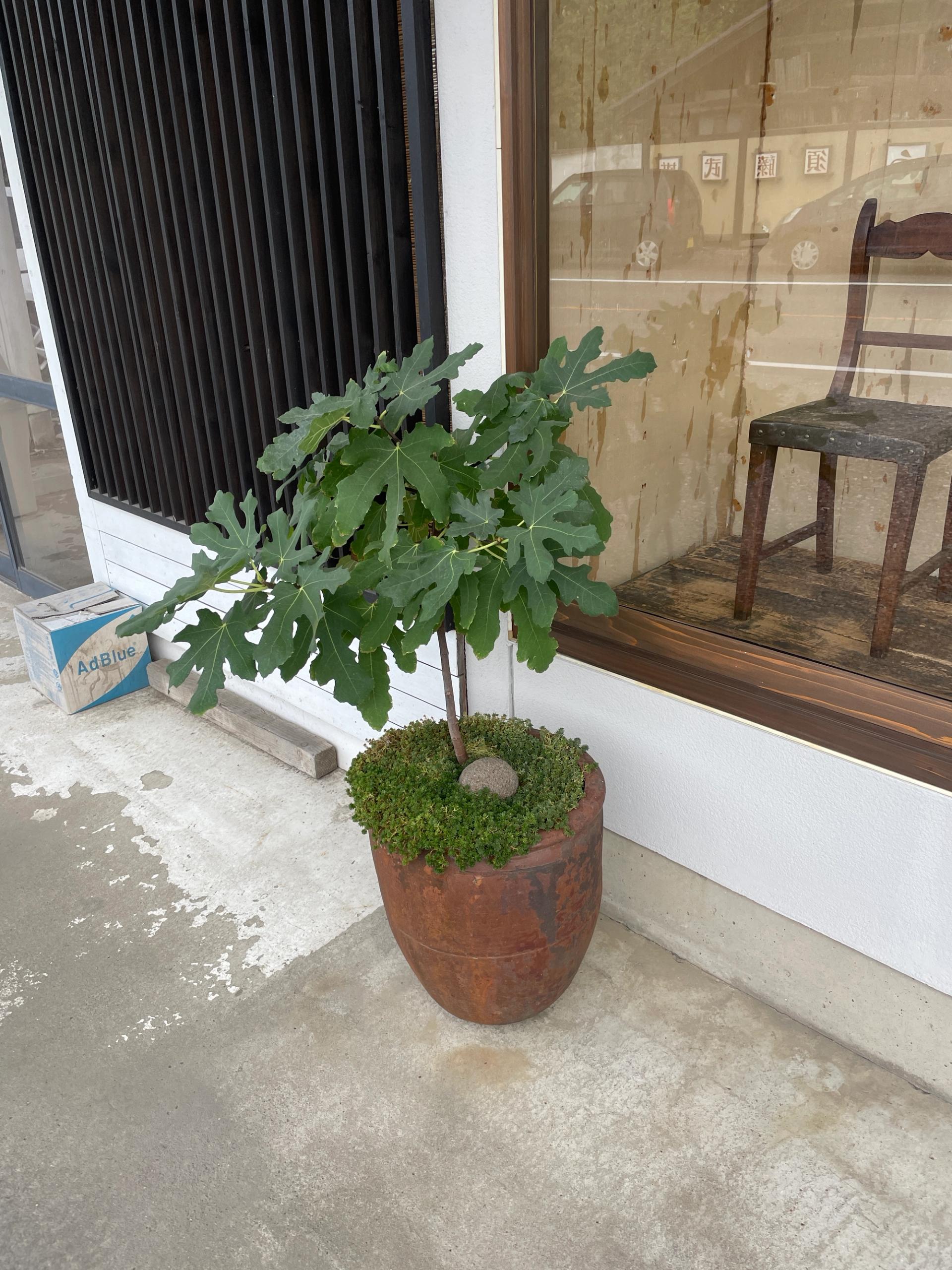
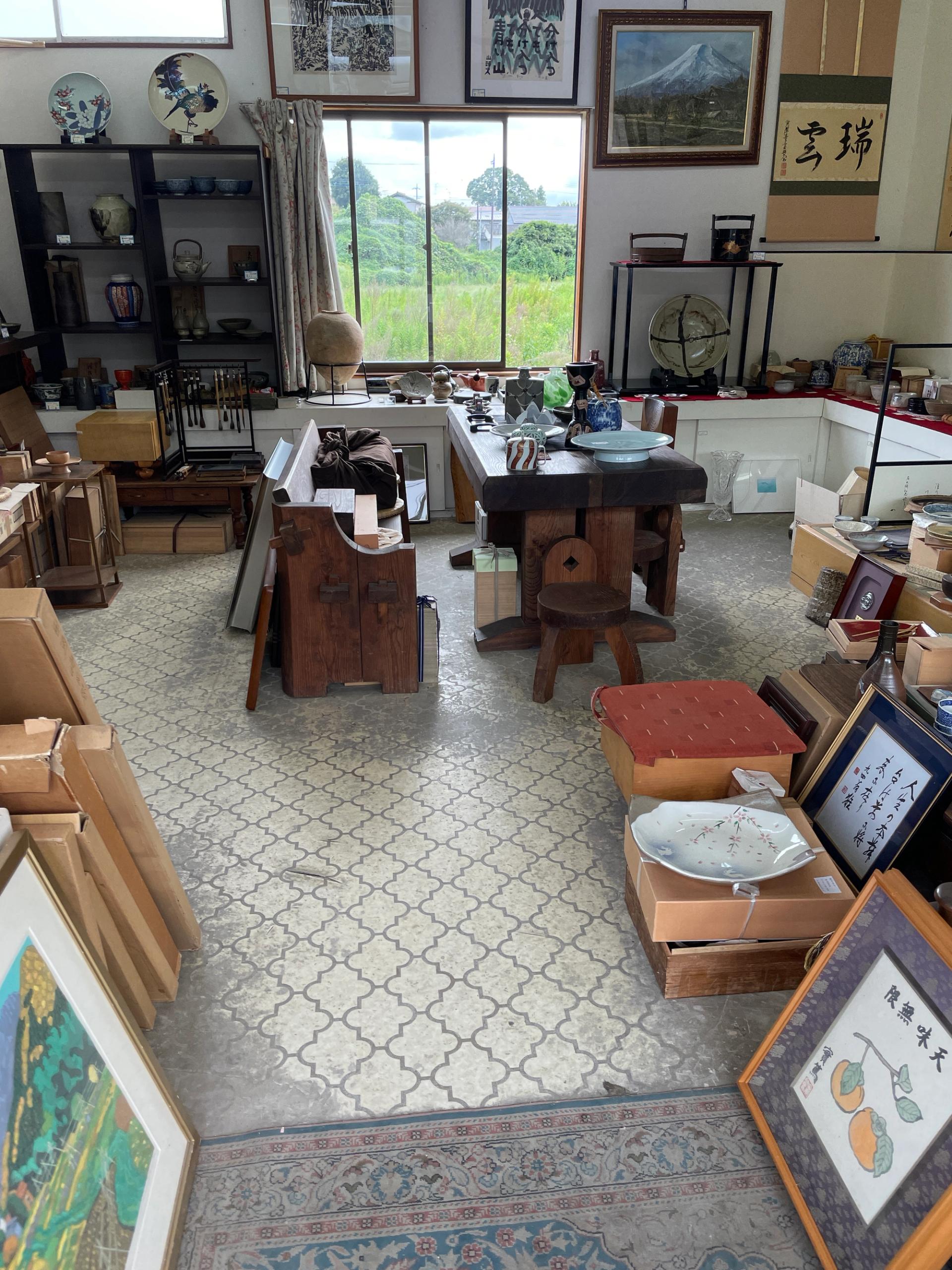
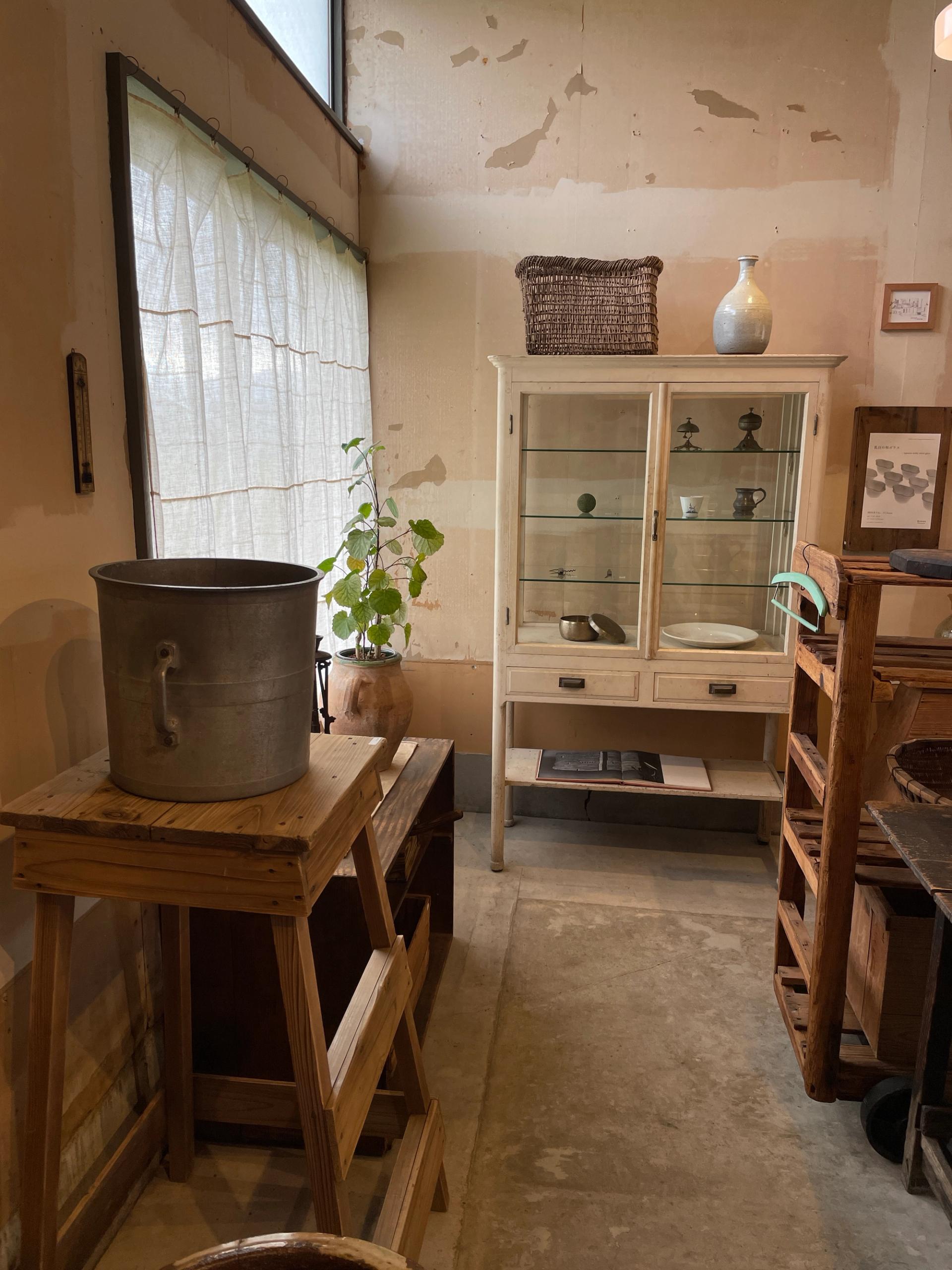
Food in Mashiko
Vegetarian friendly food was a bit hard to find in Mashiko! It's a tiny town and generally there are not a lot of options. Below listing the places that we liked, or wanted to try but couldn't.
Lunch:
- This microbiotic cafe called Tsuduri Shokudo looked amazing and we only discovered it once we got to Mashiko and unfortunately didn't book in advance so we got turned away! It looked like they had amazing vegan options I would have loved :) hopefully you can go for me. I suggest getting a Japanese friend (or someone at your hotel) to call for you to arrange a booking well in advance (and find out their opening days!) if you do not speak Japanese. Or try to message them on their facebook page (linked above).
- Another place we didn't make it to was this bakery called Small bakery Emipan, which looks nice.
- We went to this amazing bakery called Synchro Pane, which was run out of a shed and maybe someones house? Off a field. They just sold tomato focaccia (SO YUM) and maybe only open 1 day a week?! I think maybe 3 days a month and some months not at all? Check their IG to see opening hours.
Dinner:
We only had dinner at the Izakaya located at our guesthouse and at a restaurant a friend suggested called Japanese Cuisine Soma.
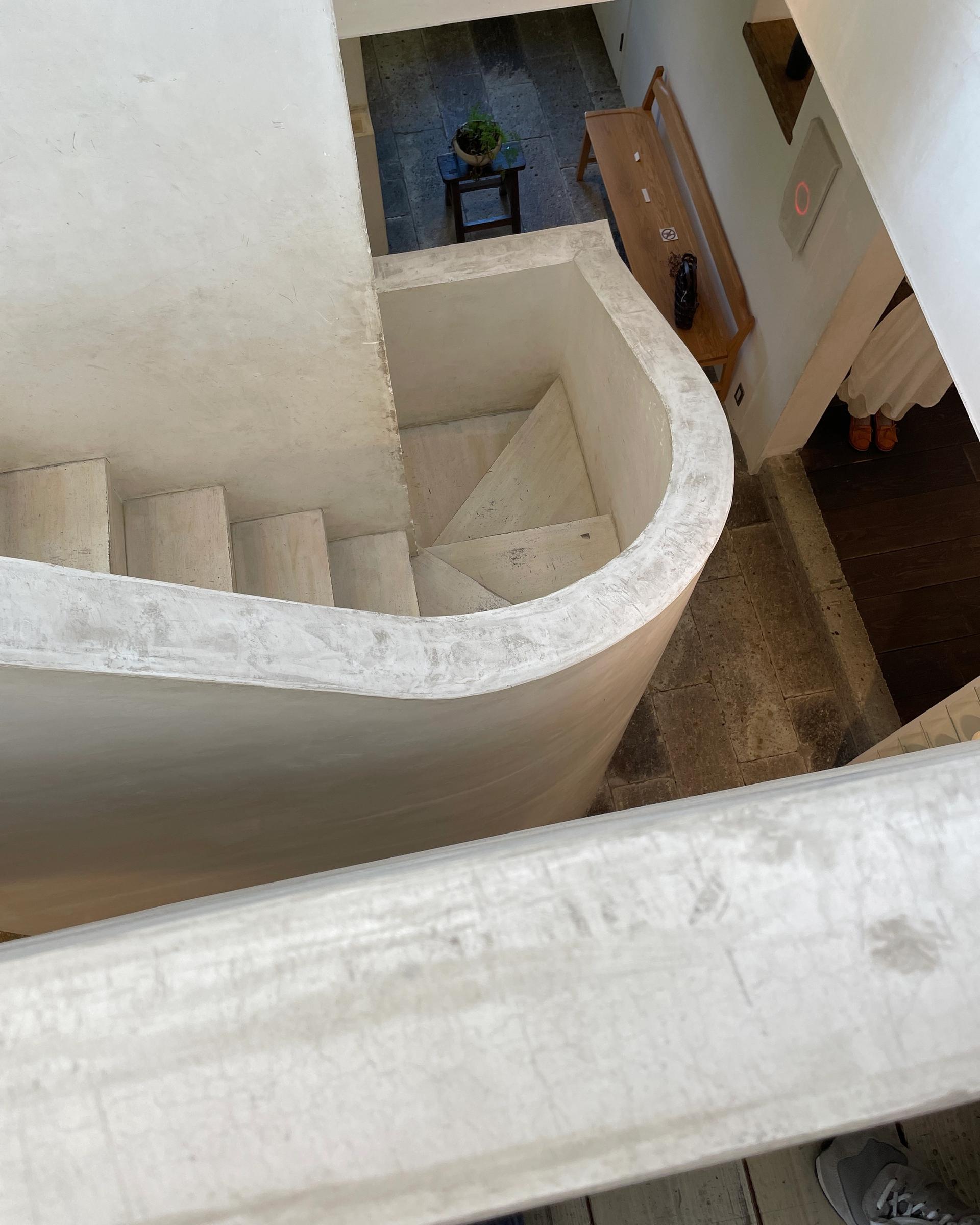
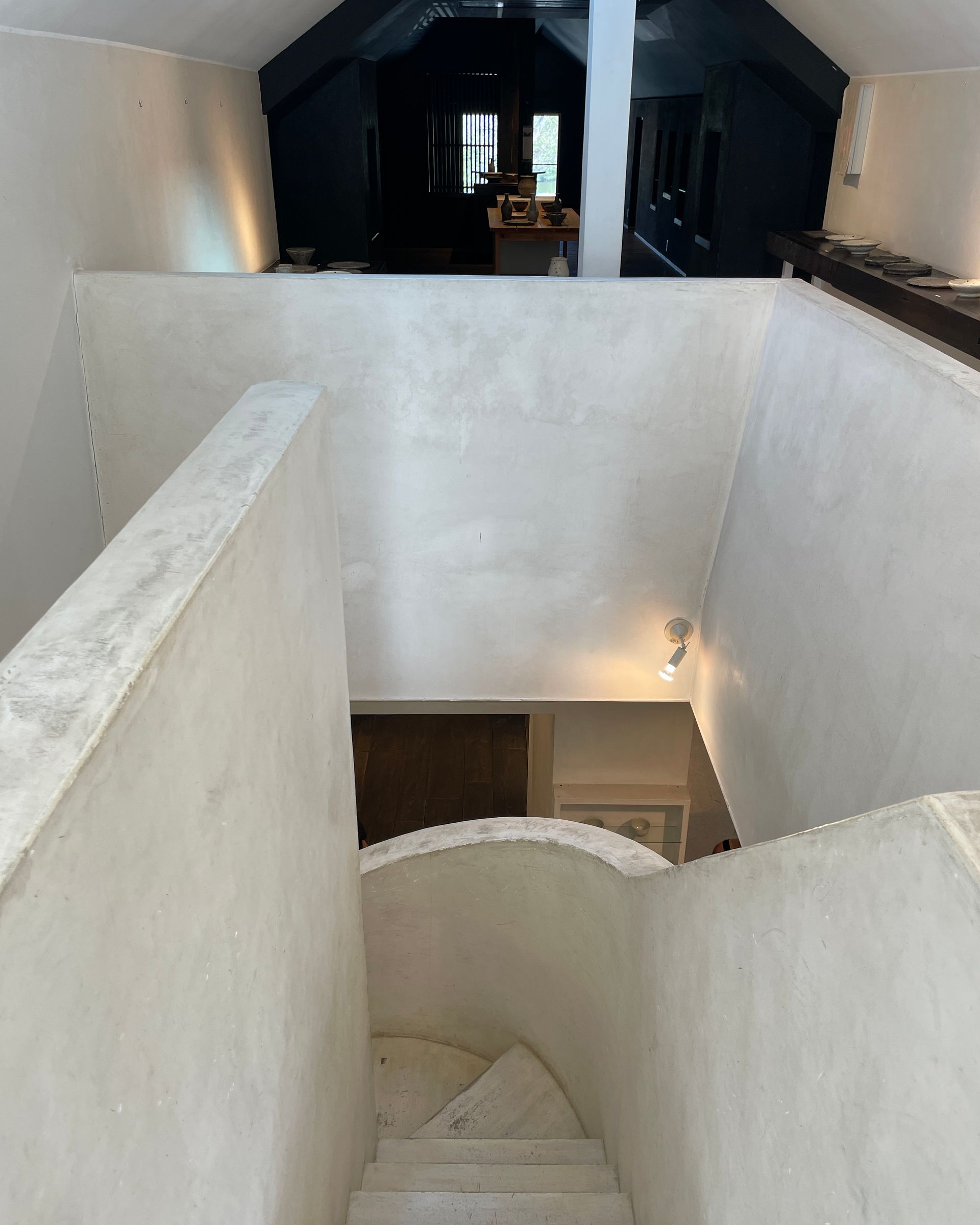
Accomadation in Mashiko
We stayed at a guesthouse called Forest Inn. Some local Japanese friends suggested it to us and booked a room for us. Forest Inn also has an Izakaya there, which was handy for dinner time.
When we got to Mashiko, we met with someone I knew who lived there and suggested that next time we stayed at a guesthouse called Yuwakan, which looks really good and their food looks lovely too from what we saw online! So maybe next time we would stay there.
If you need to do laundry, there was a lovely laundromat we went to while we were in Mashiko :)
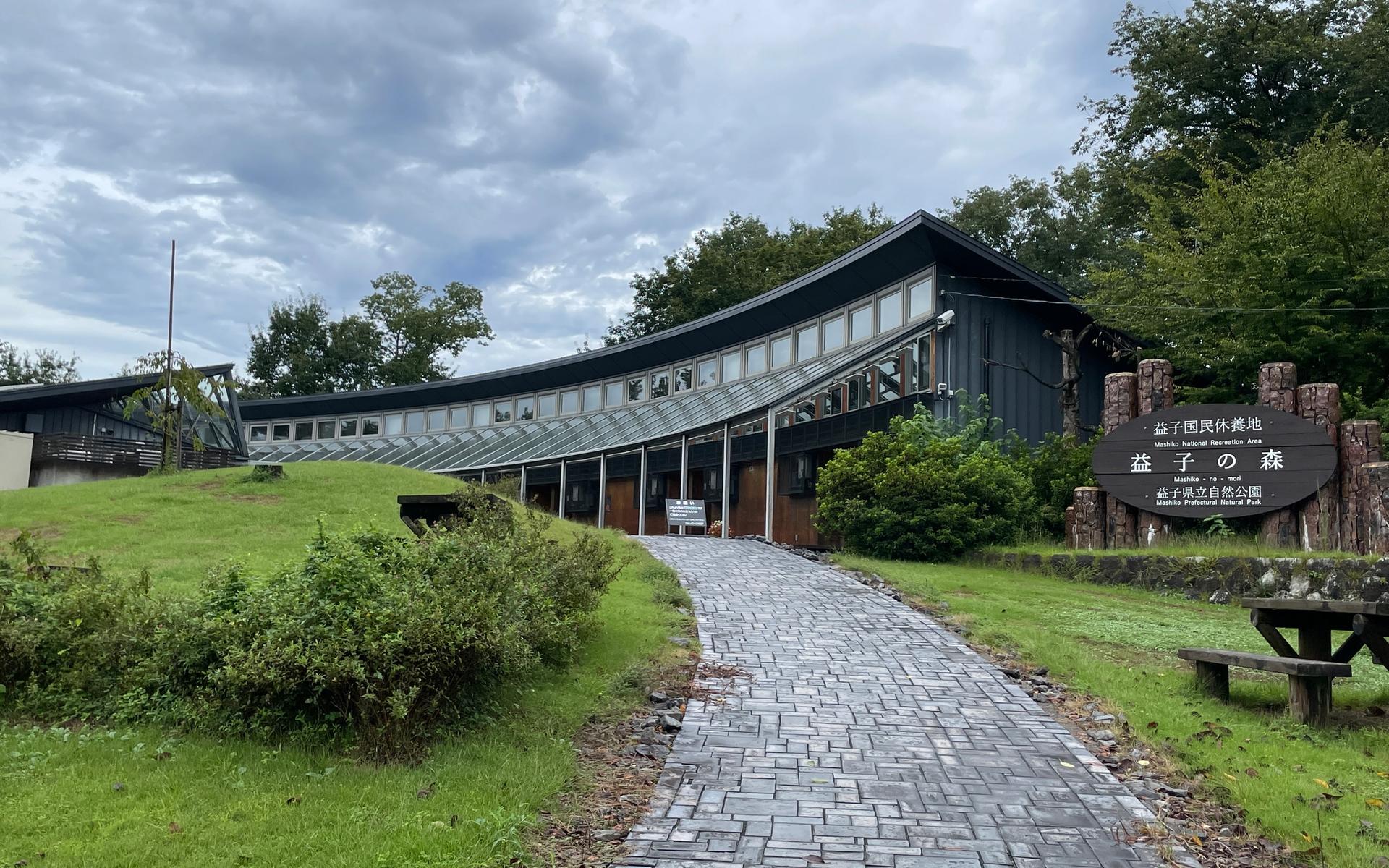
On the same Mashiko trip
We visited a couple of near-by places
Since we had hired a car to drive to Mashiko, we clustered in a few other things we wanted to see. Which included the beautiful Tamozawa Imperial Villa in Nikko, which is where the photos below were taken. I loved the peachy and red carpets and the copper roof. We enjoyed visiting Tamozawa Imperial Villa and it was on the way to another site we wanted to see, HOWEVER please be warned, Nikko (the town) is VERY touristy and I personally would suggest not spending much time there.
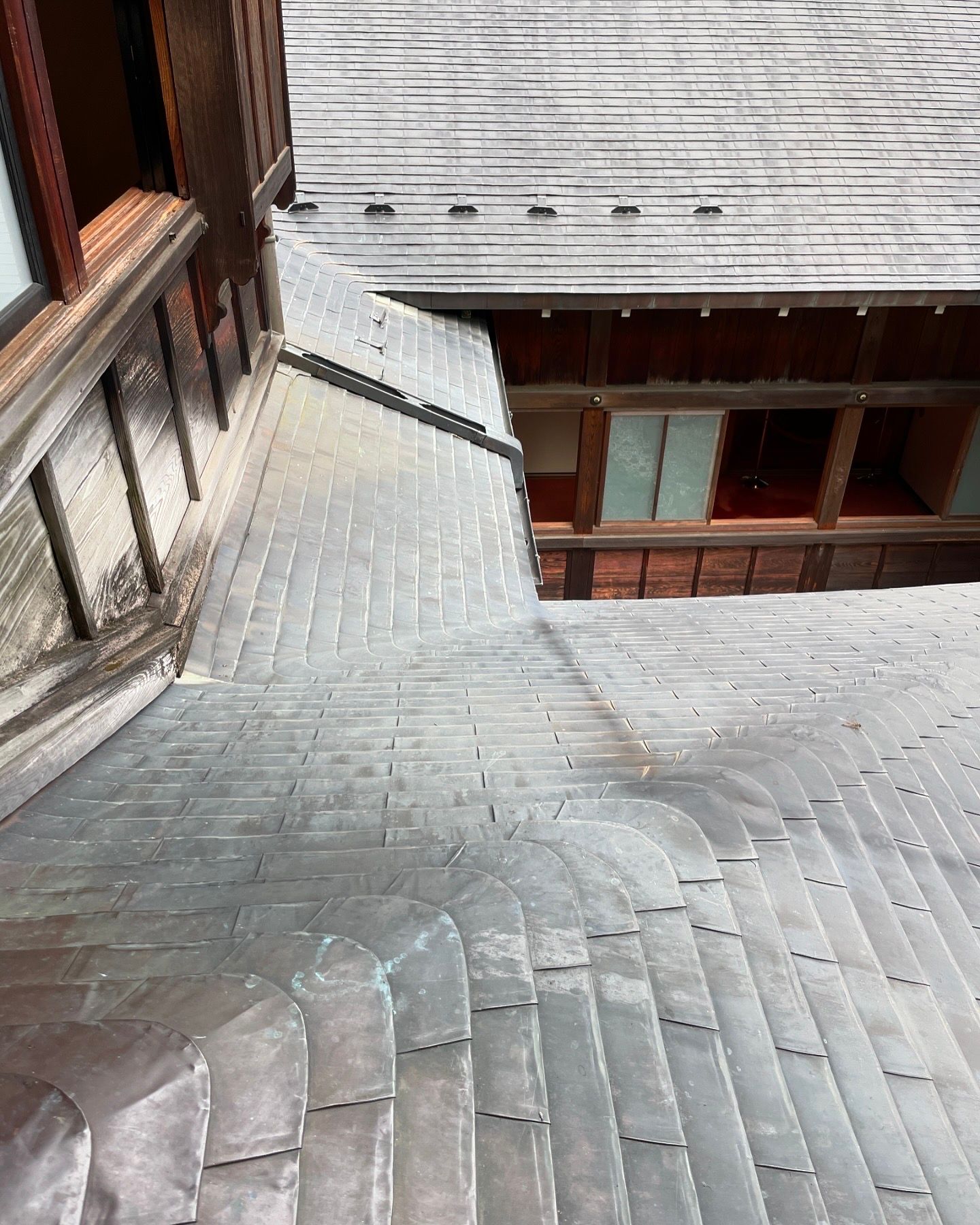
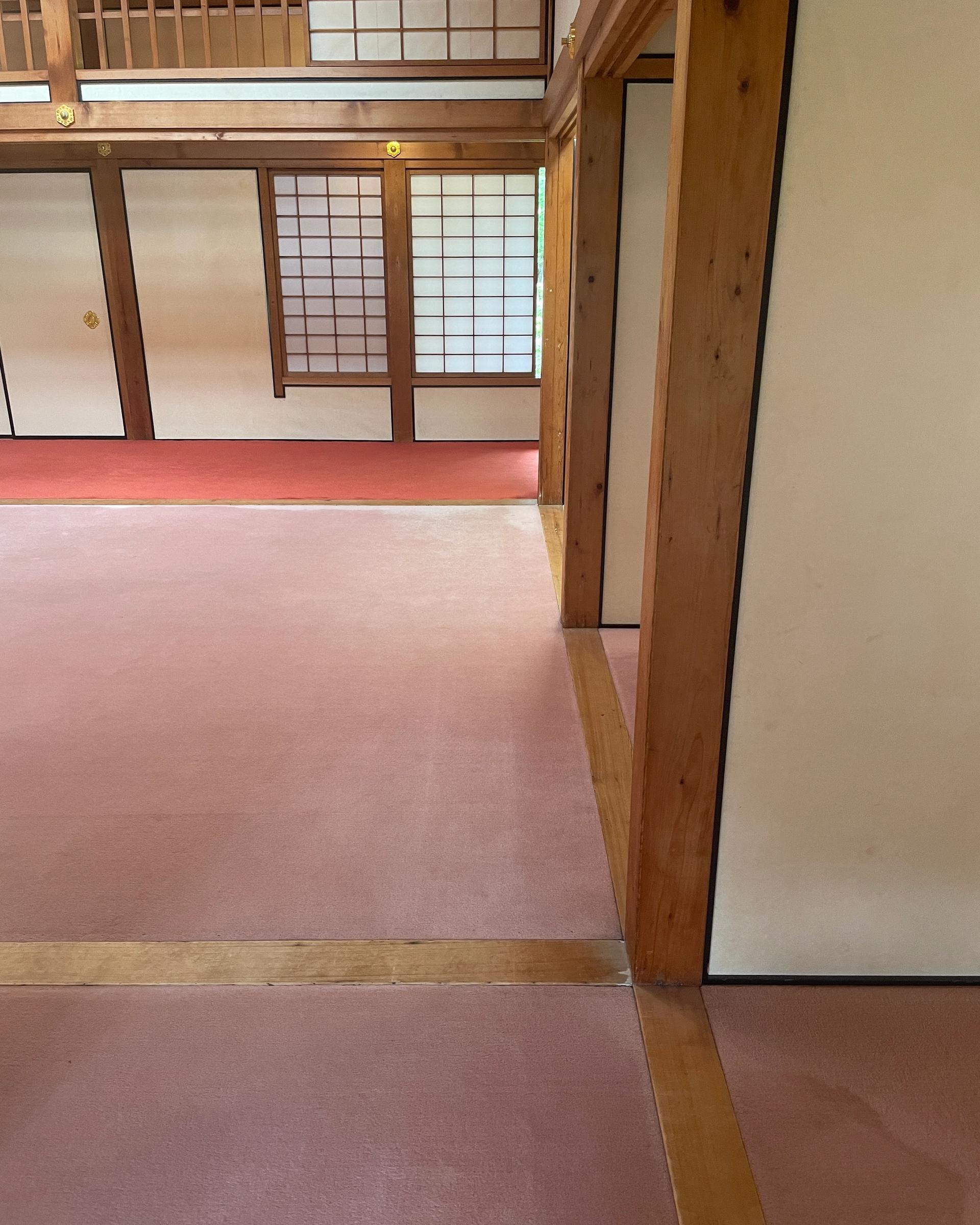
The main reason we drove to Nikko was to visit a building designed by an architect called Antonin Raymond. It used to be the Italian Embassy. We had visited a handful of Antonin Raymonds buildings on our previous trip to Japan as we loved his work. However we since found out that during world war 2, when Raymond was in the USA he designed a replica Japanese village so that America could test the effectiveness of fire bombs on it. He used his experience working as an architect in Japan (first came to Japan working for Frank Lloyd Wright) to draw up the Japanese village in detail right down to the finishings and furniture. A Japanese activist told me about this on instagram when they saw me post about another of his buildings we visited. I did not know the history. After the war ended Raymond returned to Japan, where he spent the rest of his life working as an architect alongside Japanese colleagues. He designed so many buildings in Japan and from our understanding was generally well respected. We read that in a book he wrote he regrets what he did for the American government, but it is hard to ever see his work in the same way knowing the destruction and killings he participated in through architecture. If you'd like to read more you can here.
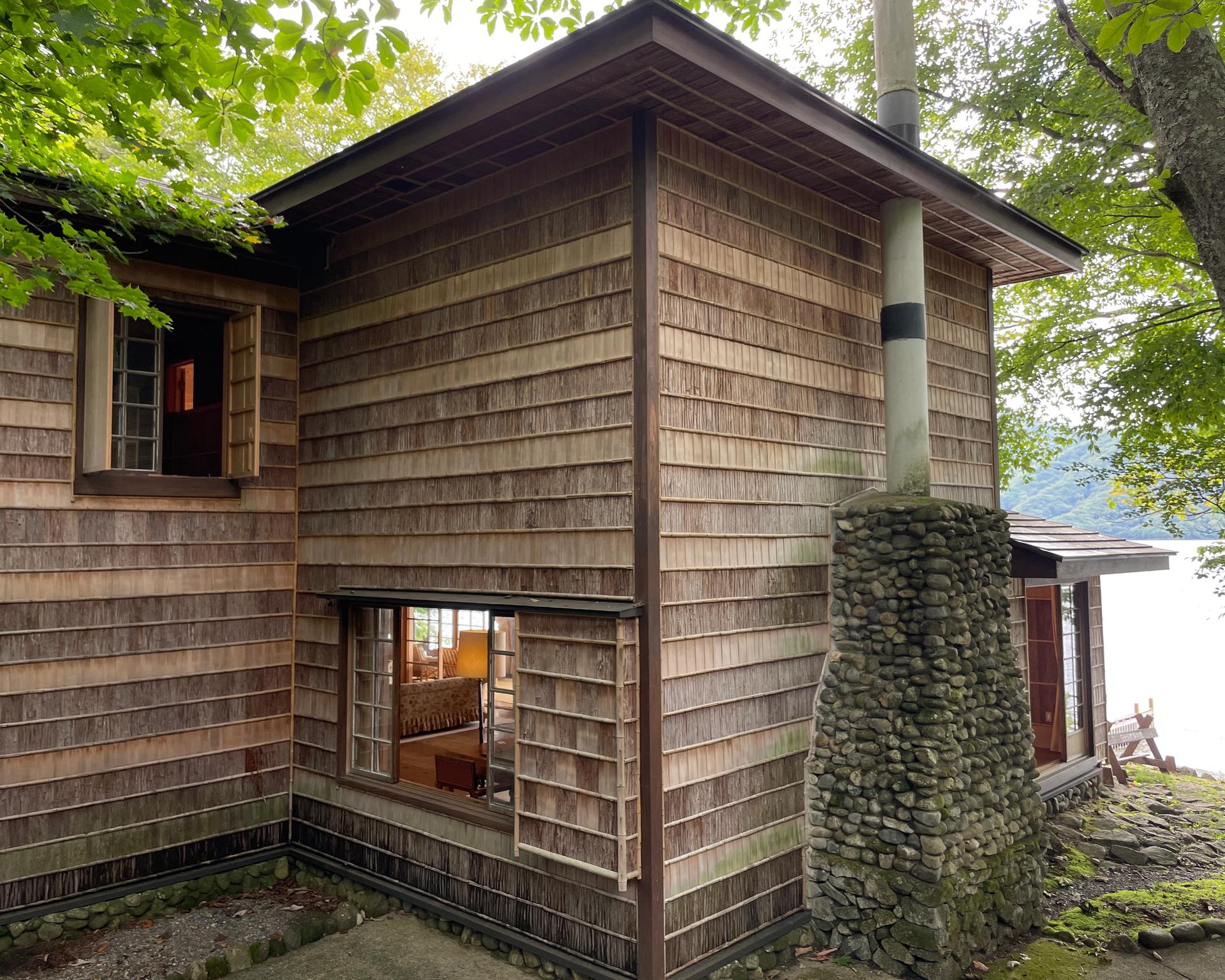

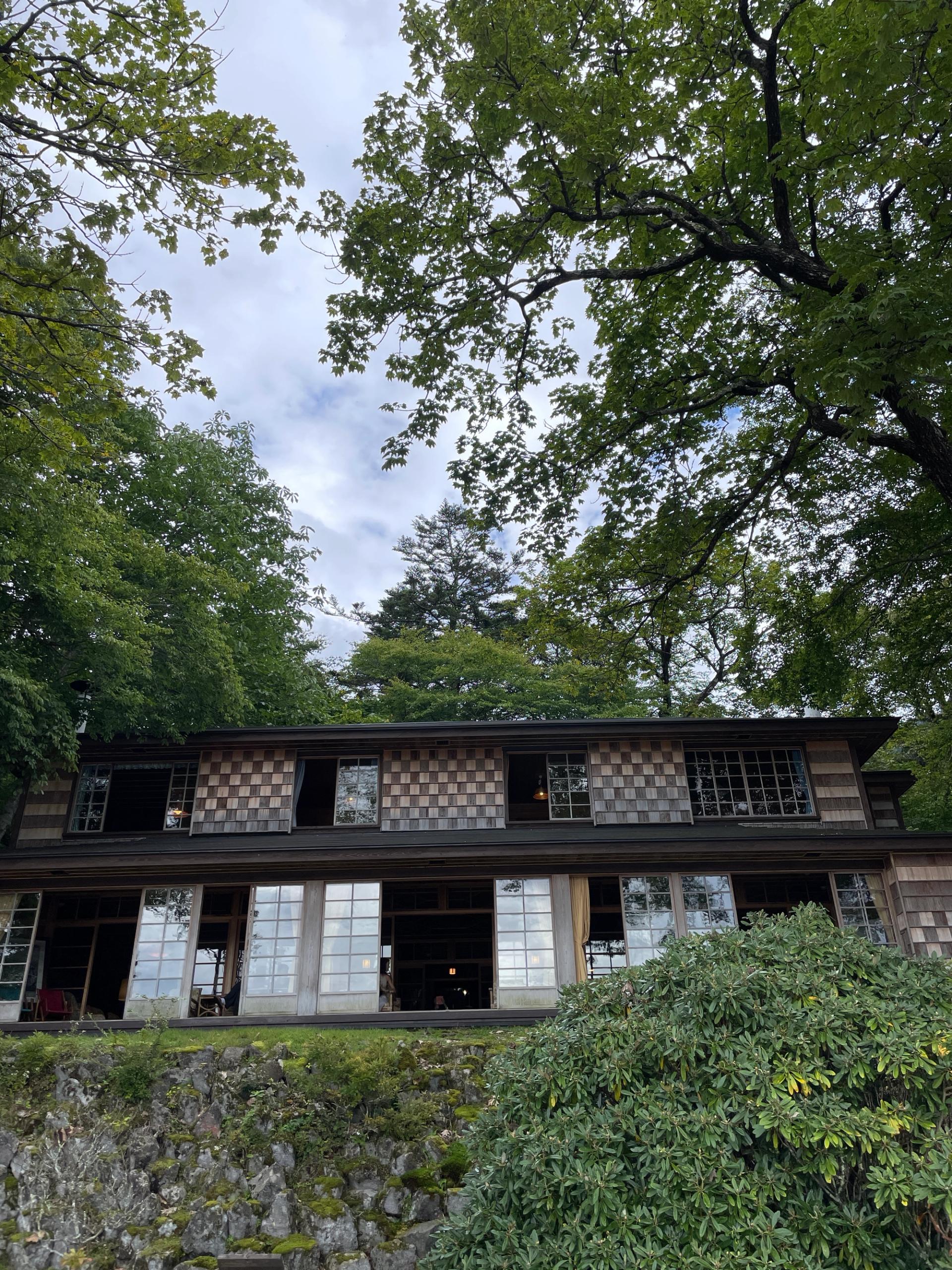
Tokoname
On another trip, we hired a car and took a road trip from Kyoto to visit some specific buildings (more info below) and we grouped that trip in with visiting Tokoname.
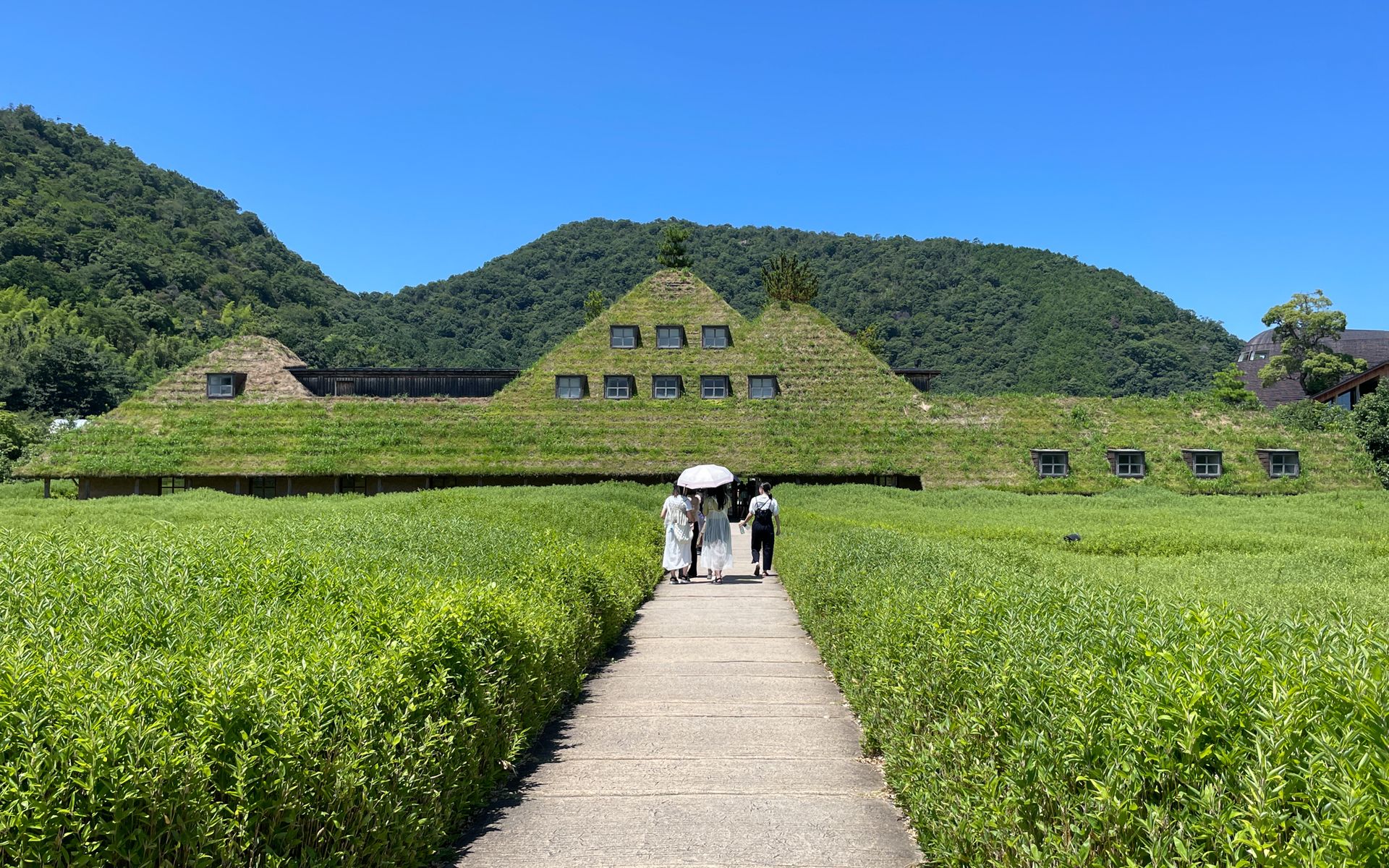
On the way to Tokoname we visited this beautiful cake factory and shop called 'La Collina'. It was really fun. The buildings were designed by Terunobu Fujimori. La Collina specialise in a cake cooked on a stick called baumkuchen (it was absolutely delicious). The processes of making the cakes is on display too.
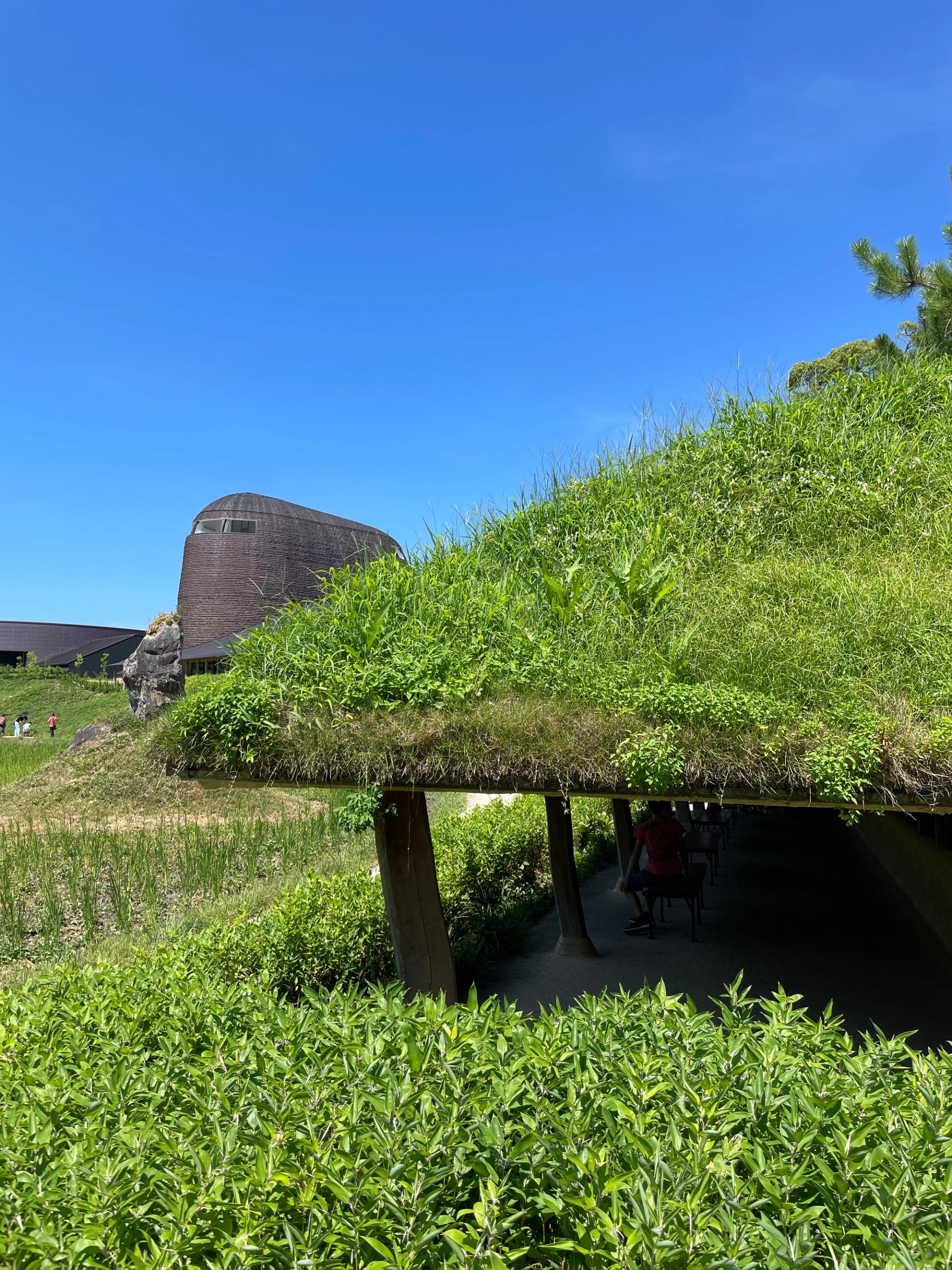
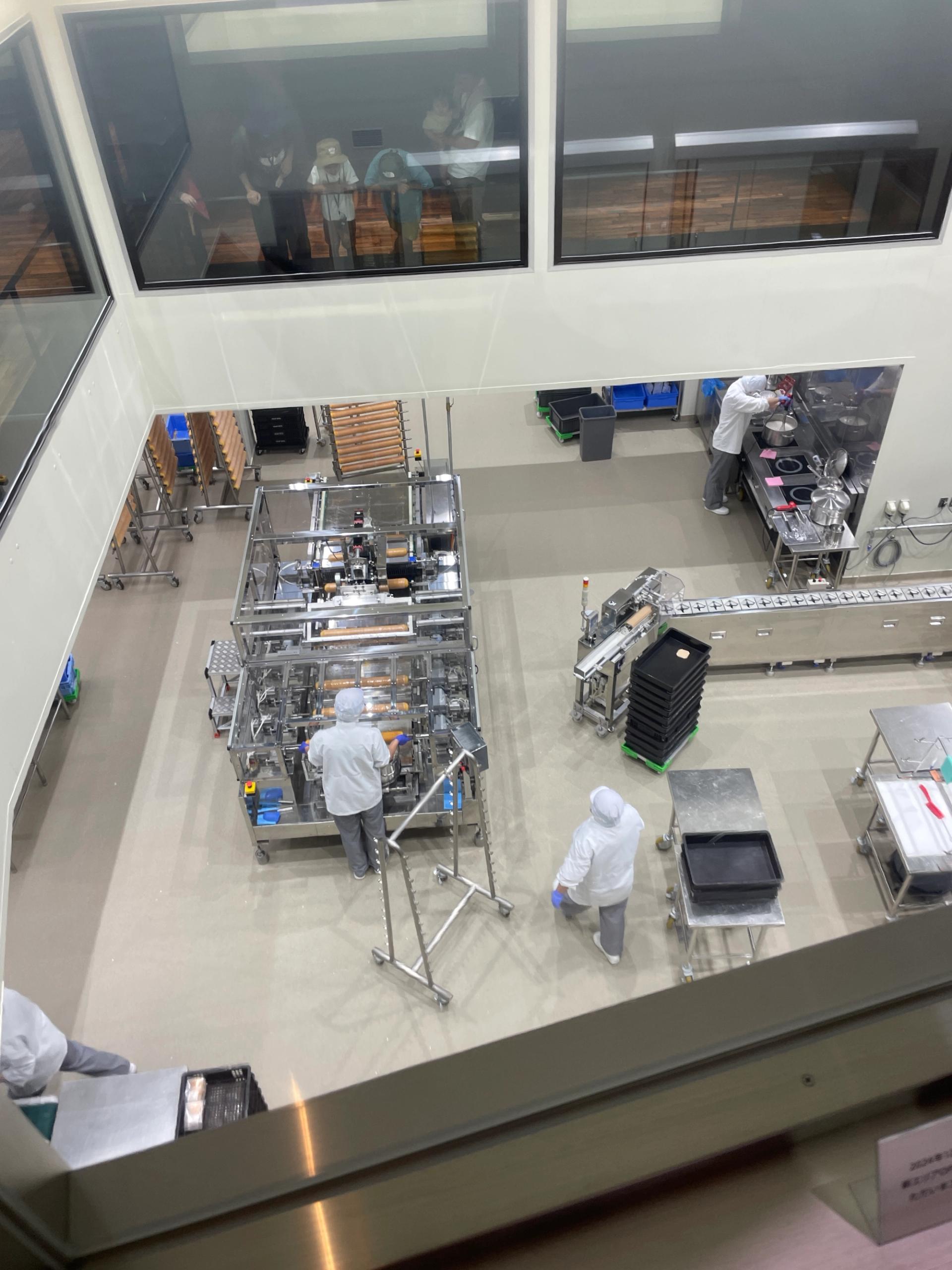
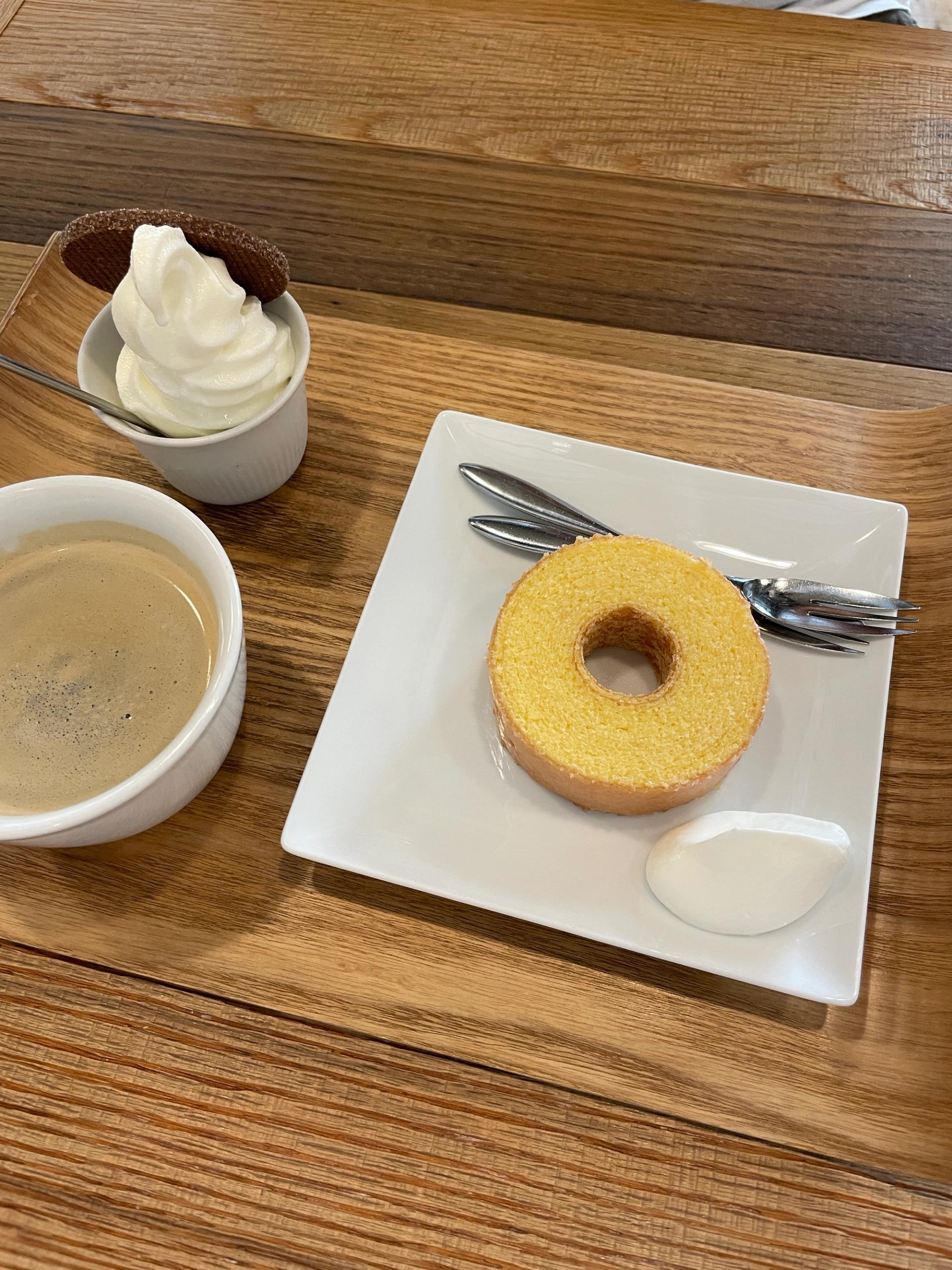
Tokoname was one of the Six Ancient Kilns of Japan, dating back to the Heian Period (794-1185). In later years, Tokoname is where large scale clay items were made like big pots, roofing tiles & water and sewerage pipes because of the high iron content in the clay.
Pots and broken pieces are used in the retaining walls & pathways and there are overgrown vines covering many walls and buildings.
We walked around Tokoname Pottery Footpath at about 7am, before things were open. The shops and museum was closed, but we enjoy it when places are less crowded. There were a few locals around setting off for the day. We personally just wanted to see the buildings and pathways, so we didn't mind that we missed out on open time. We did peek inside lots of the studios and shops and it looked like some lovely work.

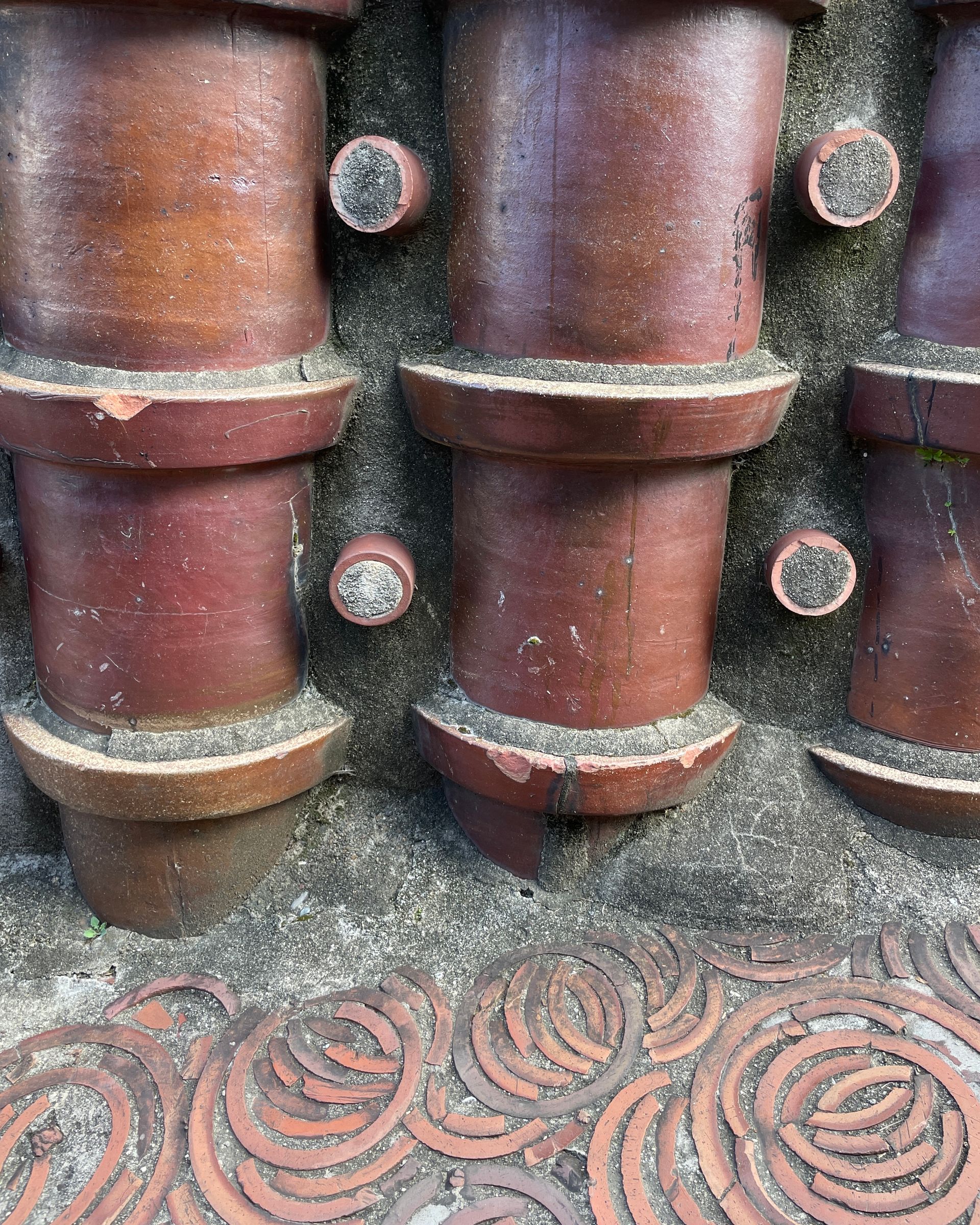
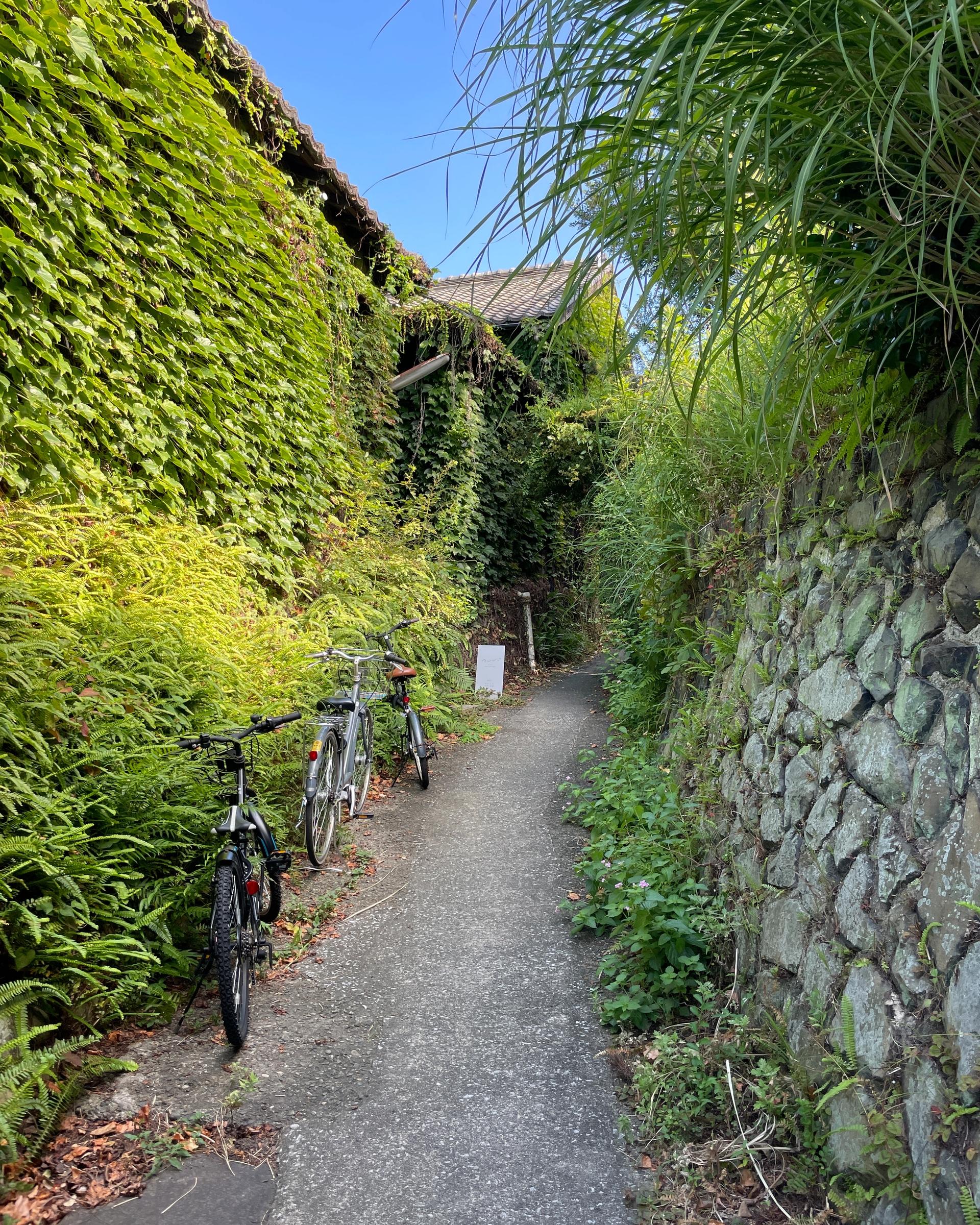
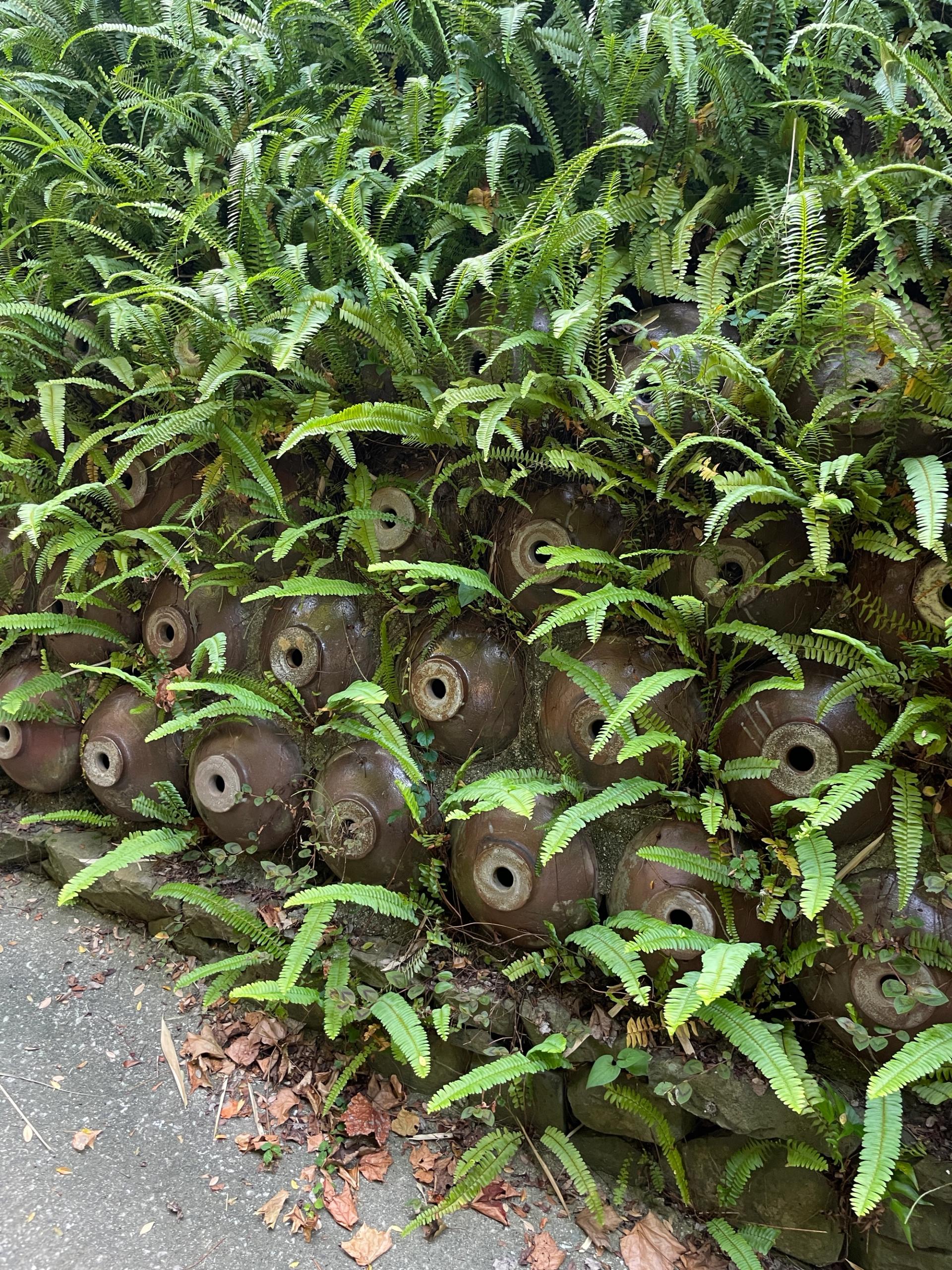
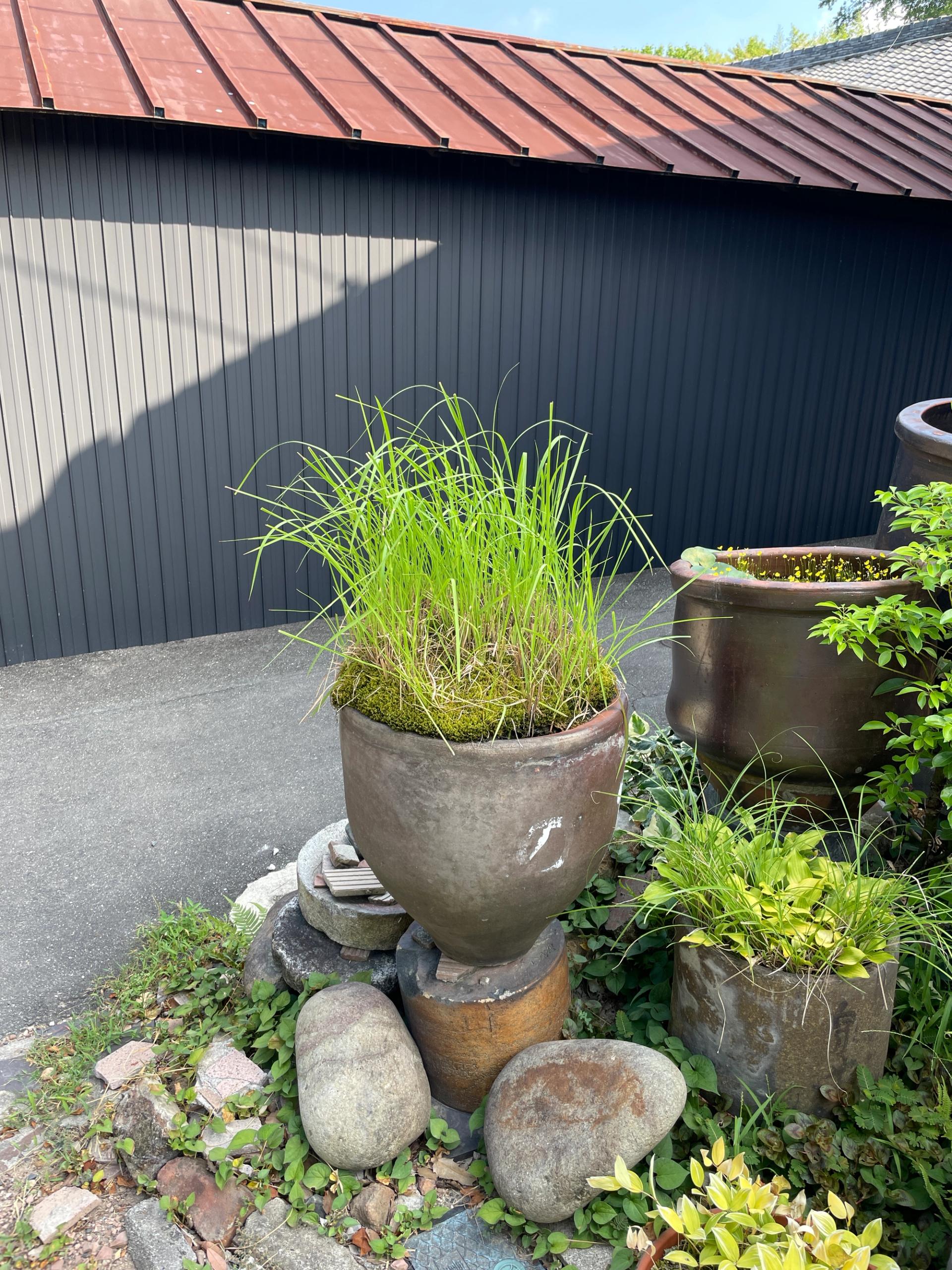
Aichi University of the Arts
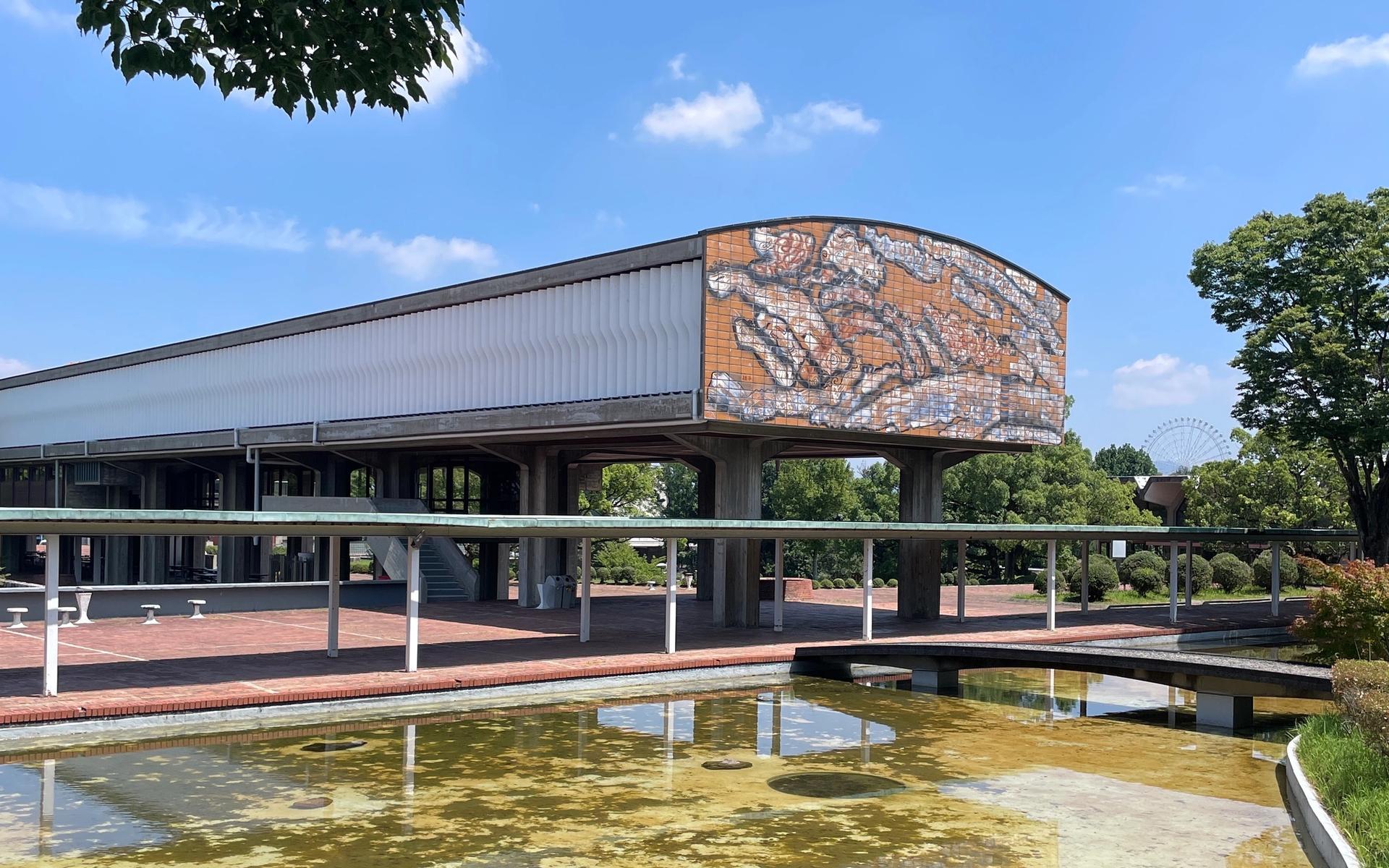
On the way back from Tokoname we drove through Nagoya to visit Aichi University of the Arts to see the buildings designed by Junzo Yoshimura. Yoshimura is one of our favourite architects. We were first introduced to his work (and so many other Japanese architects) from the book we sell on our website The Japanese House. This book is a great resource to be introduced to a wide range of architecture in Japan, a preview/ introduction to many modern Japanese architects, which you can further research, like we did. Yoshimura is the same architect that designed the house we visited last year & posted photos of (with the purple carpet, giant paper lampshade & wooden walls) and featured on our other blog post 'Purple things I saw in Japan'.
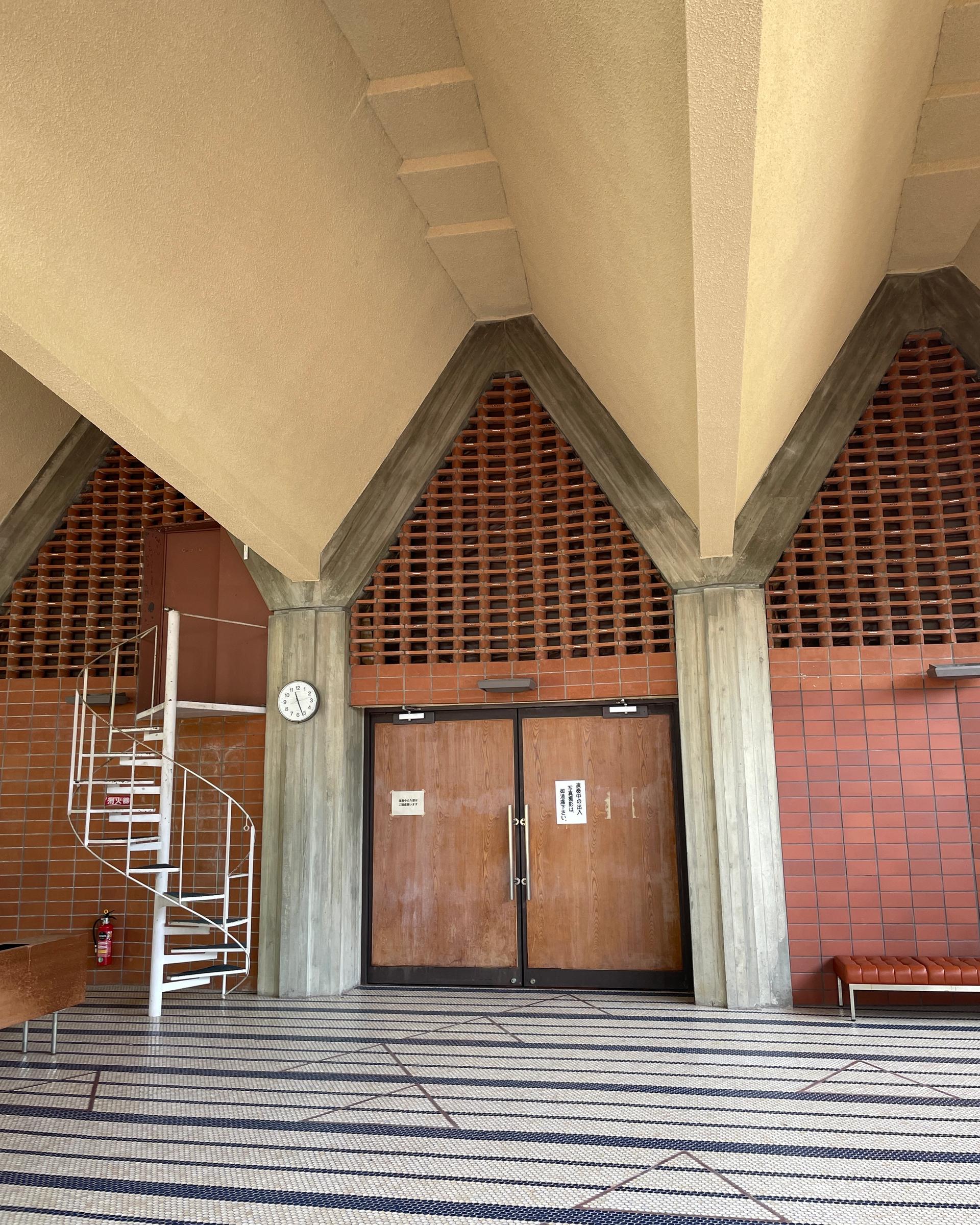
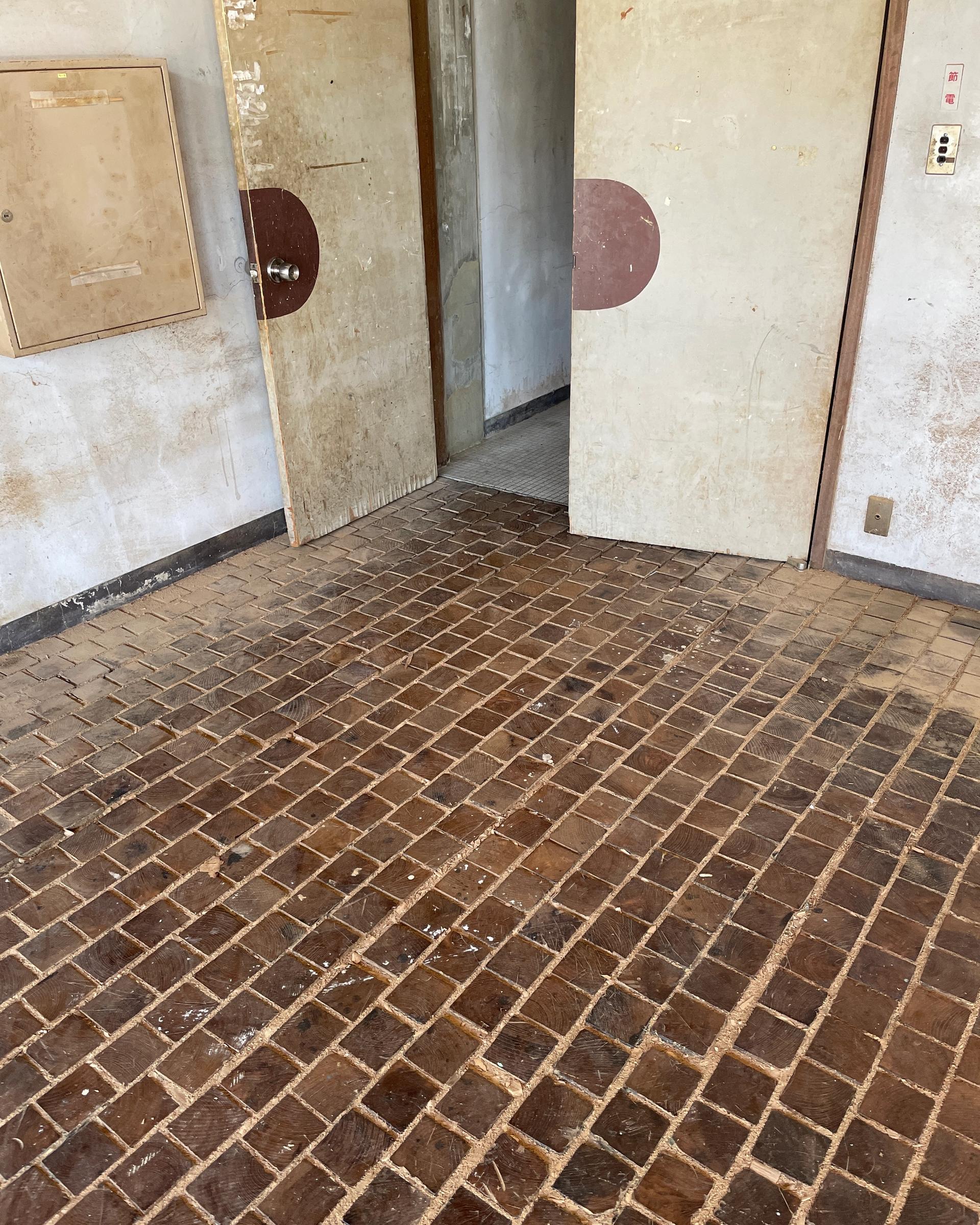
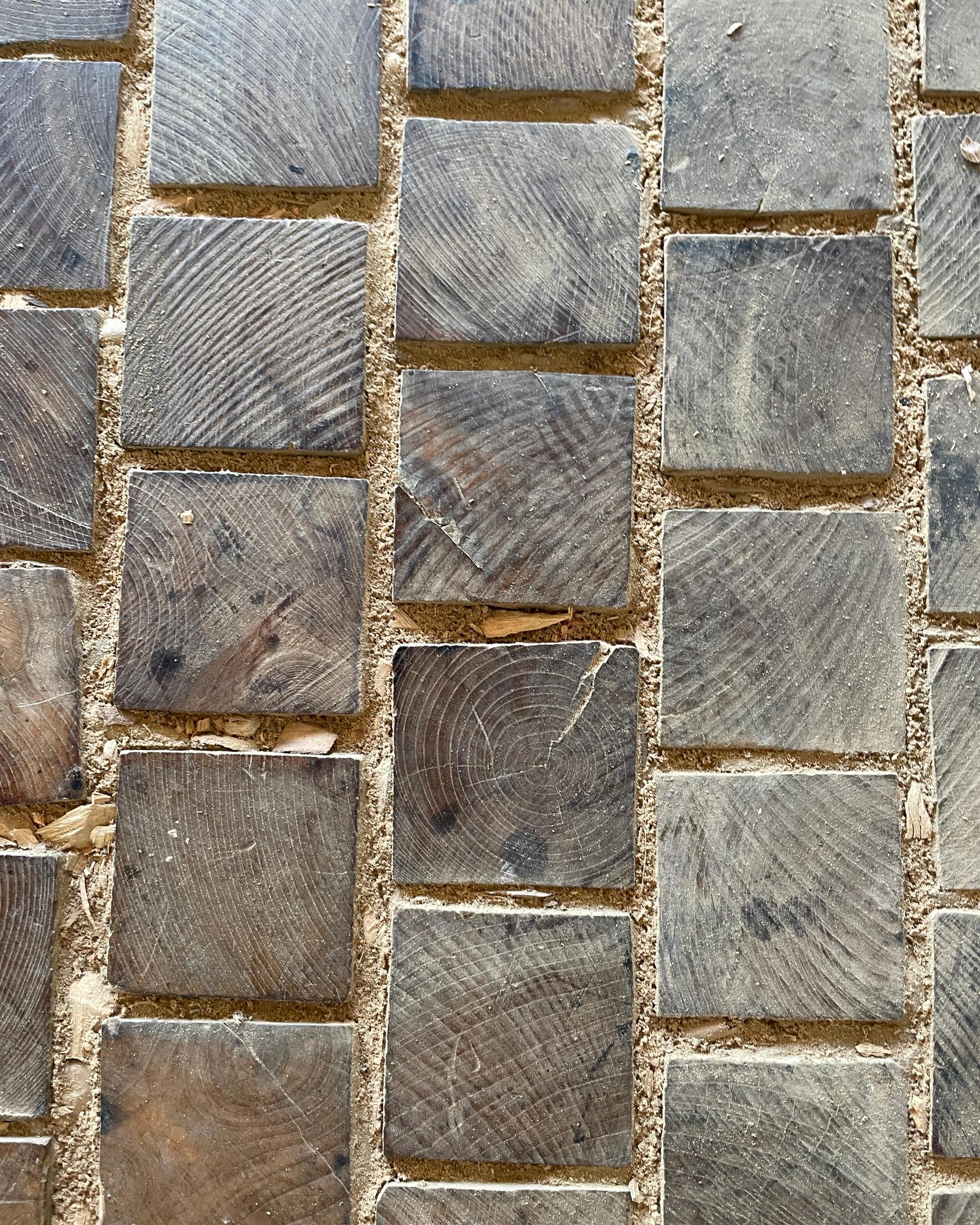
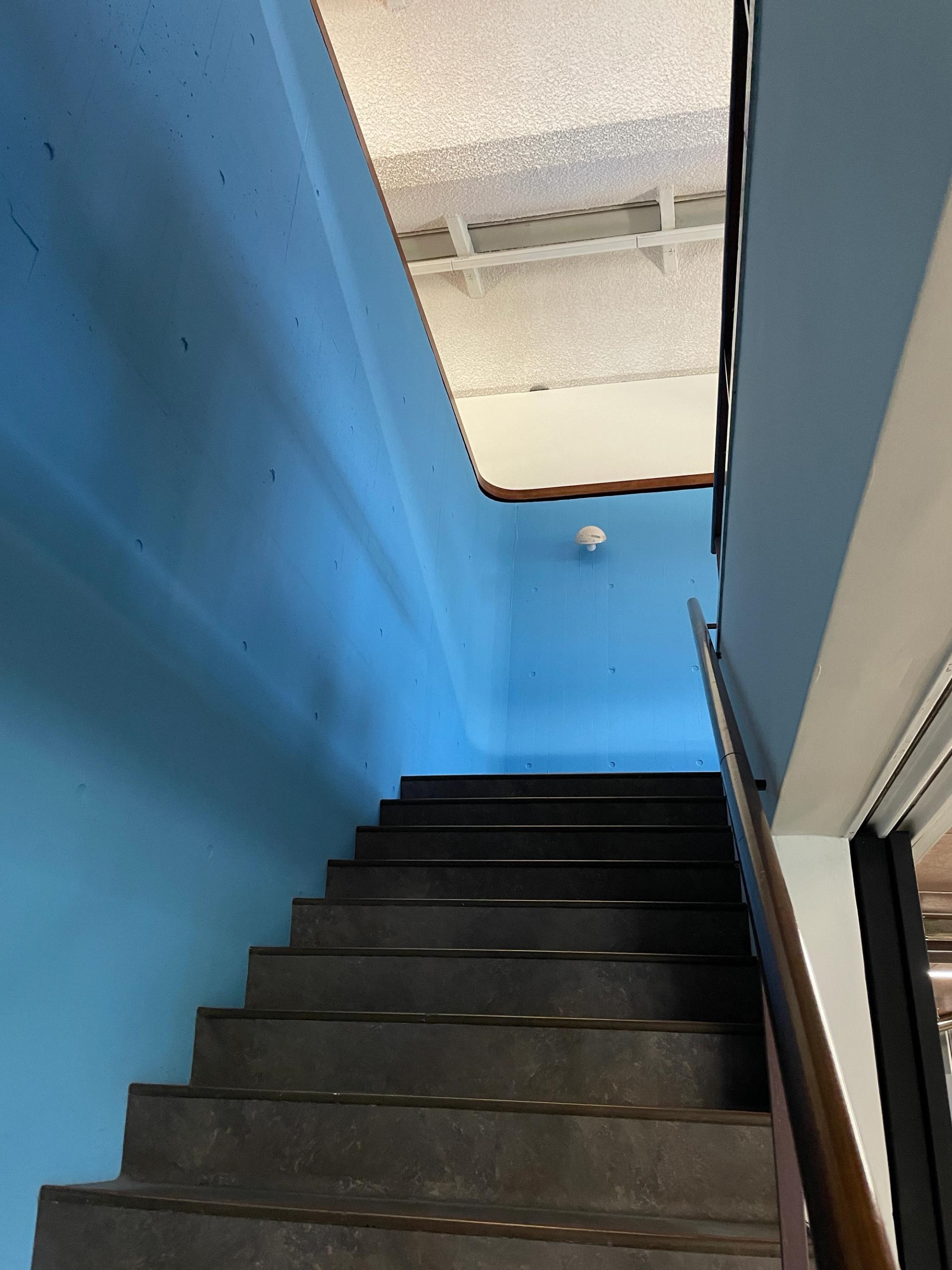
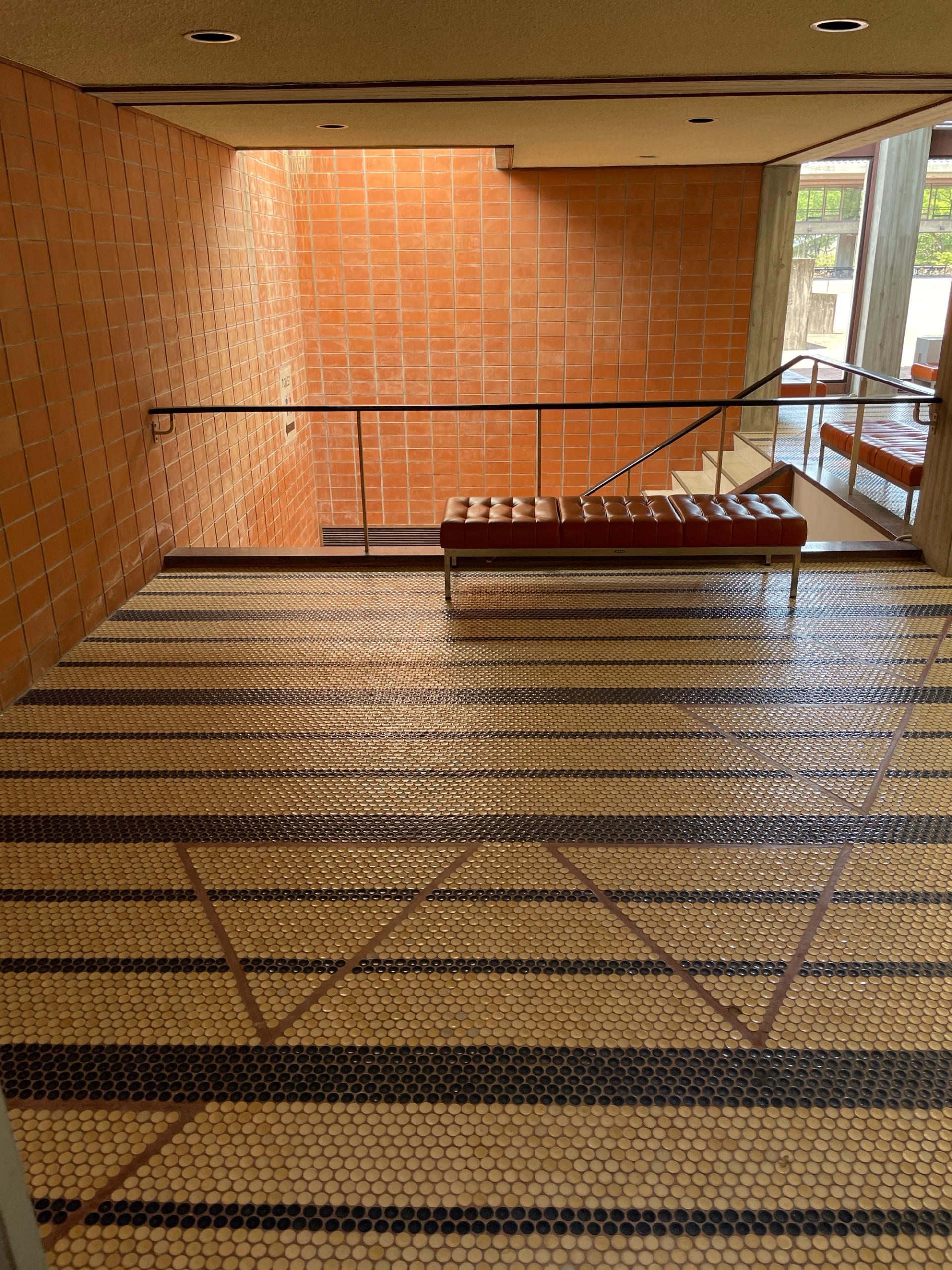
Mosaic Tile Museum Tajimi
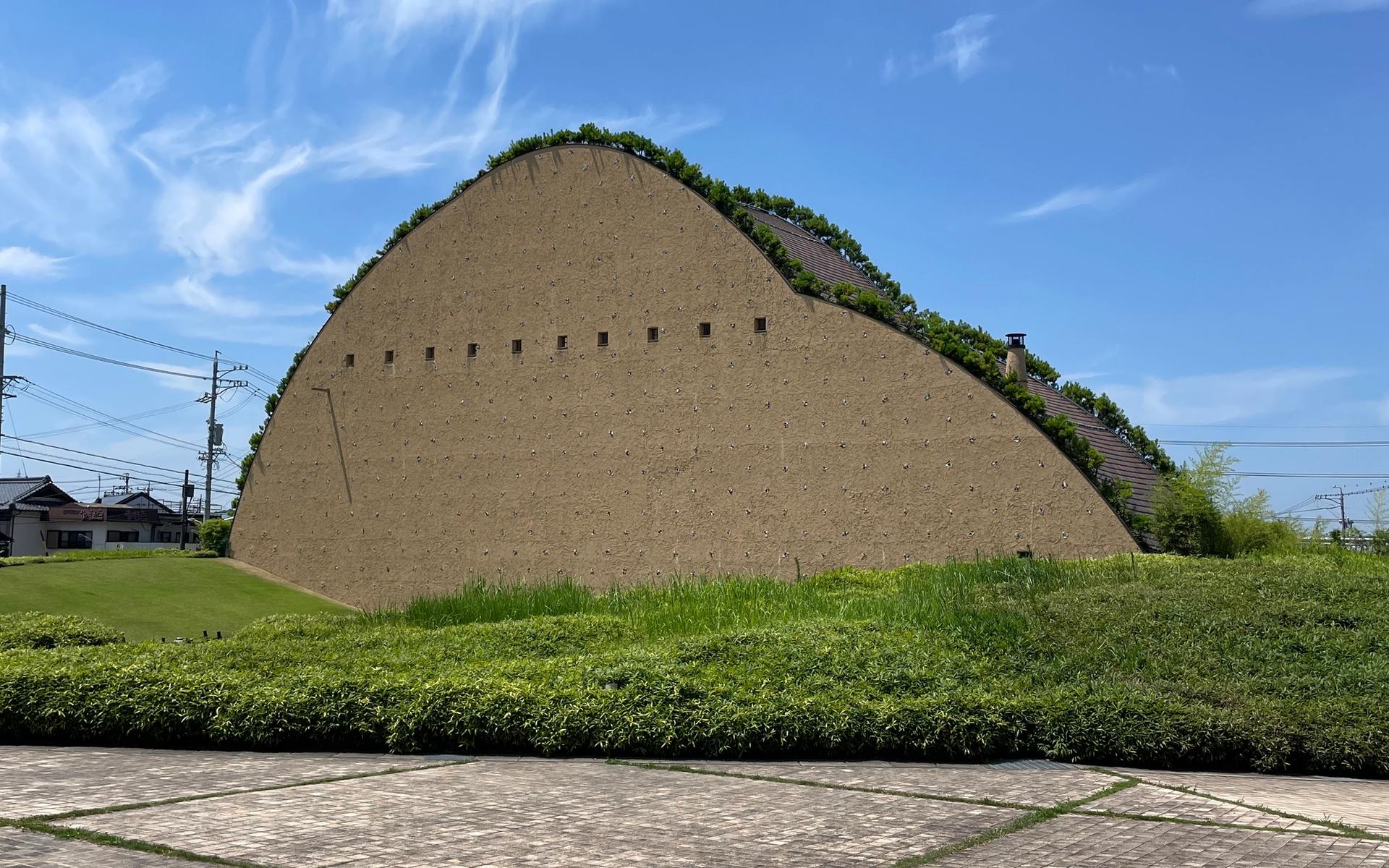
Then we visited Mosaic Tile Museum Tajimi, which is another building by the architect Terunobu Fujimori (who we also first learnt about from the book The Japanese House). This building is incredible. The exhibit was a bit underwhelming compared to the building in my opinion. But we went to see the building anyway :)
In Tajimi town, there are also quite a few pottery shops and studios too, particularly along a road called Oribe Street. We briefly visited them when we were there. There was nothing that particularly stood out for us. Nearby there is a cute Japanese sweets shop called Gohei Mochiya that sells grilled mochi balls that my friend Ben told me was very good grilled mochi. Sadly we got there just as they closed! Go early.

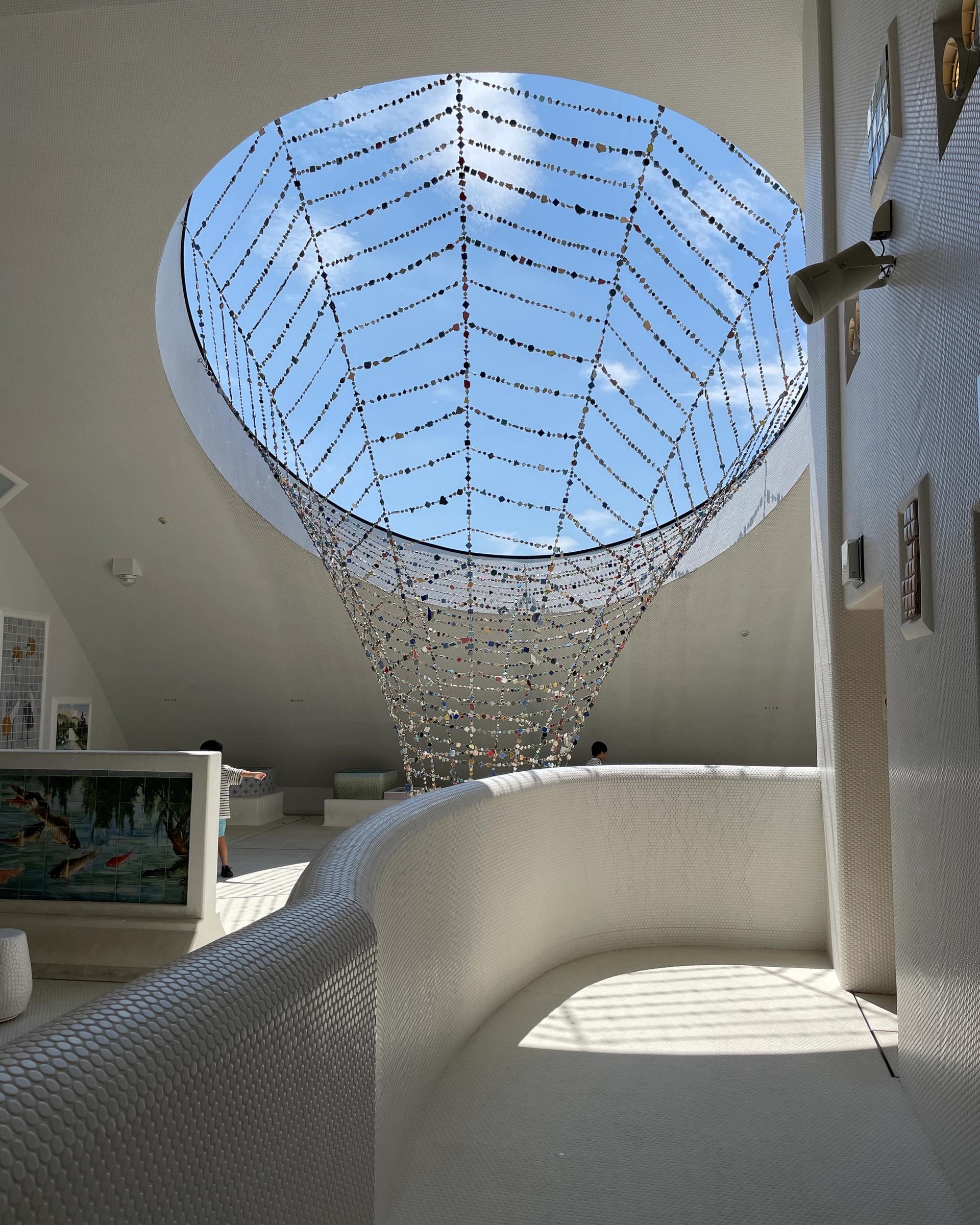
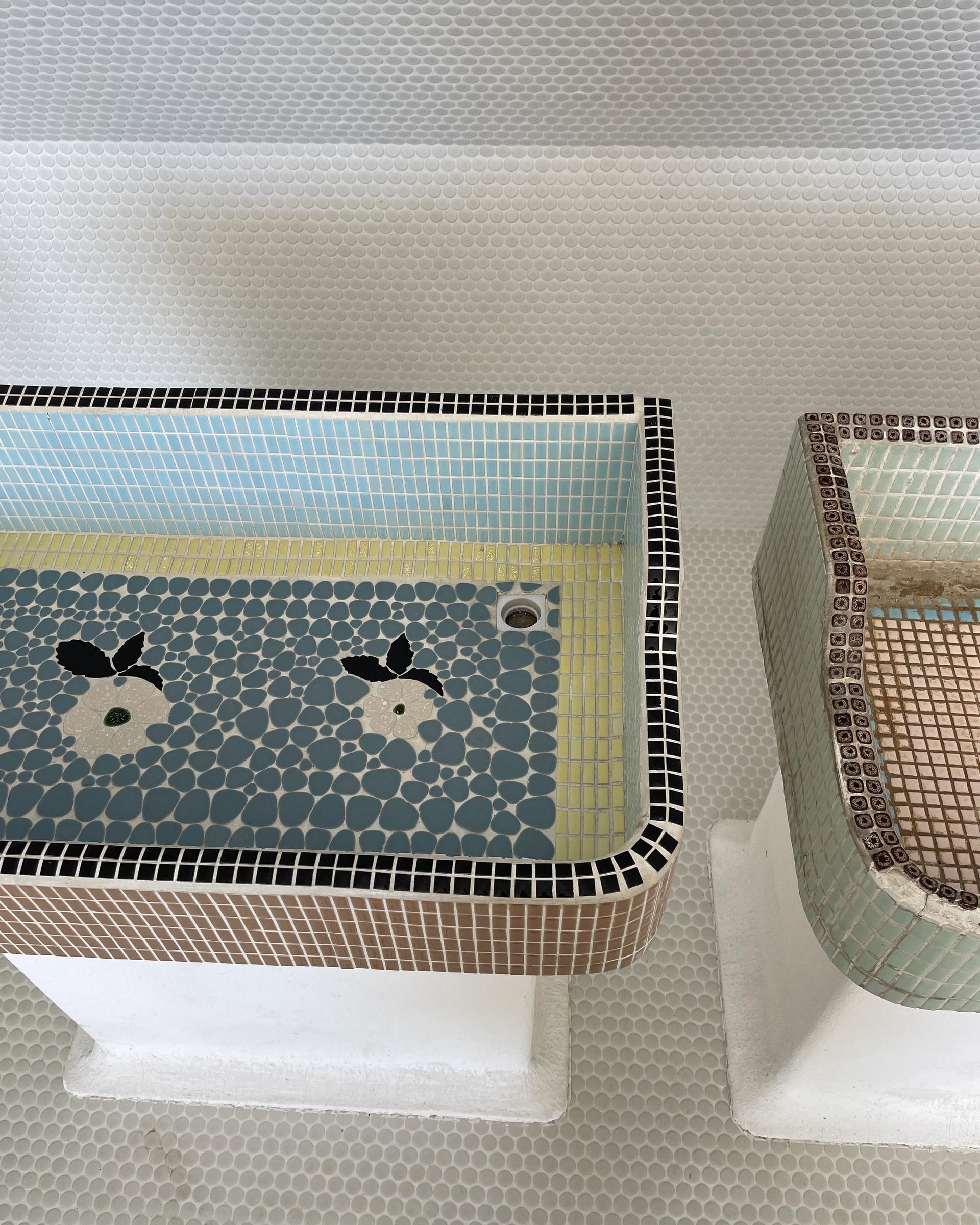
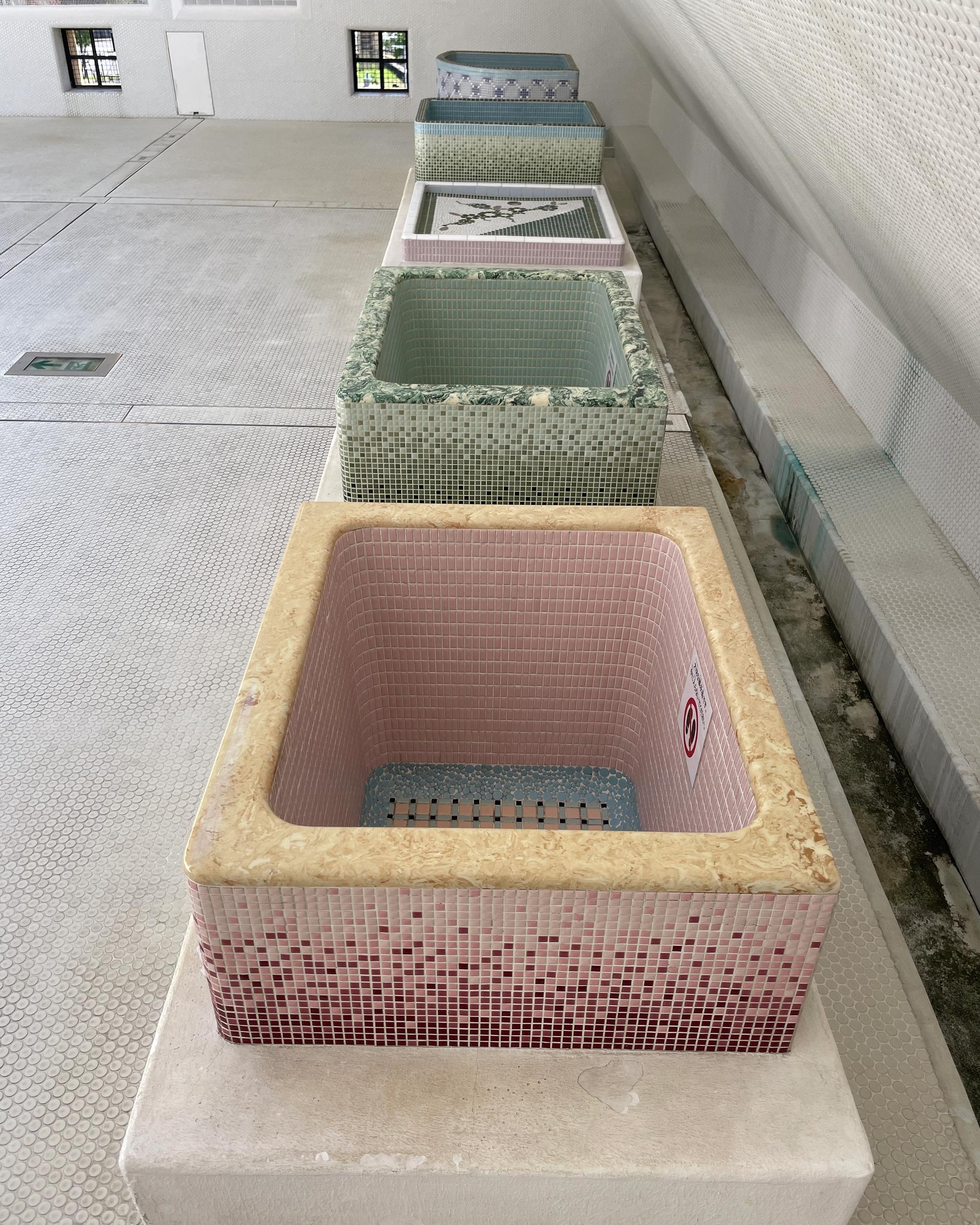
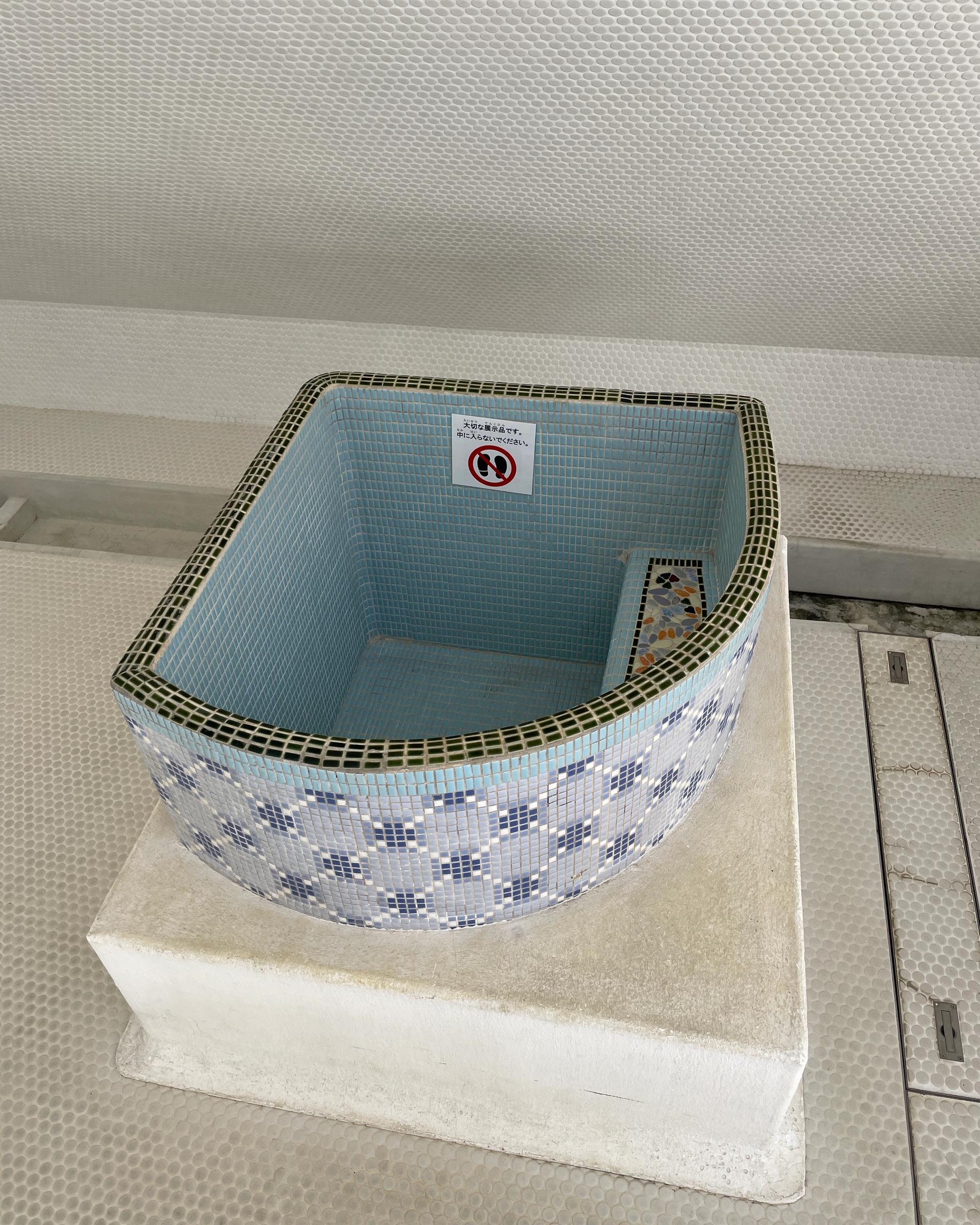
Yokoni Plants
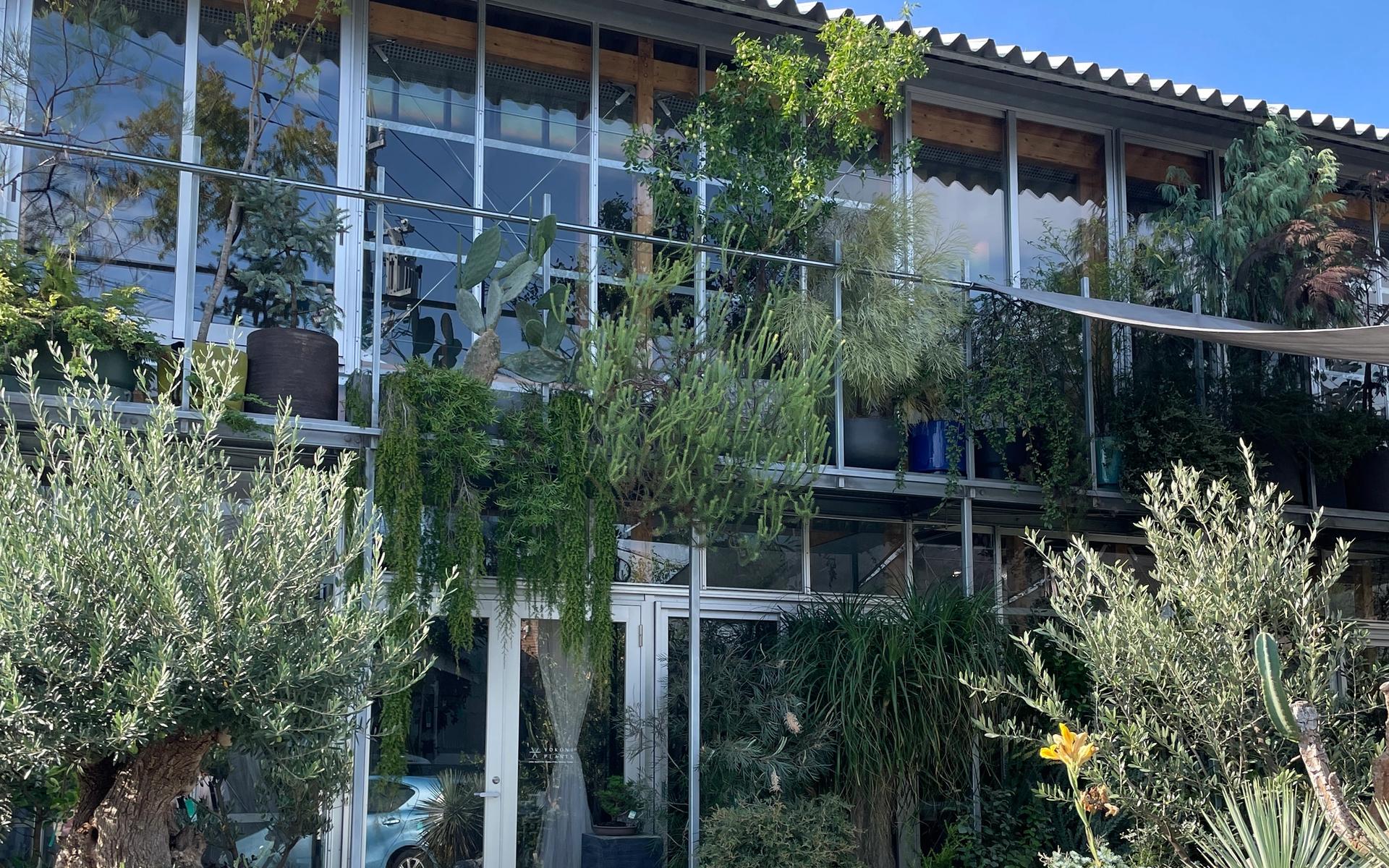
The last thing we visited on the way back to Kyoto was Yokoni Plants a plant shop in Nagoya, which was designed by some of our favourite contemporary architects Kimura Matsumoto. They also designed Ba Hutte (the skinny book shop bar) and Yenta Bakery and Bolts! Which you can read about on the Kyoto tips blog post too. We really love visiting Kimura Matsumoto works whenever we can so seeing this plant shop in person was fun for us to see all the details in person.
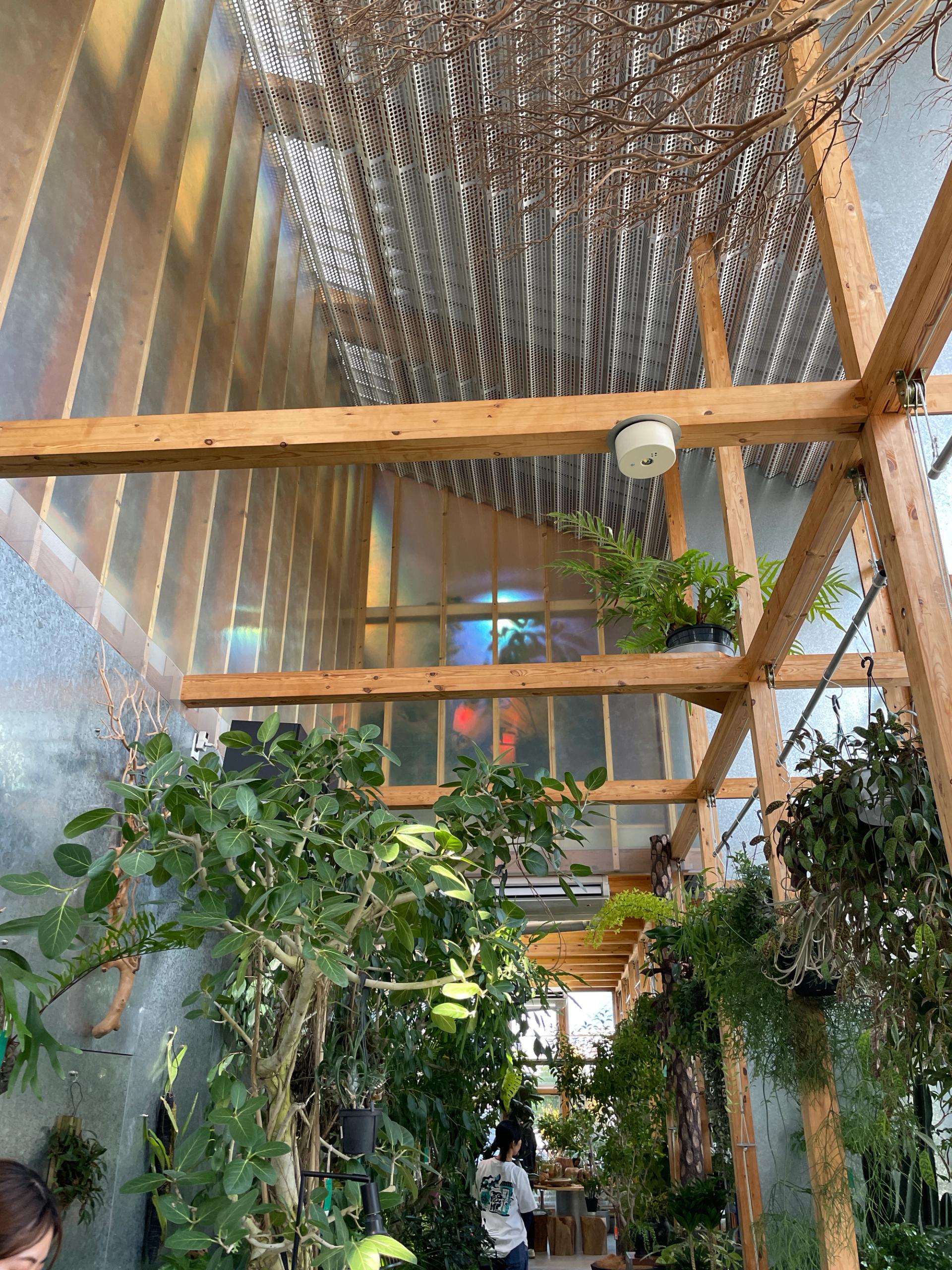
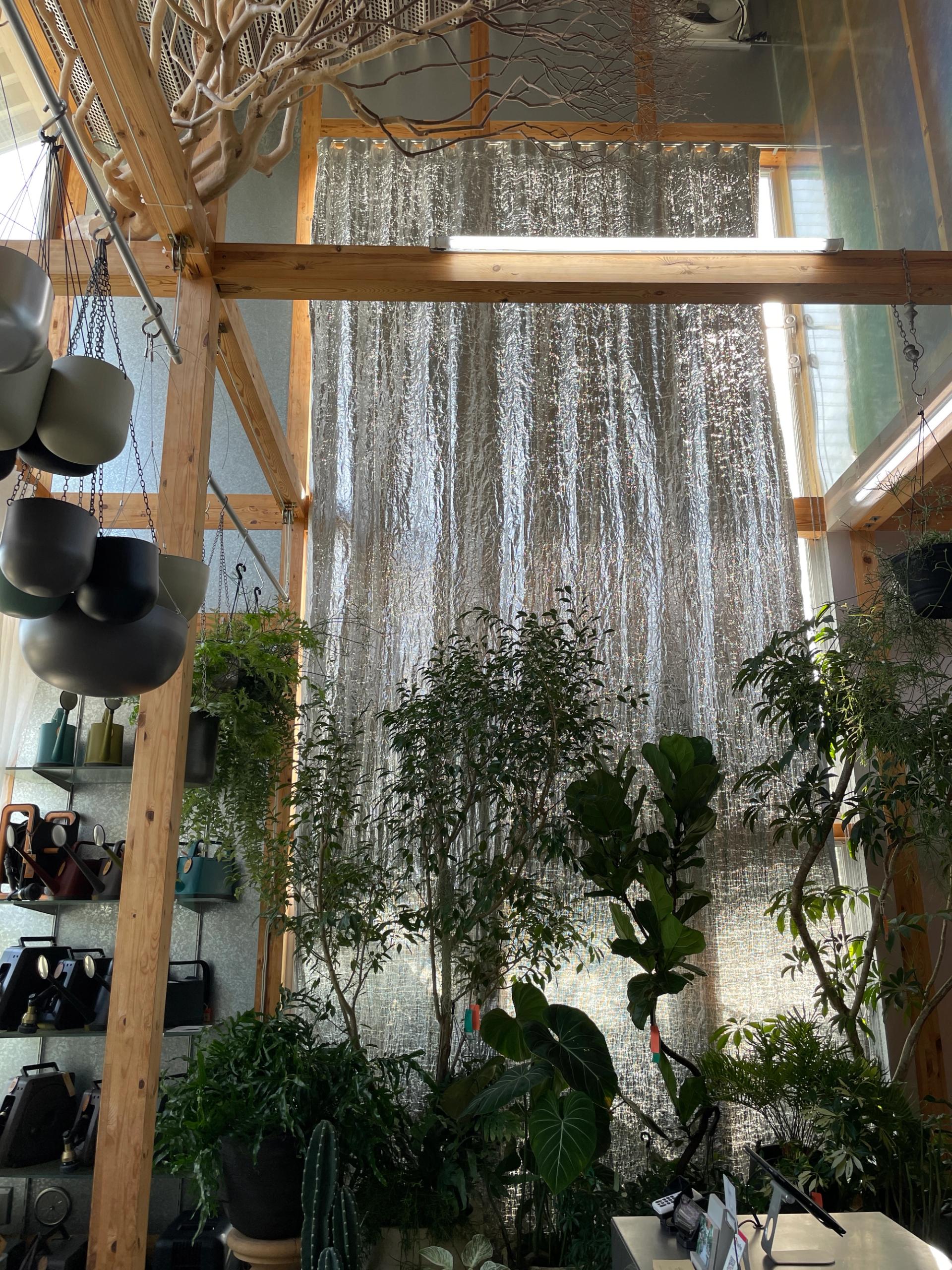
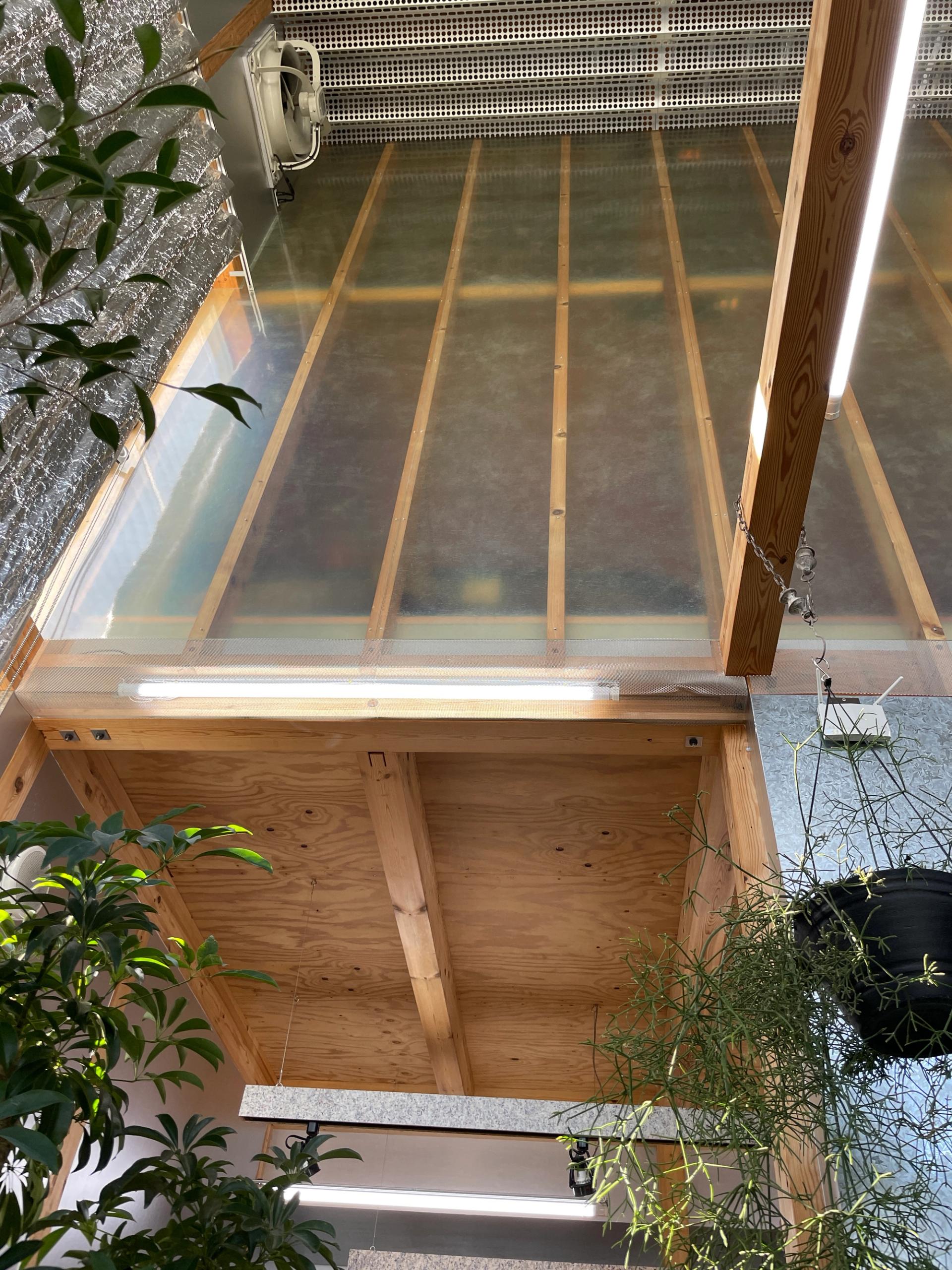
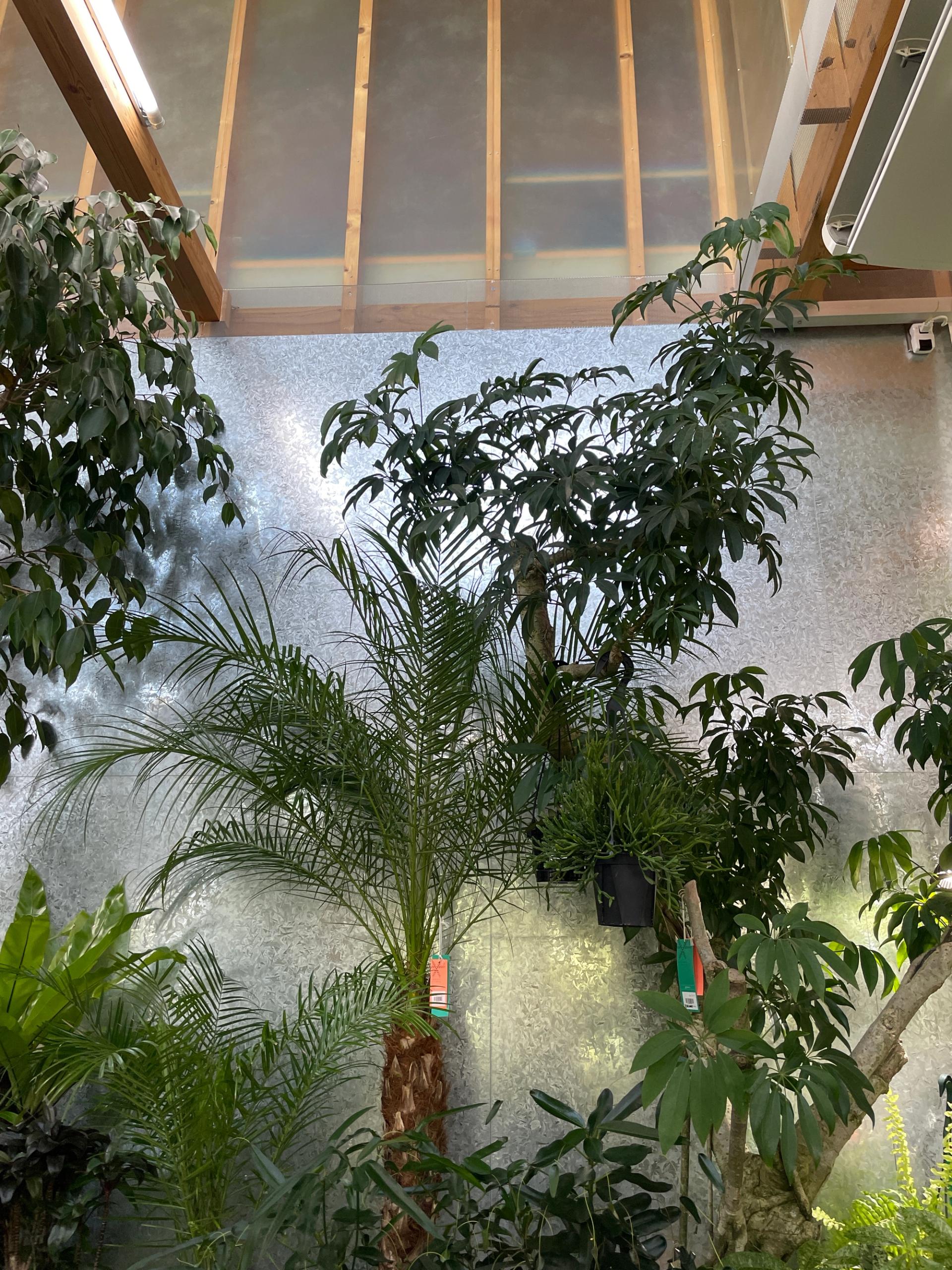
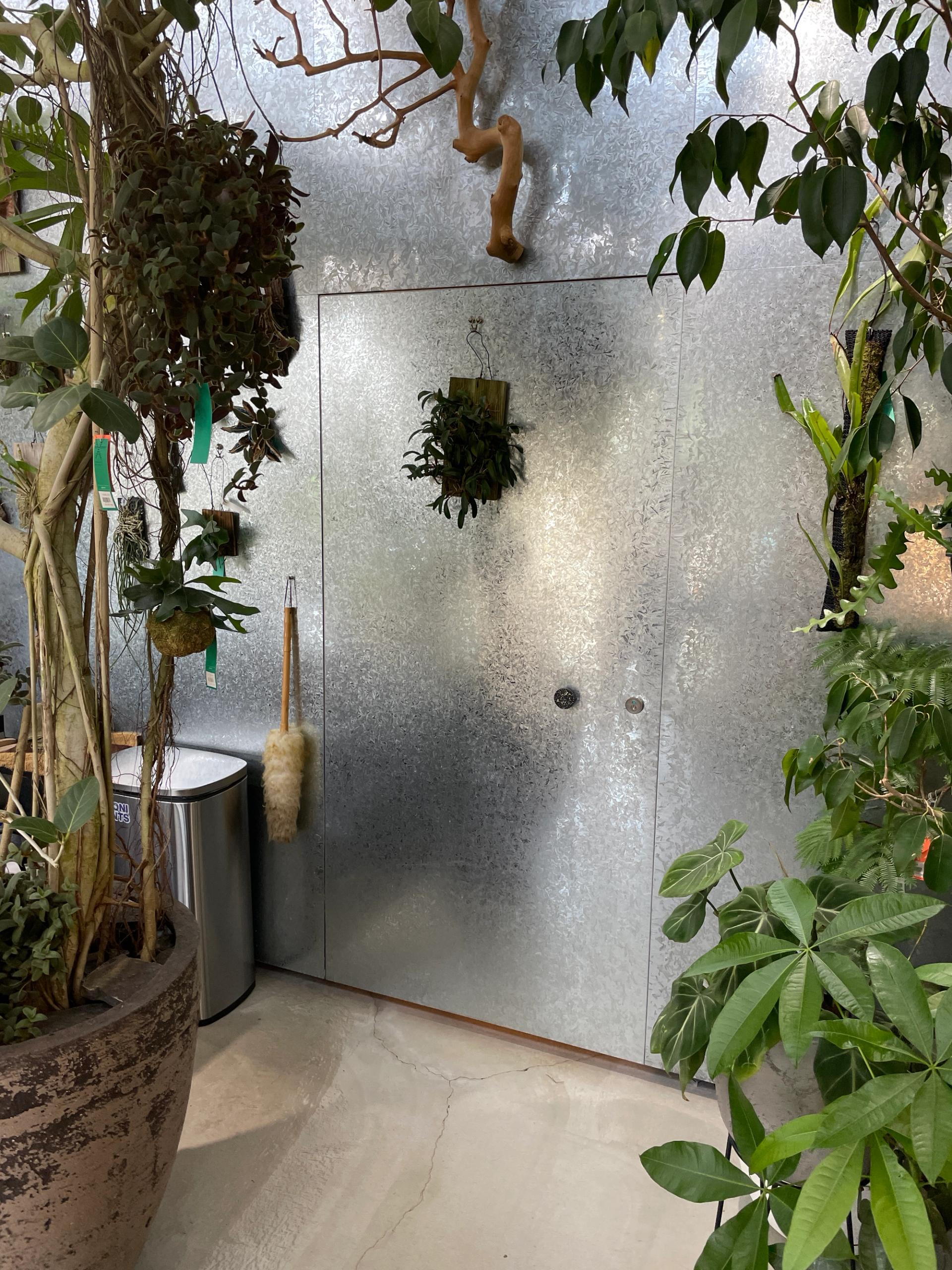
Shigaraki
Shigaraki is only about an hours drive from Kyoto. We have been to Shigaraki twice and both times hired a car in Kyoto to get here. One of the times we went we did is as a day trip from Kyoto and visited Miho Museum on that same trip (more info below).
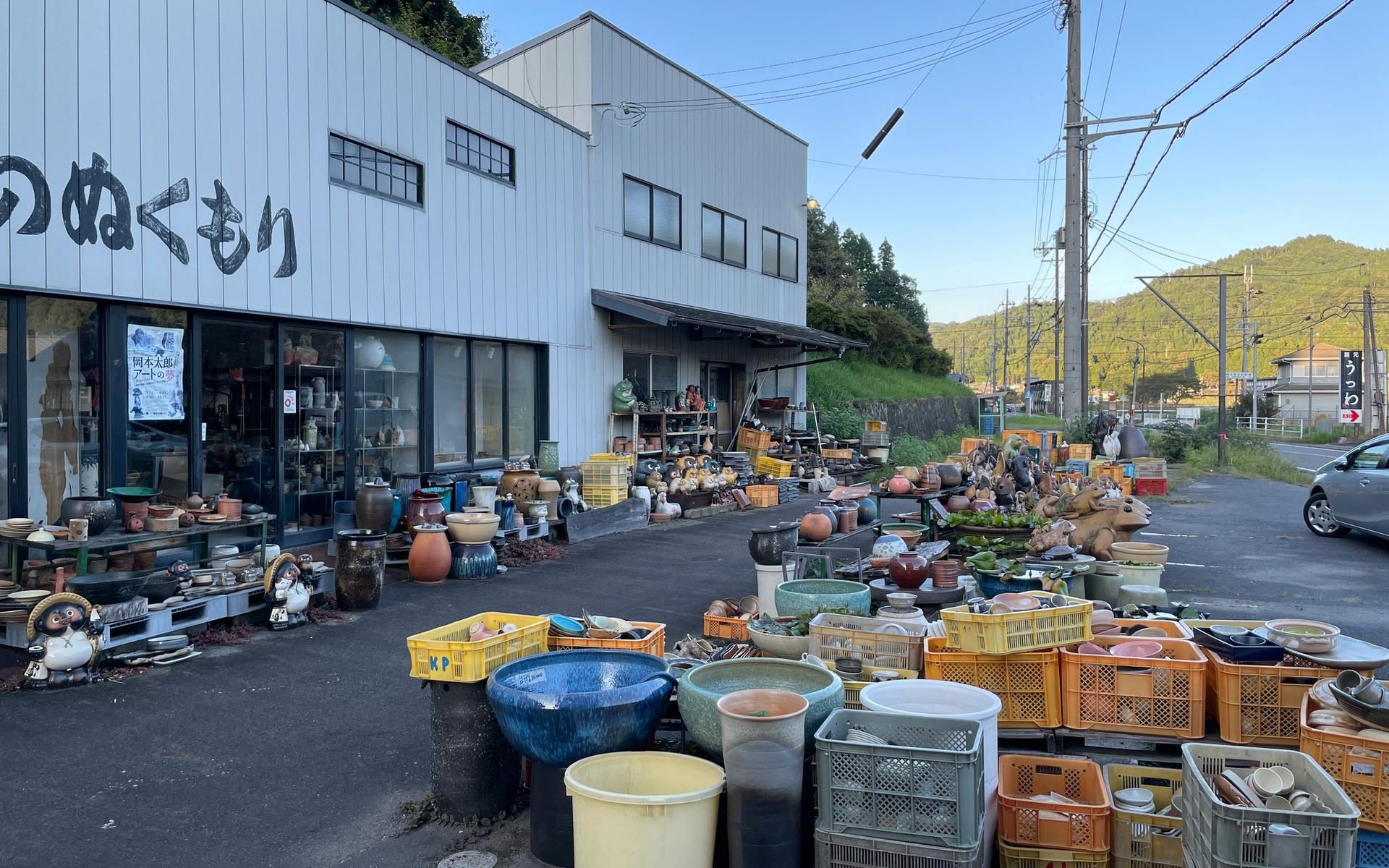
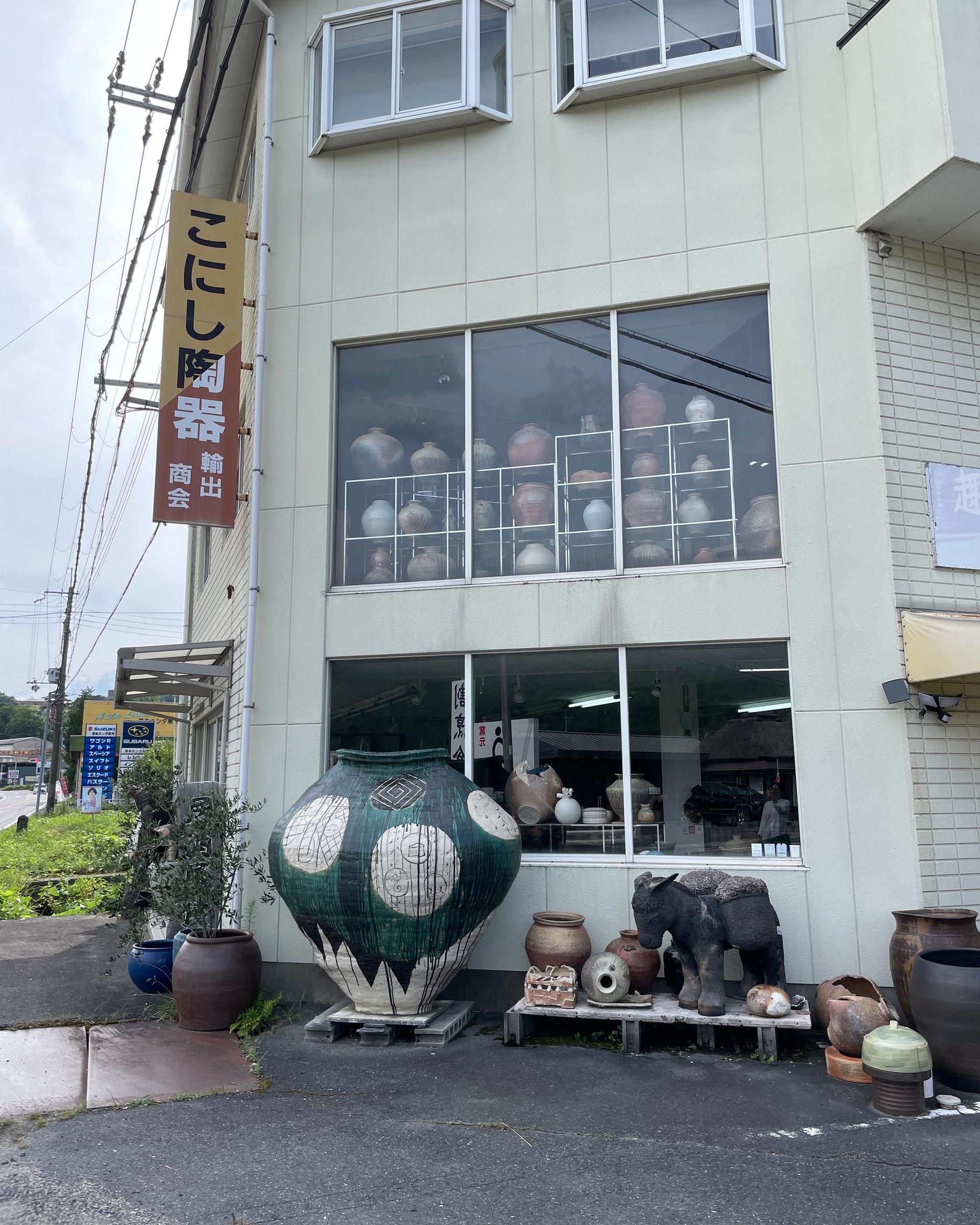
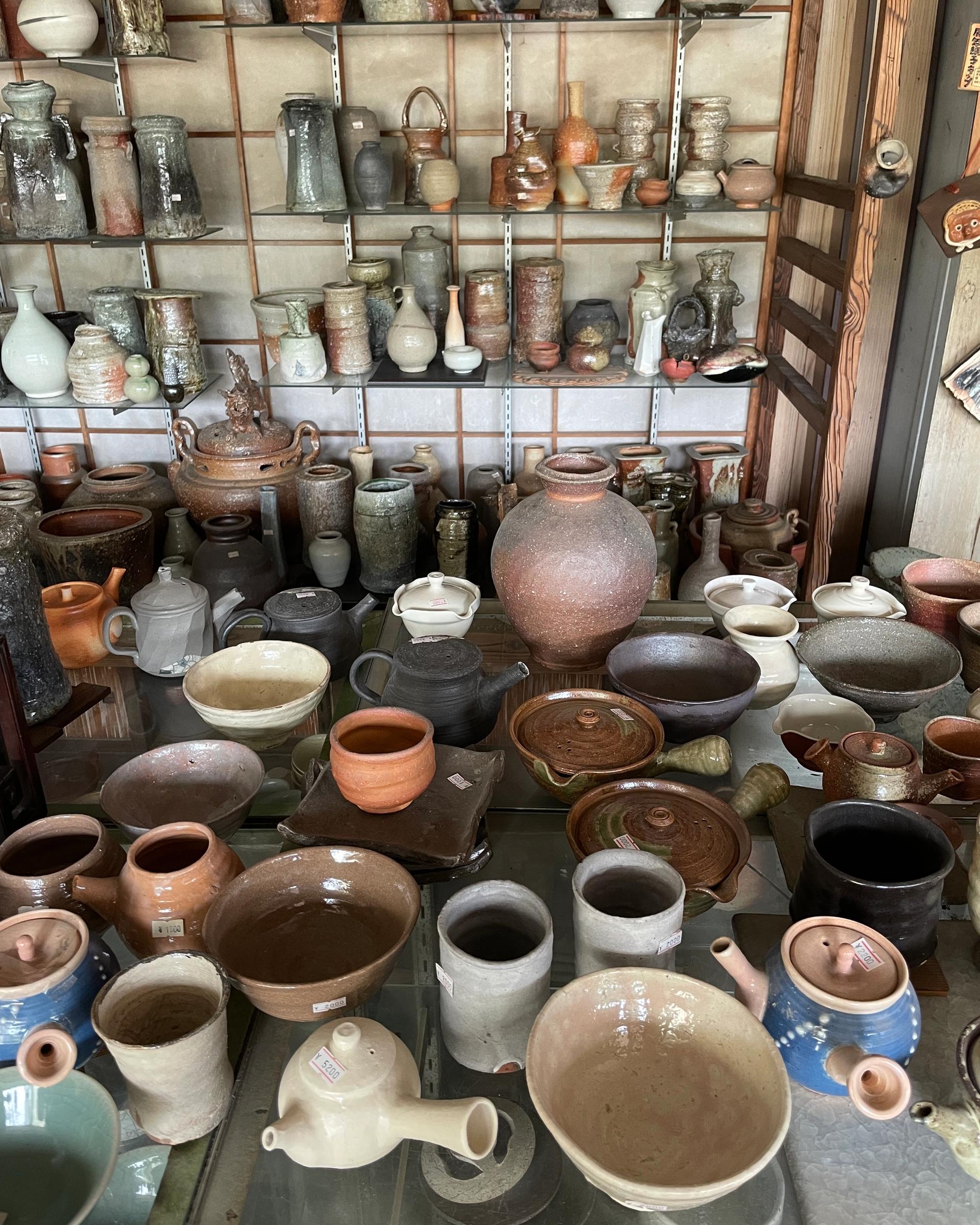
Shigaraki is another one of Japan’s Six Ancient Kilns (Rokkoyō), a group of historic pottery centres that have sustained continuous ceramic production since the medieval period. Traditionally, Shigaraki ware was used for practical purposes, including large storage jars, roof tiles, and vessels for the tea ceremony.
Today, Shigaraki continues to be a centre for ceramics, where traditional techniques coexist with contemporary approaches. What we really loved about Shigaraki was that the town maintains a working atmosphere, with numerous pottery shops and workshops that feel accessible and a lot less curated than the other pottery towns we visited. Many shops display large quantities of ceramic ware outdoors, ranging from bowls, cups and everyday tableware to huge garden pots and the iconic tanuki statues associated with the area (you will see a lot of those!). Compared to other historic pottery towns, we felt that Shigaraki retains a utilitarian character, offering insight into how ceramic culture remains integrated into daily life in Japan. It was something we discussed a lot after our trips to Shigaraki; The accessibility and informality of the local pottery scene reflect the enduring role of ceramics as functional objects as well as artistic expressions.
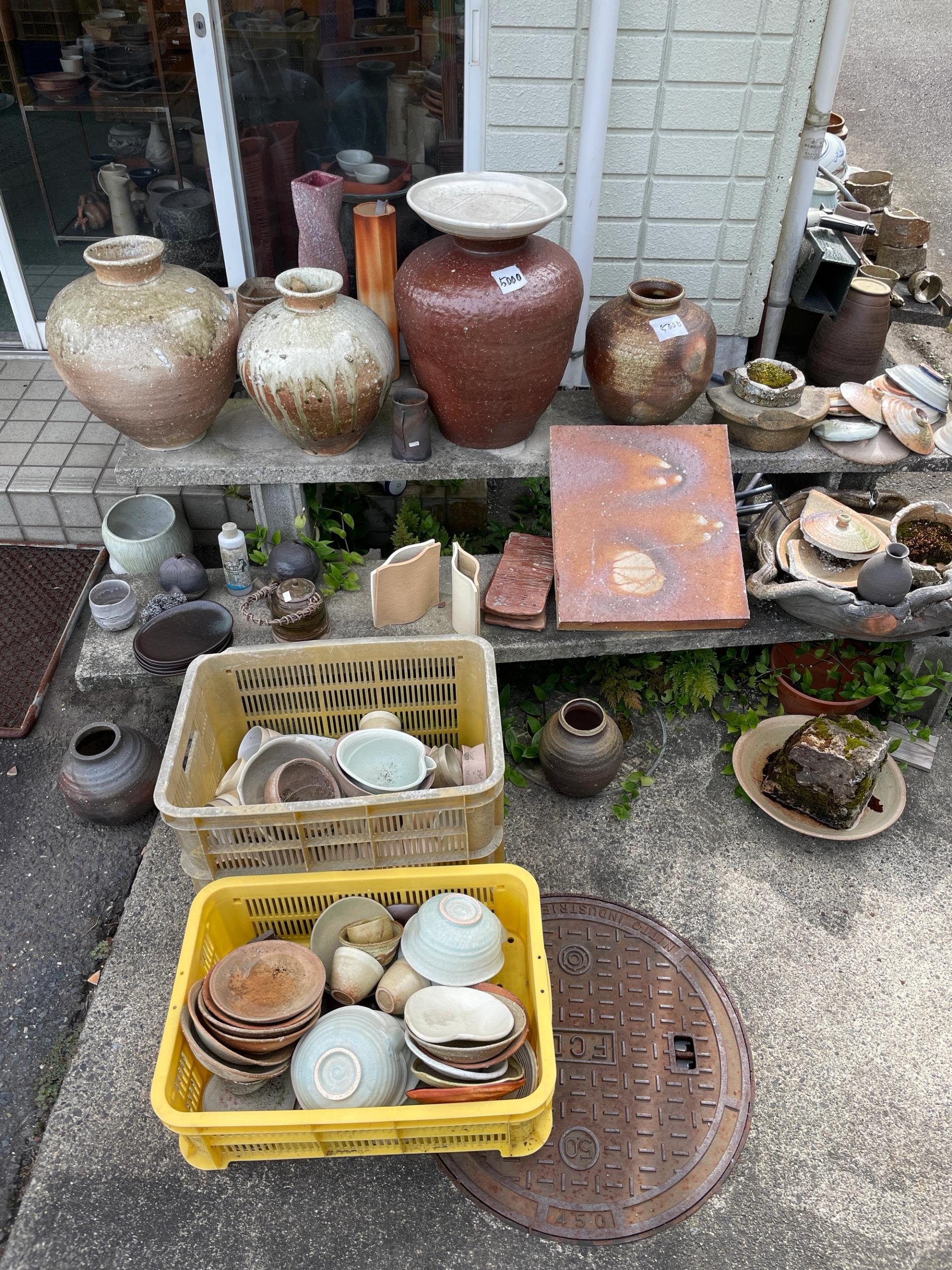
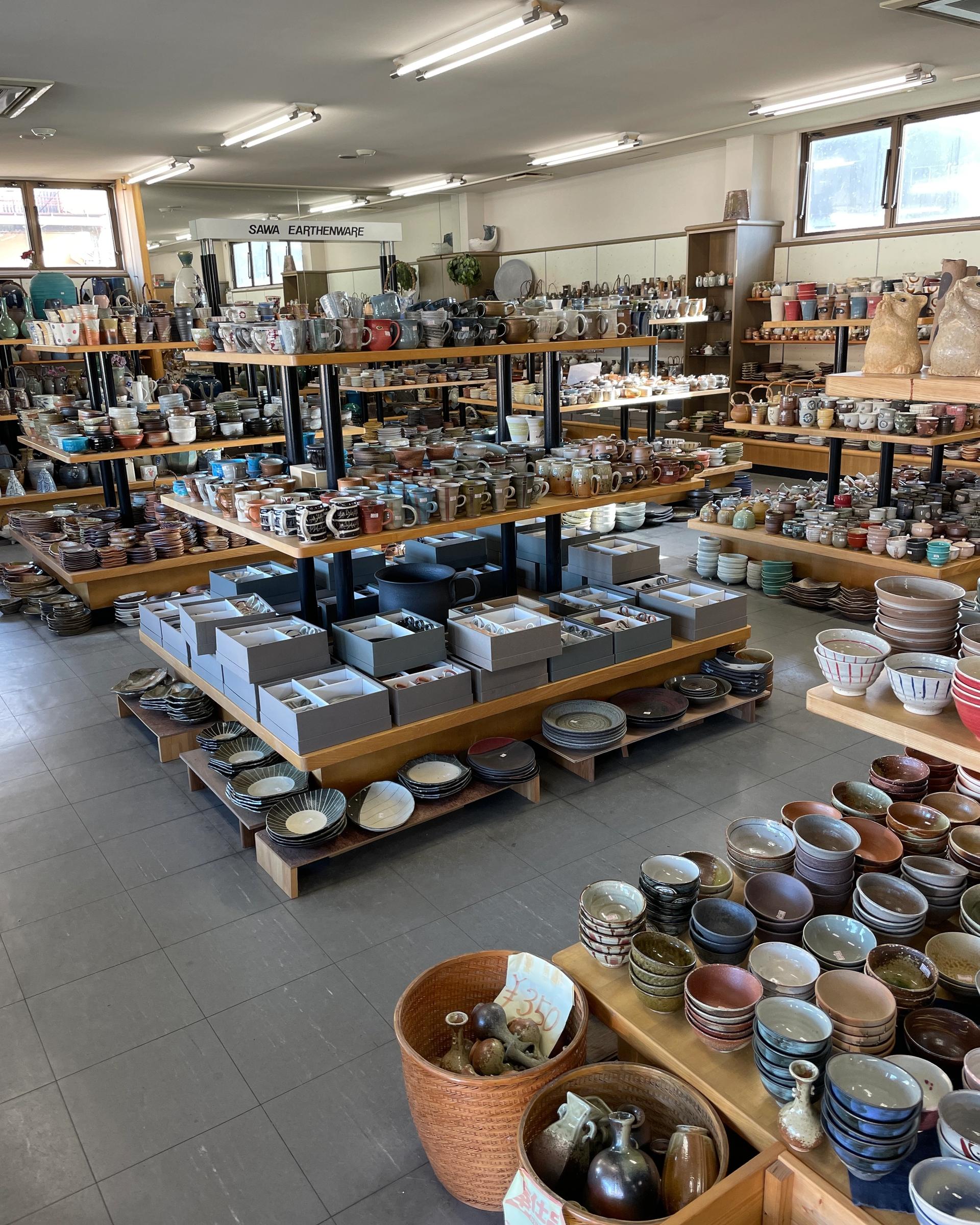
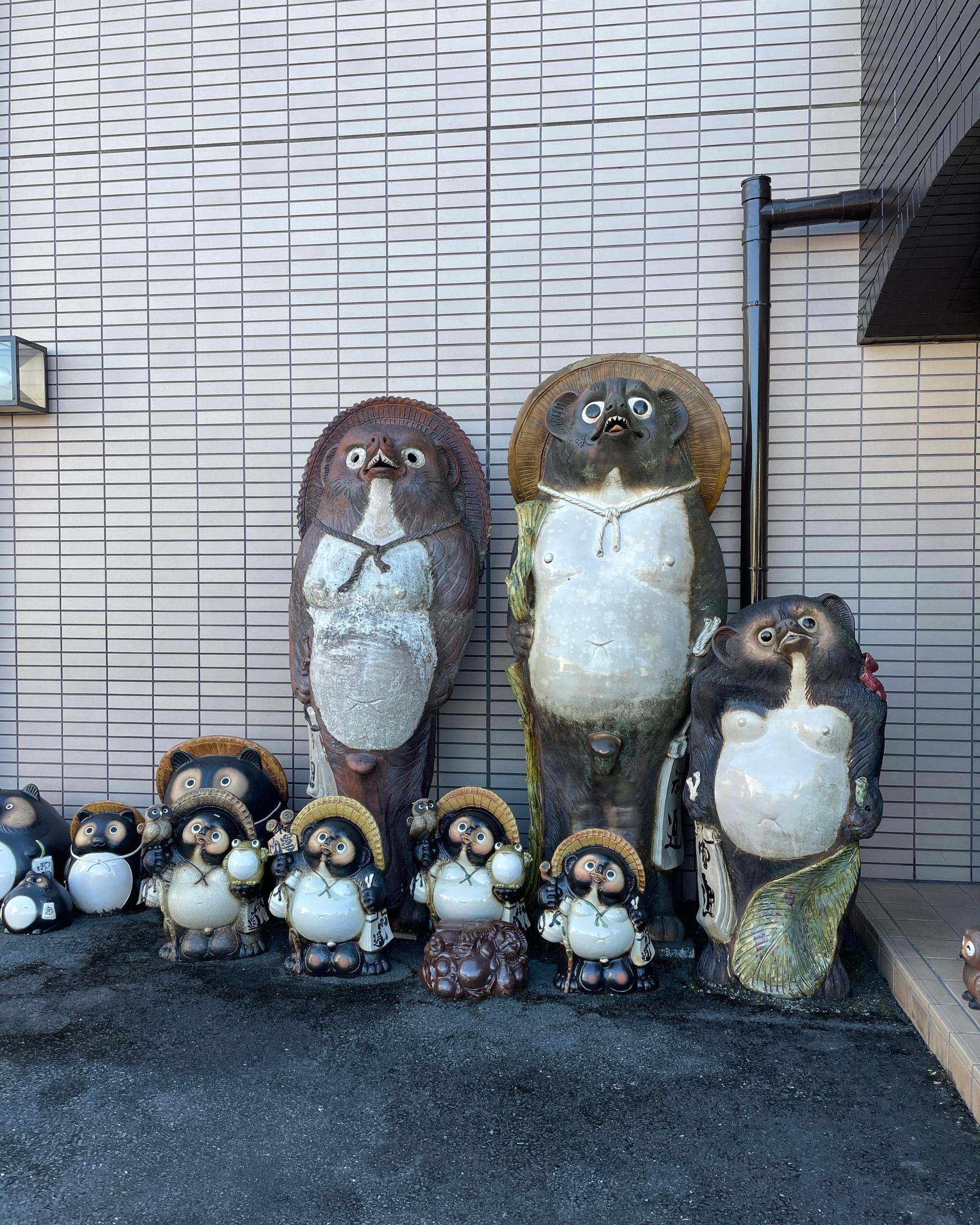
Most of the pottery shops we liked the best were along the main highway through town (National Route 307), BUT there are also so many layers back. I suggest really taking time when you are here because there is a lot to look at. This town is quite fun for people who like to sort through piles and find their own treasures. It was amazing to see how many shops leave their stock out overnight. So much trust. Some shops just have their door open with a sign that says "call me if you want to buy something" and their phone number. Some shops will share staff, who will bounce between different stores to serve you. The photo to the right was from outside one of the garden pottery stores.
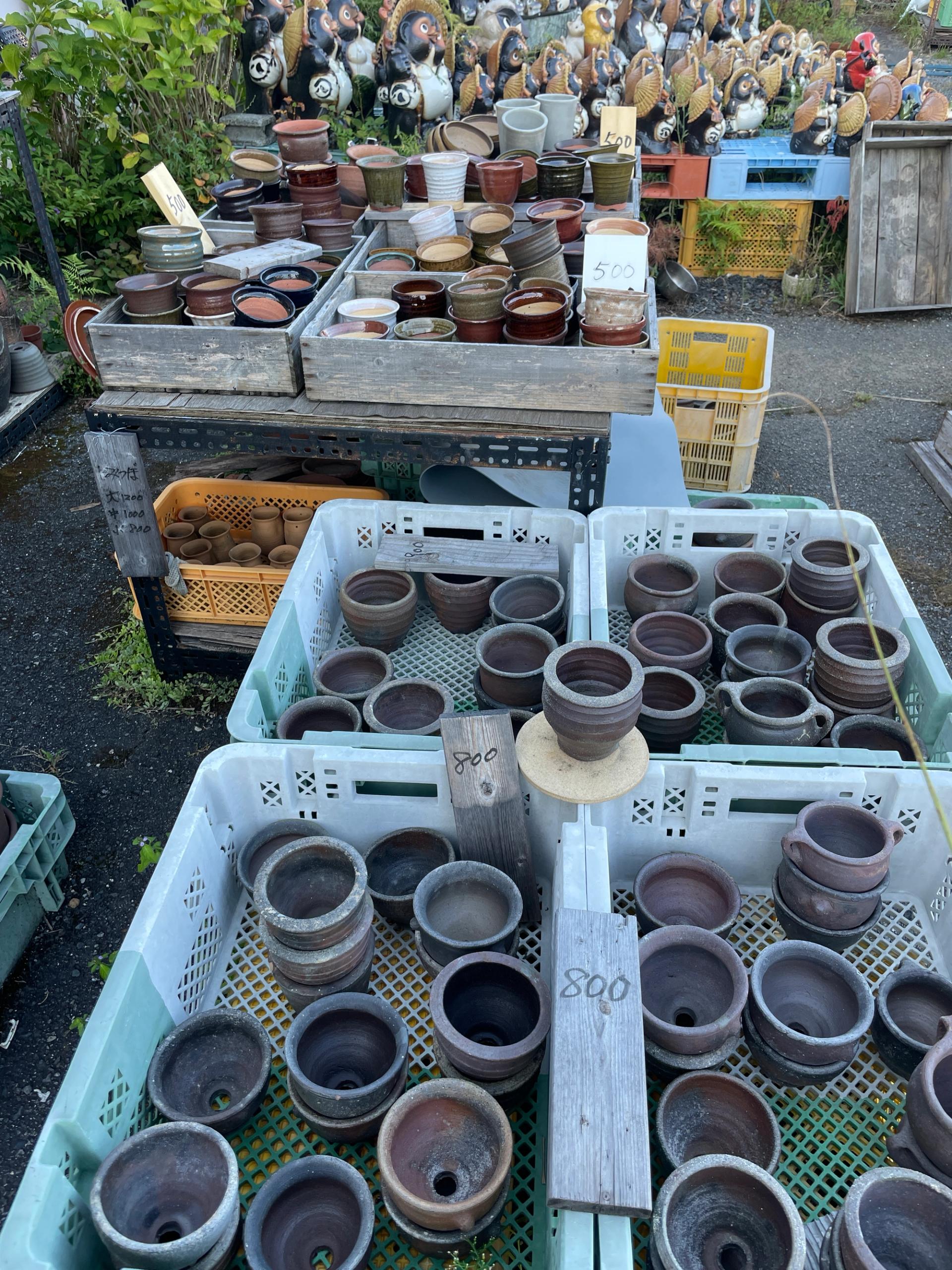
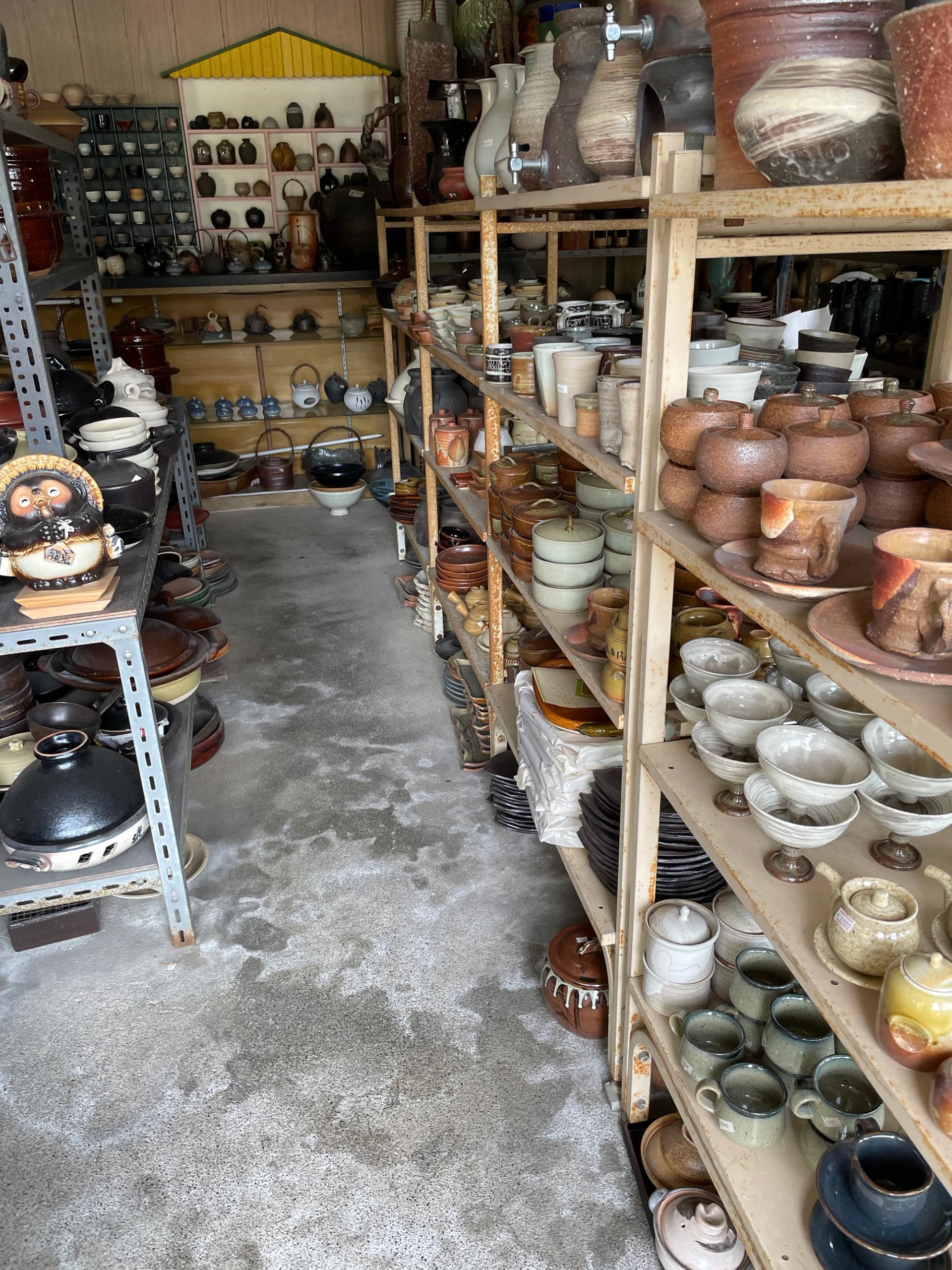
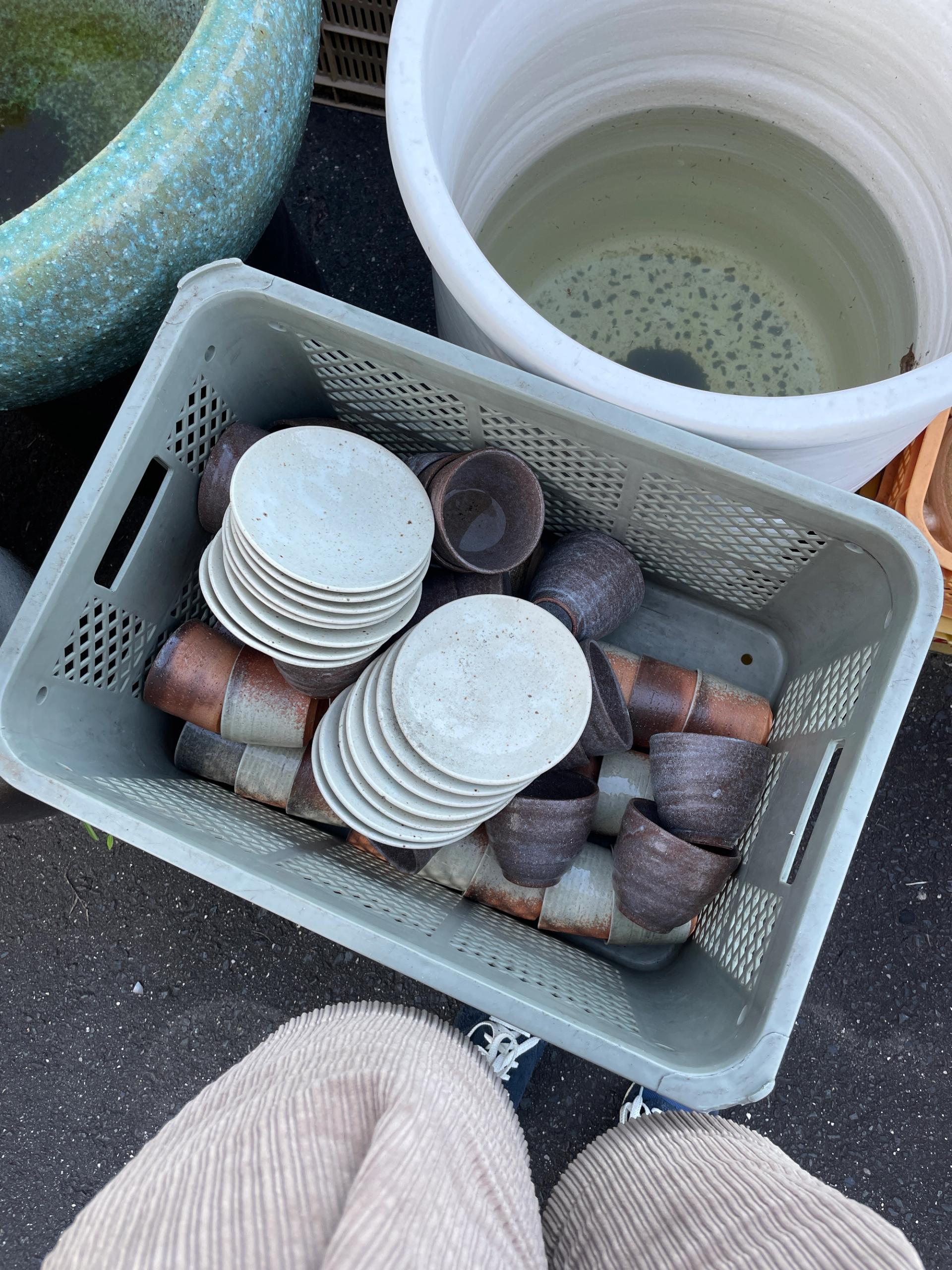
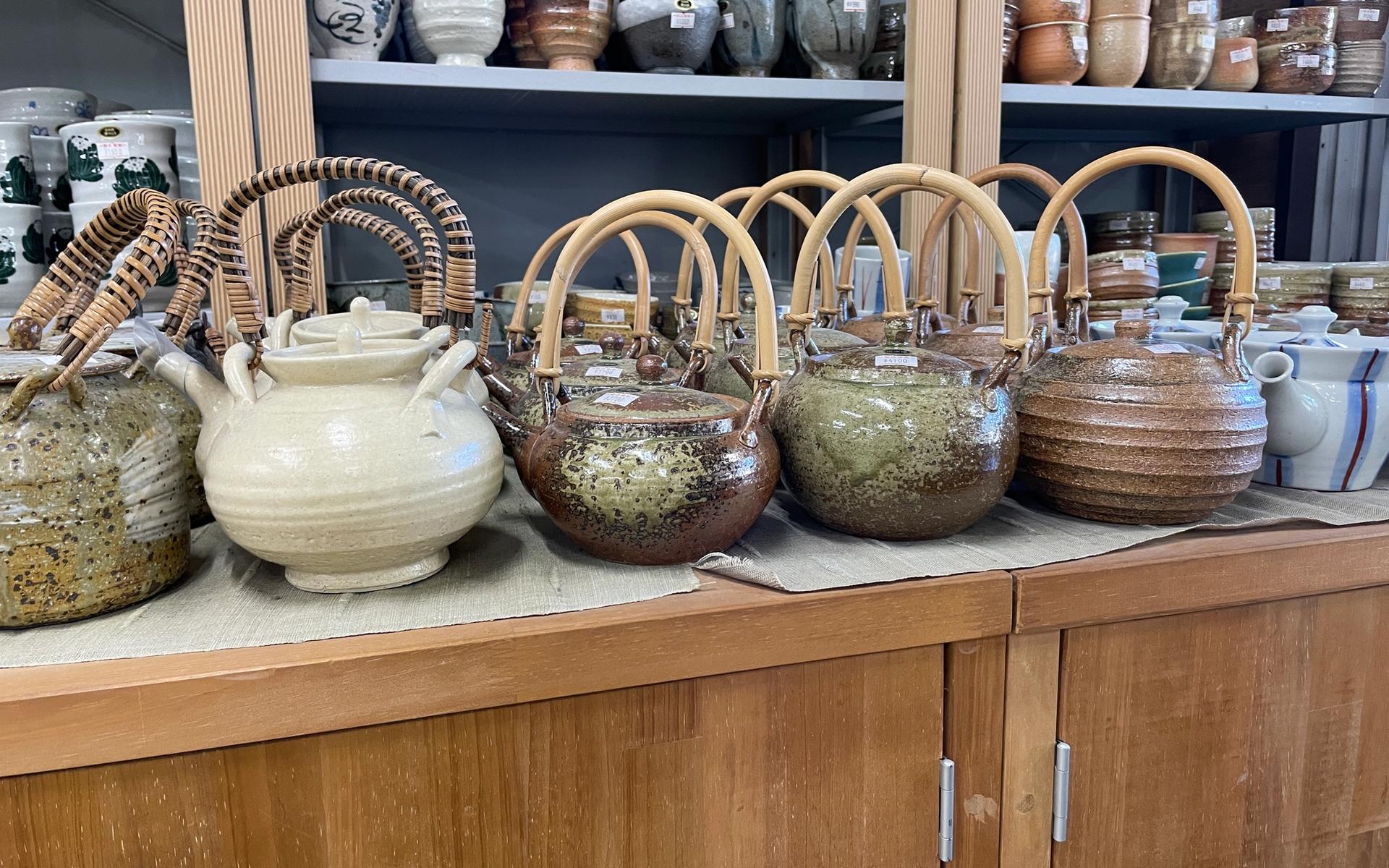
A few minutes drive from the main street you can also visit other studios and shops and see kilns like in these photos. I think there are places you can attend workshops and classes too. We are not interested in doing classes so I don't know about that, but you could look into it if it is an experience you wanted to do. We visited a lot of these places and found them just by looking on google maps for locations marked as 'pottery store'.
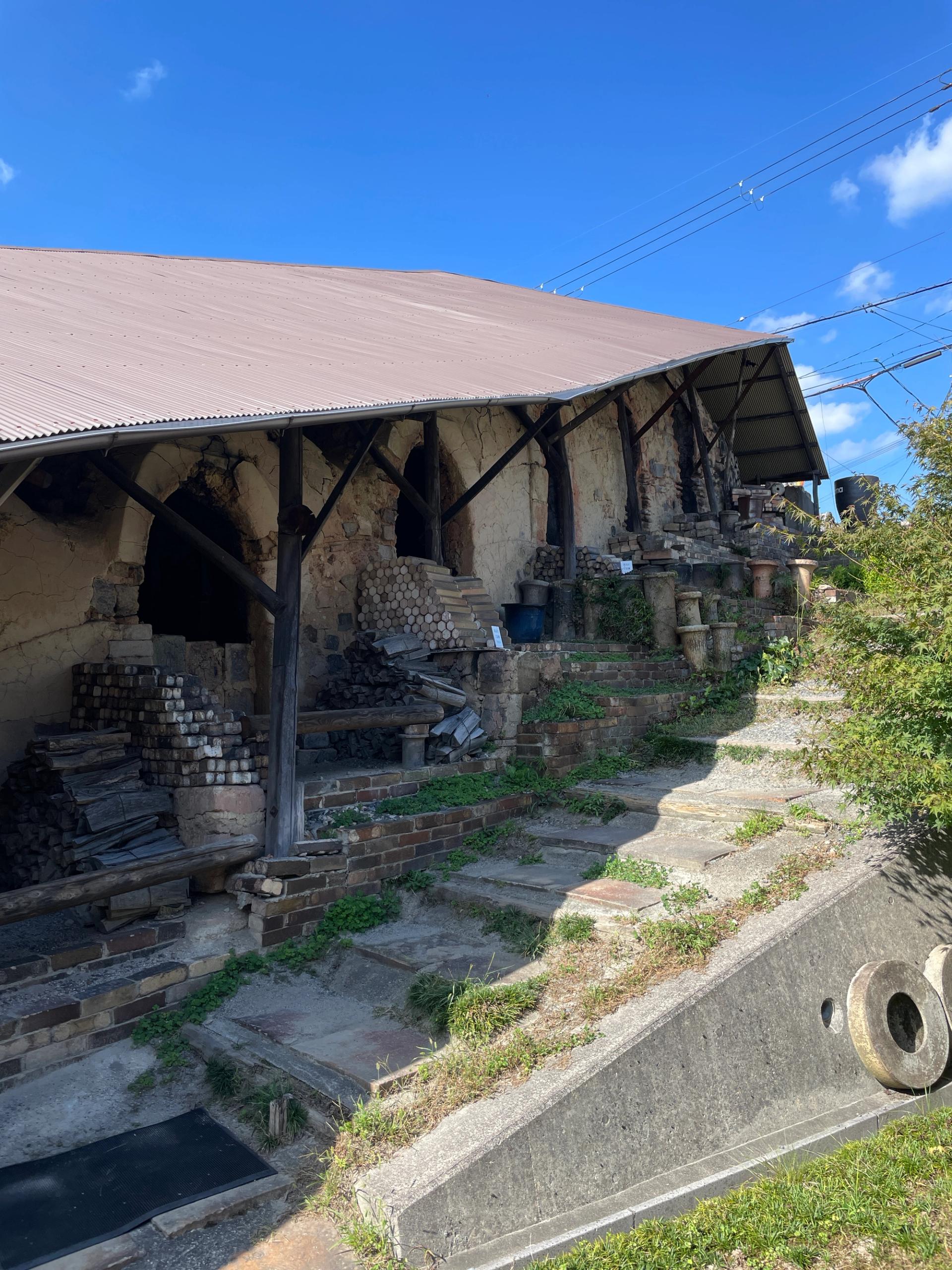
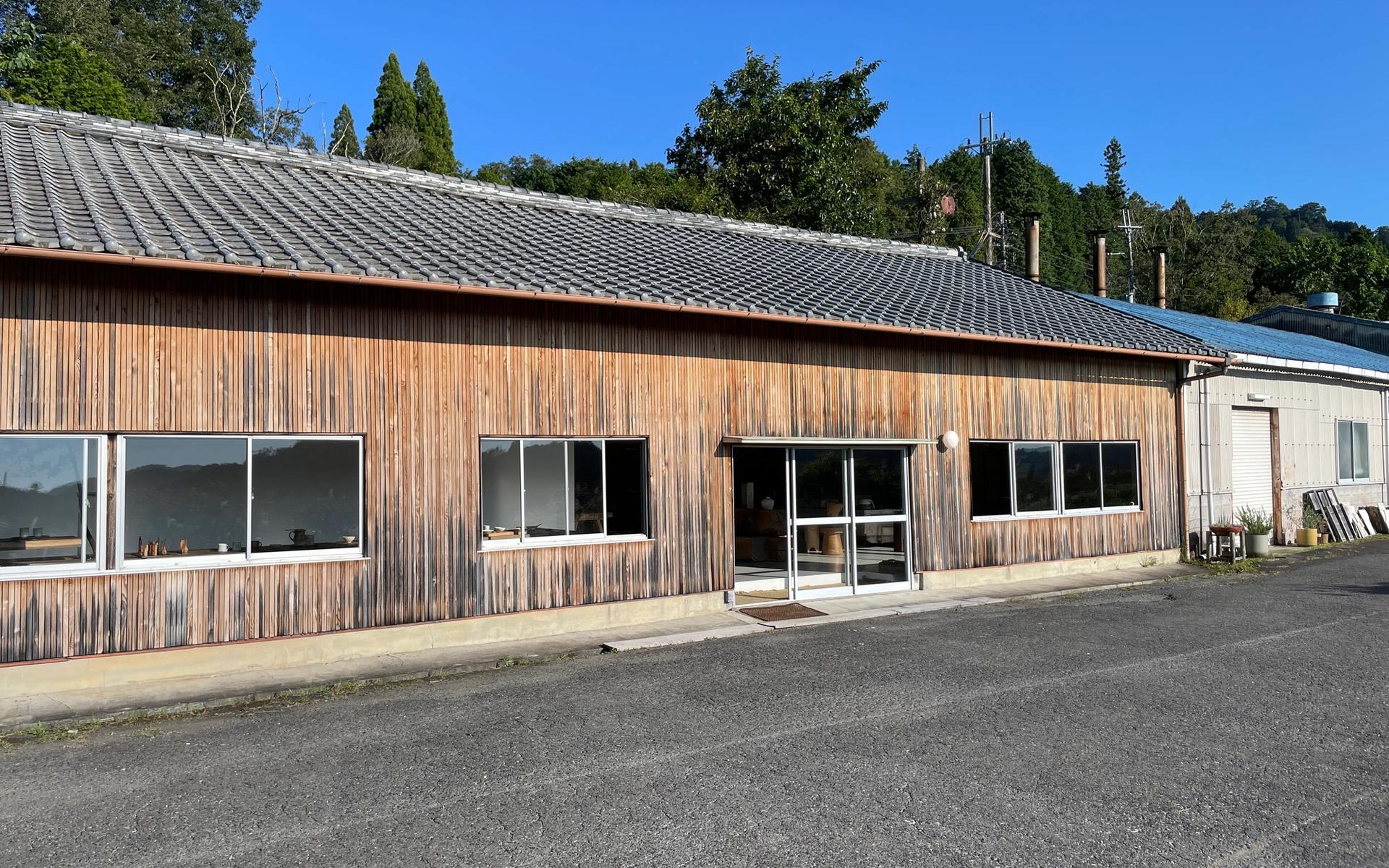
And a short drive in the other direction from the main street, you can visit a more contemporary studio called Nota Shop, which sells other local craft and design in addition to pottery.
They have an instagram account too. It is in a beautiful building.
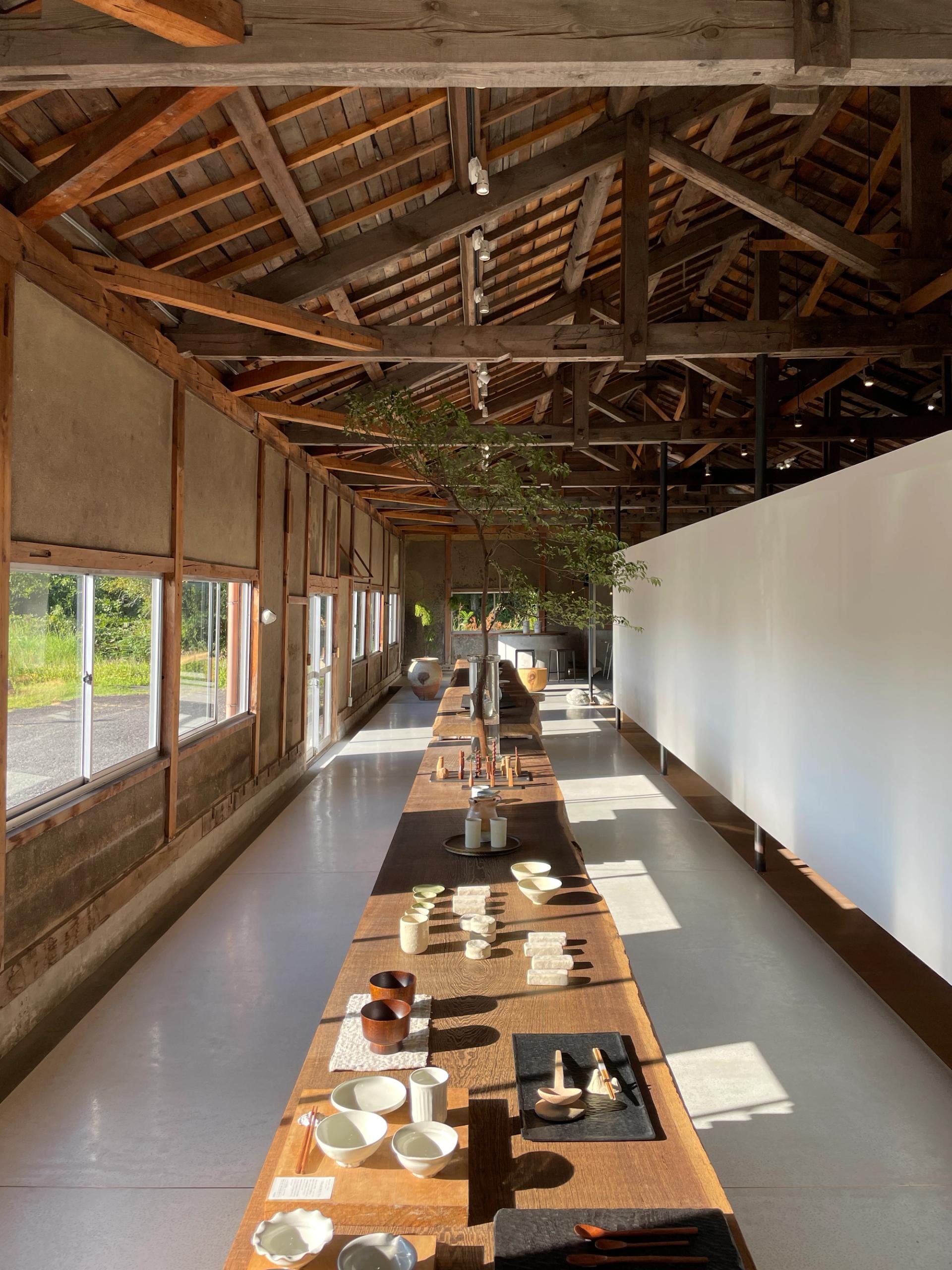
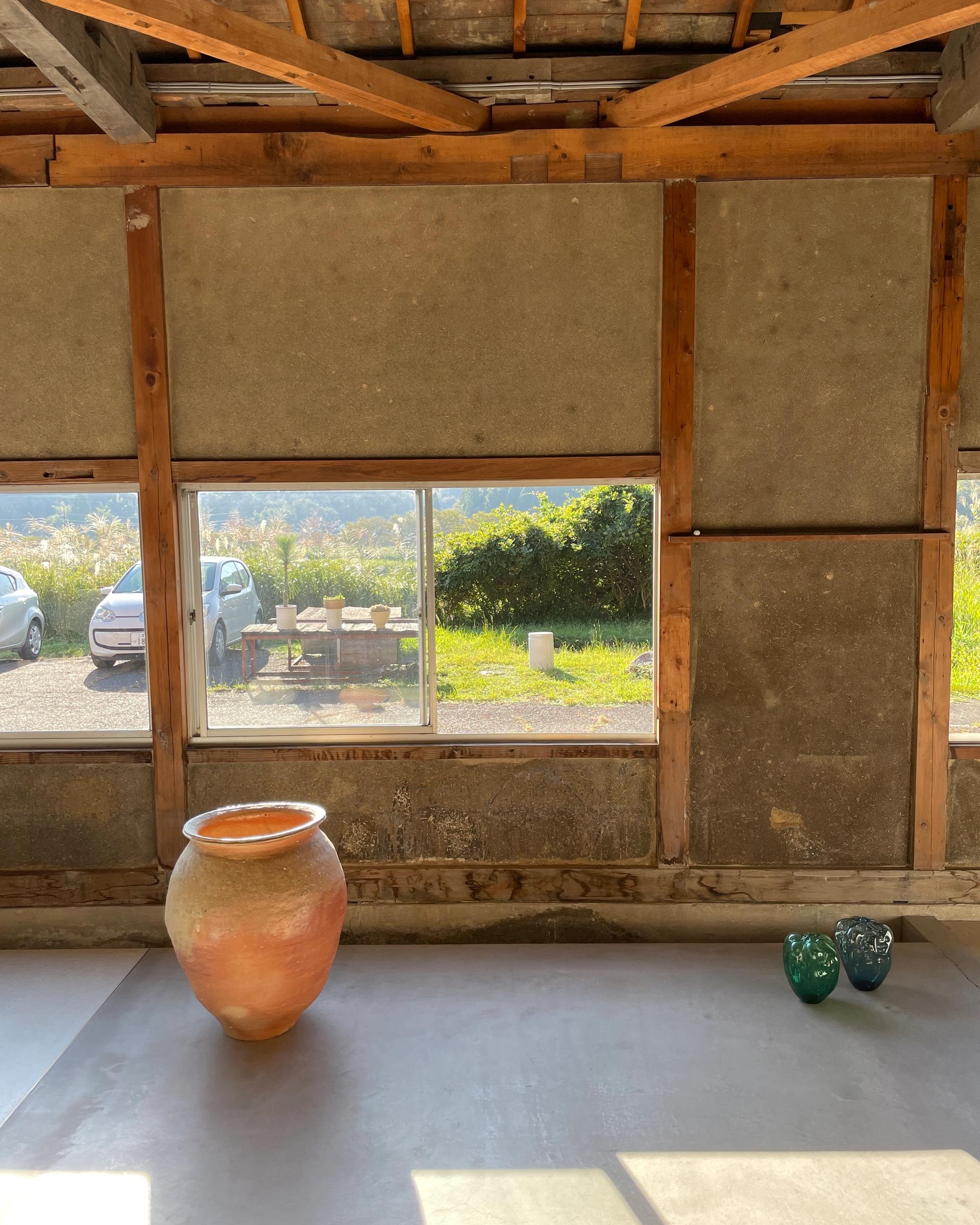
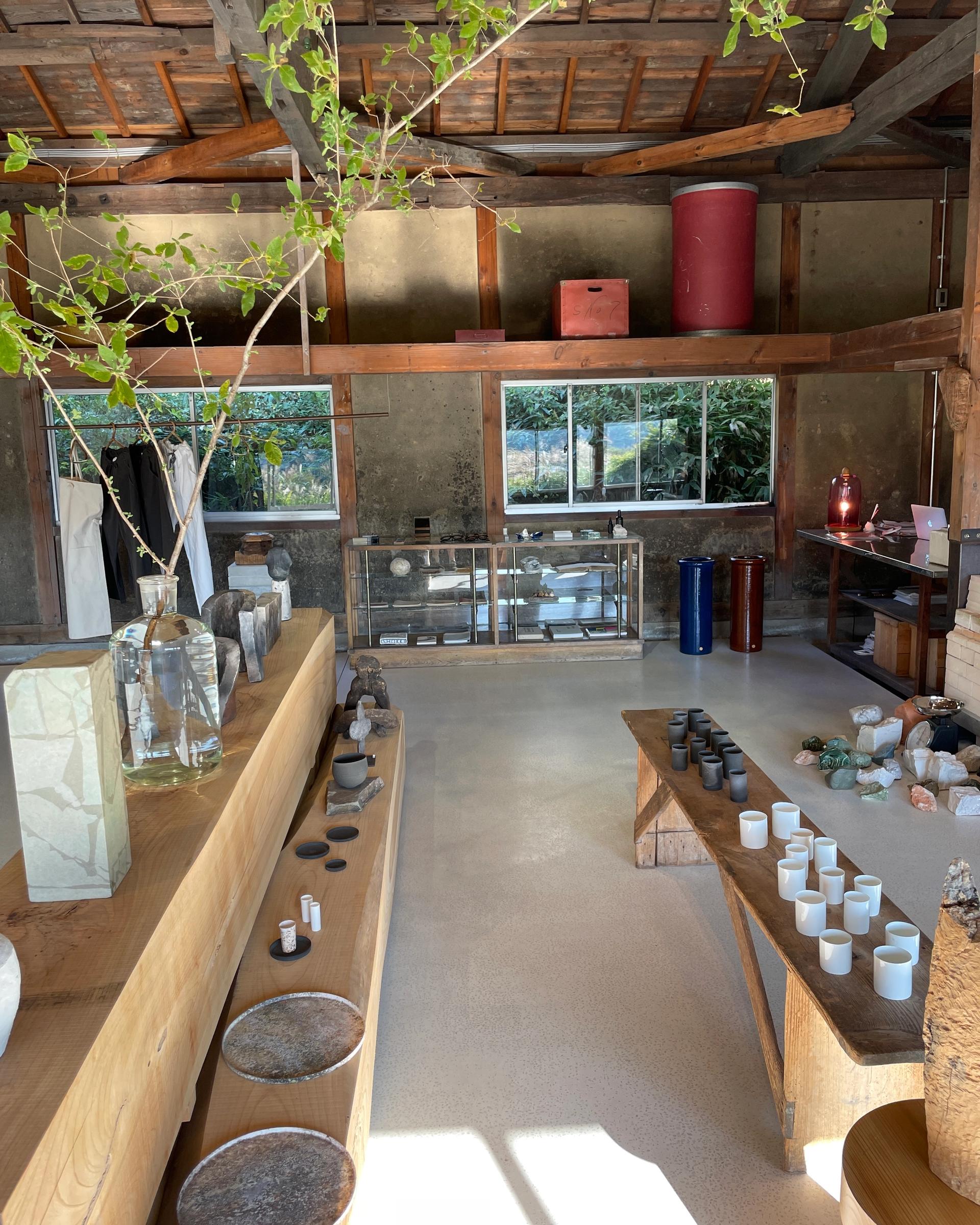
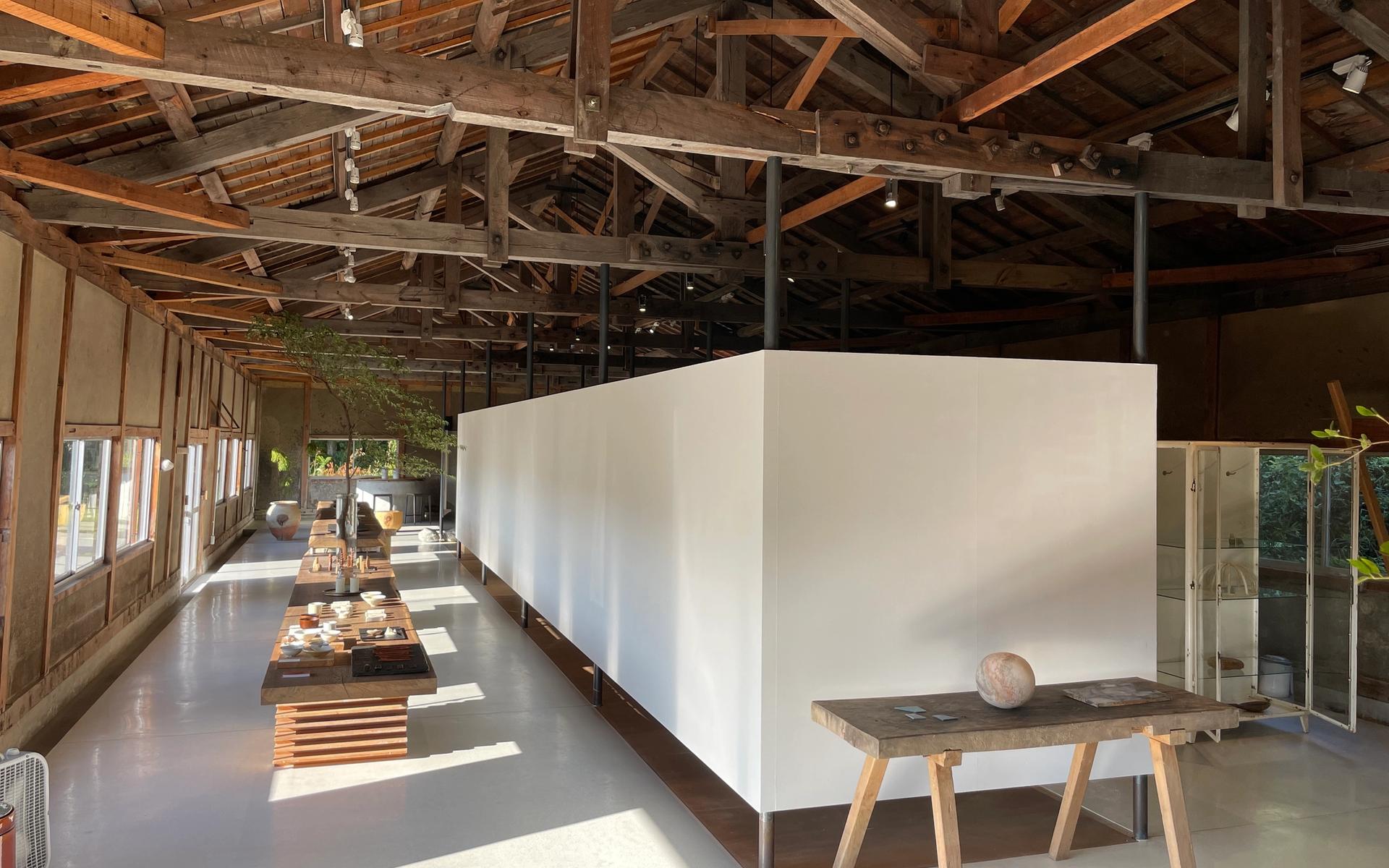
Iga
On one of the trips to Shigaraki we grouped it in with visiting another pottery area called Iga to check out the pottery there. The local soba restaurant we go to in Kyoto has beautiful pottery and we asked the owner where he gets it from! He said he had been collecting pottery and hand made glasses for over 20 years but that a lot of it comes from potters in Iga, so we went to this specific shop he told us about :) I got some nice platters and bowls from here.
The town we visited in Iga is called Marubashira. We also visited the amazing Nagatani-en complex. There was a lot of shops within this complex and an impressive climbing kiln. We first knew about this place because of their famous Donabe Pots. They have an instagram account too. This is where I got the tea pot from that we use in our studio kitchen, that we get asked about sometimes :)

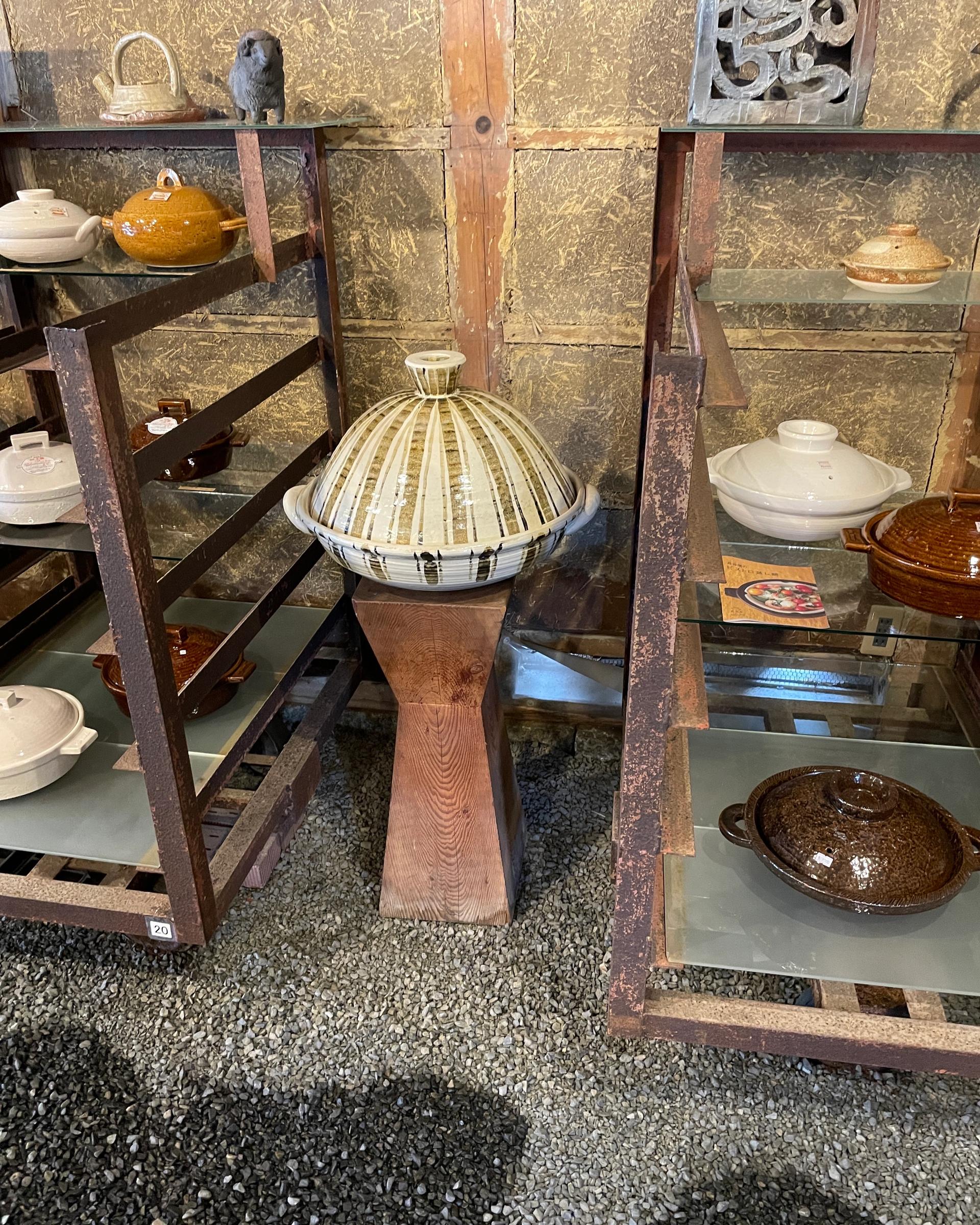
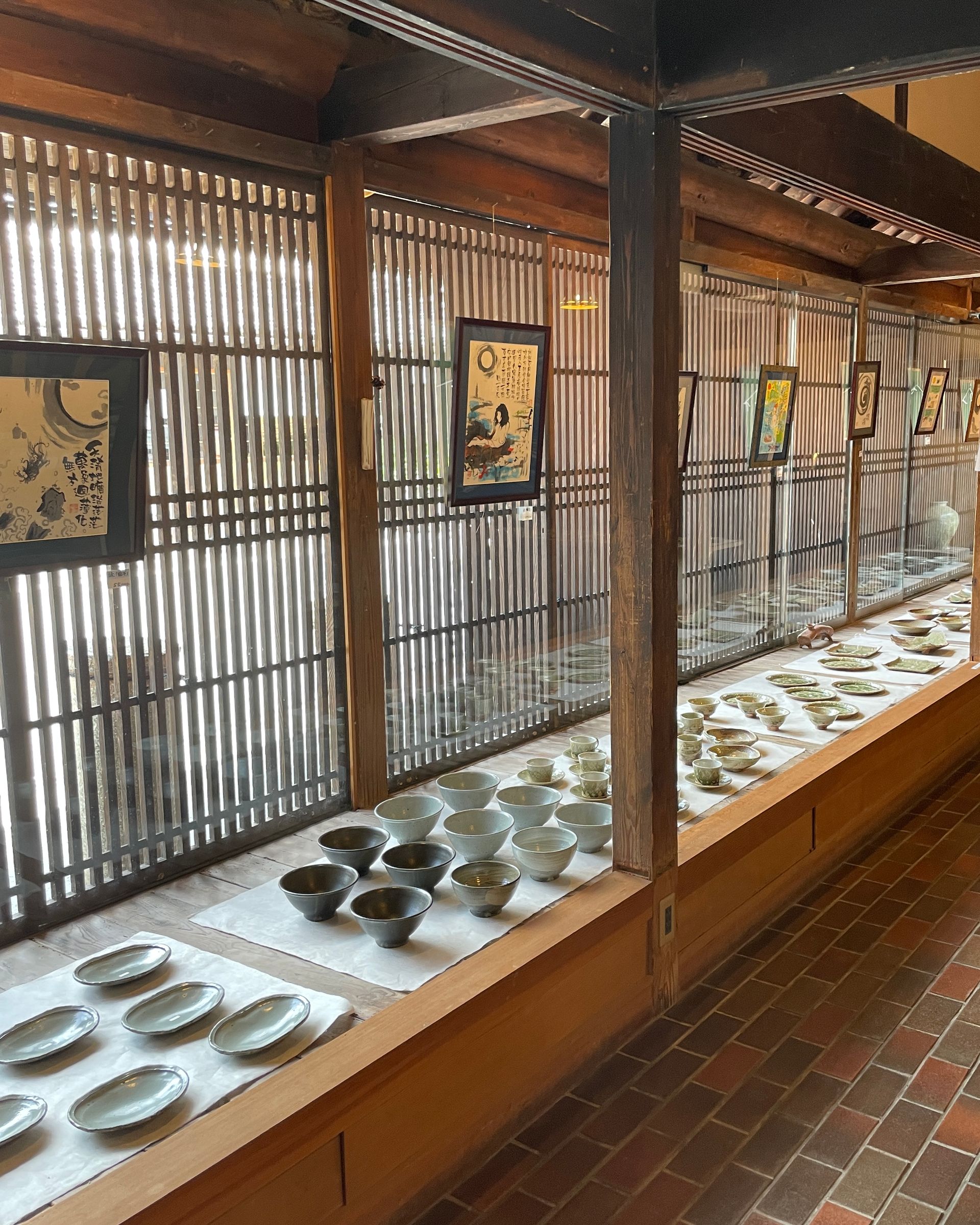
I read on their website, that there is a kiln market festival every May (we didn't go to this). I think they may run workshops/ classes too. Checkout their website and contact them if you want to know more.
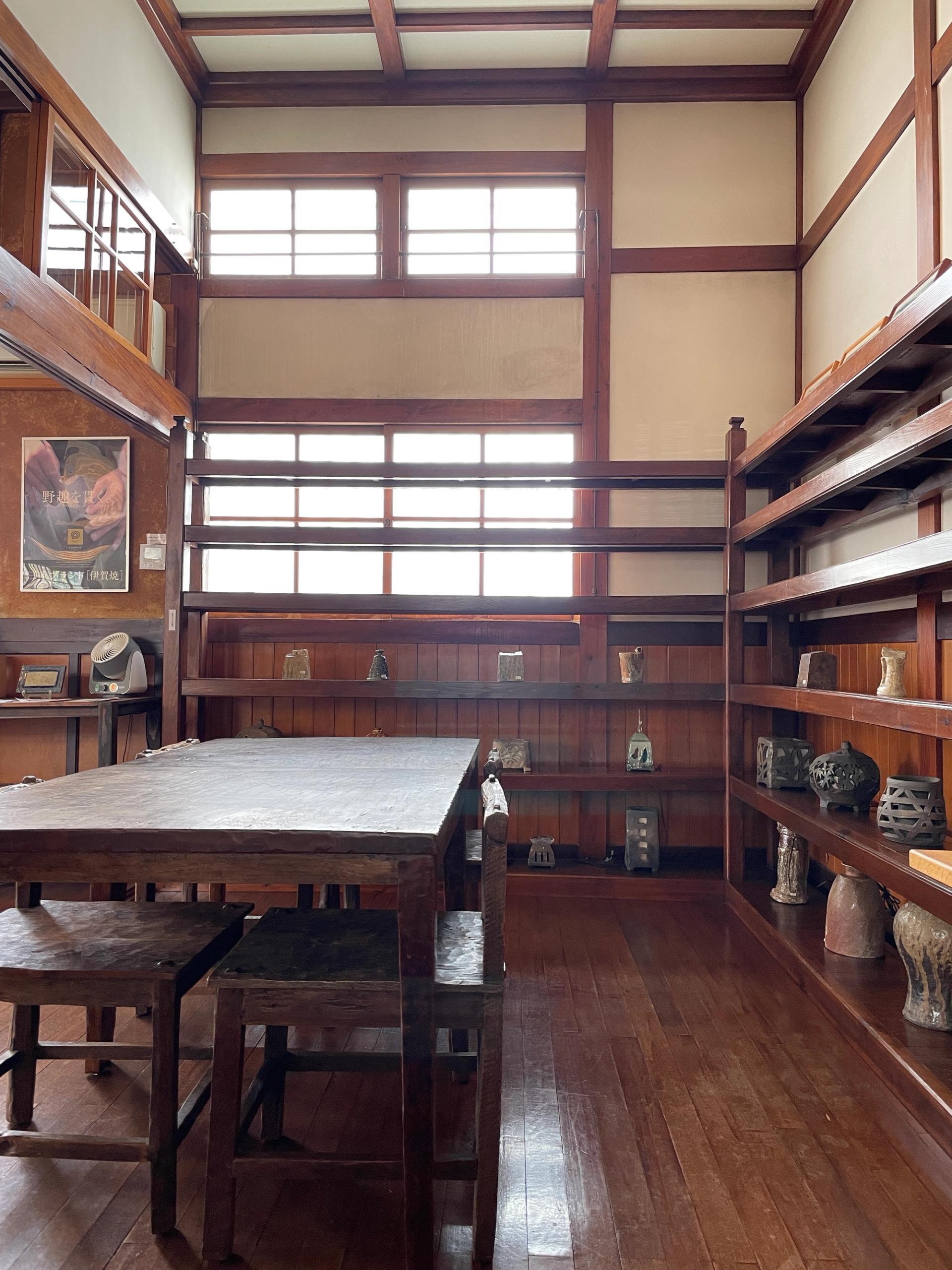
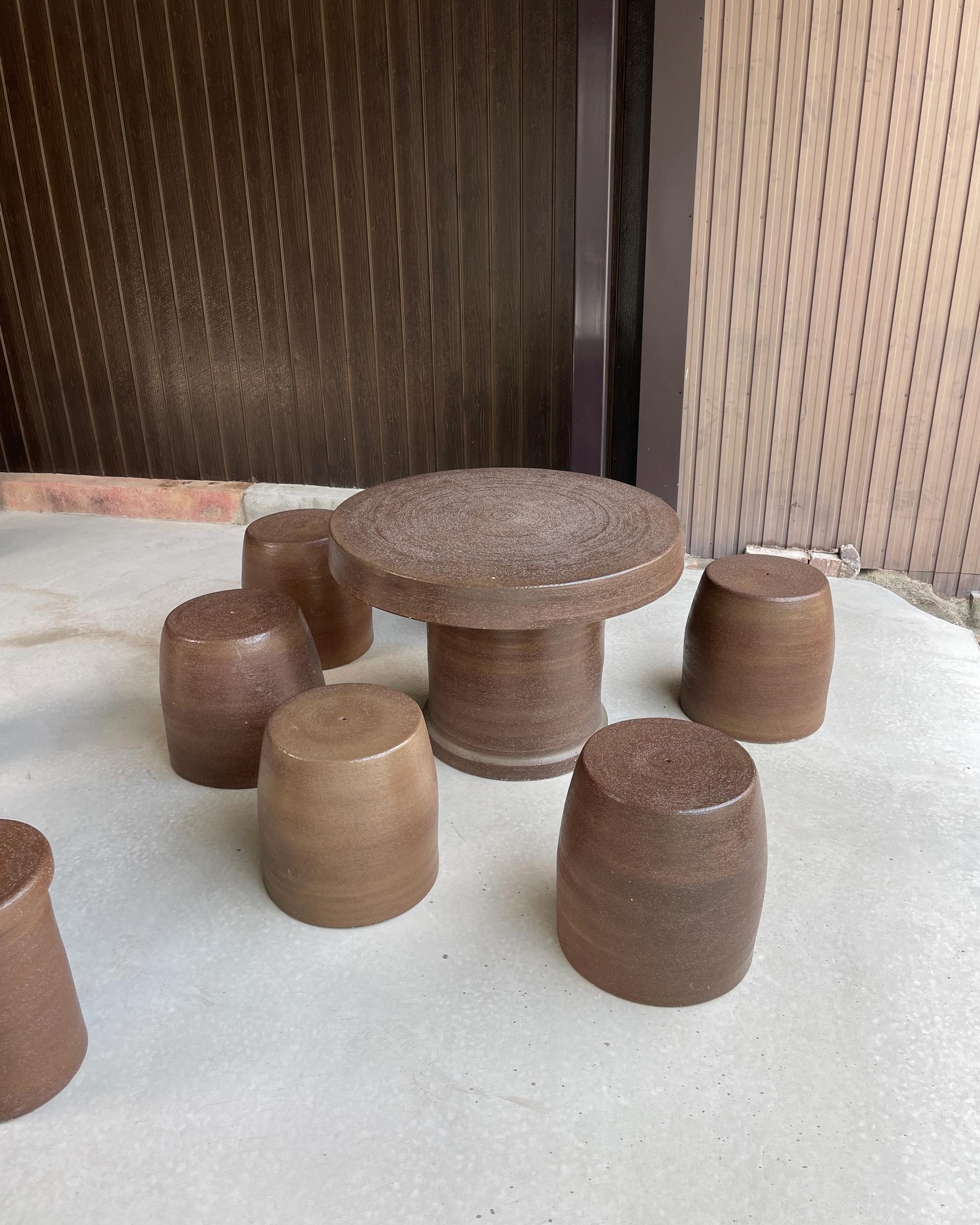
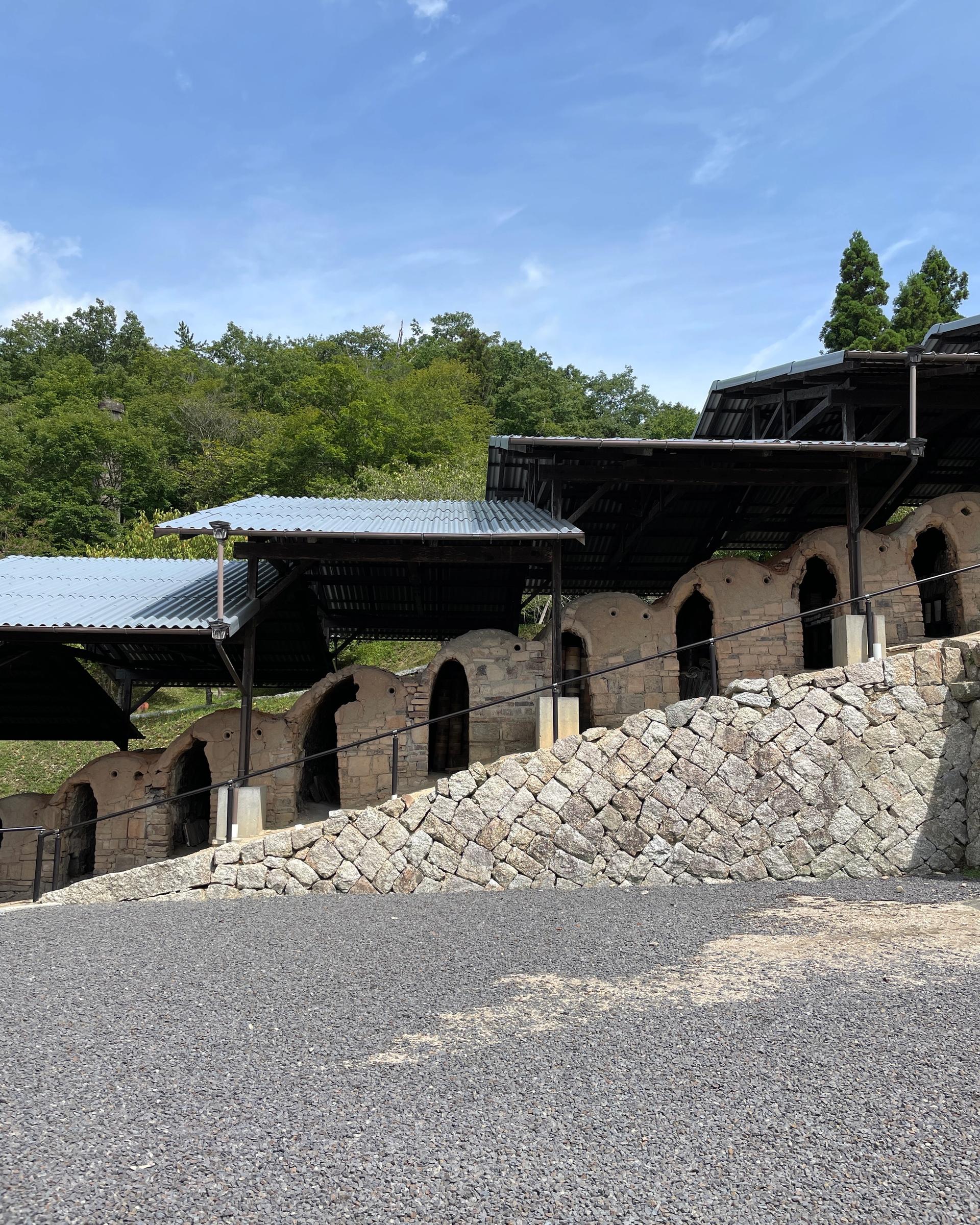
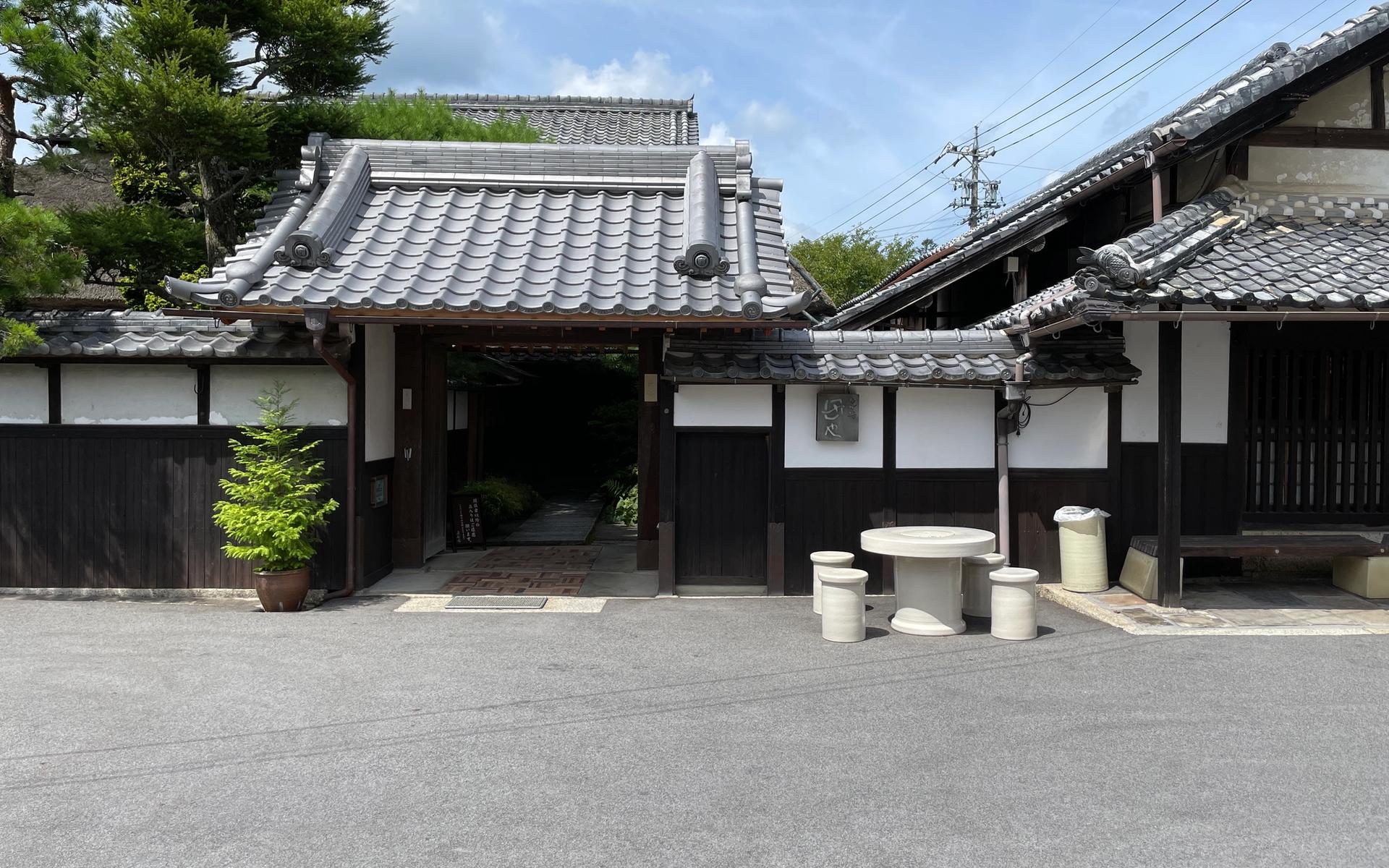
Miho Museum
On one of the trips to Shigaraki, we visited The Miho Museum, which was recommended by our Kyoto friend Yu-san. The Miho Museum was designed by Chinese American architect I.M. Pei. It was completed in 1997. The museum is located in the mountains of Shiga Prefecture, near Shigaraki. The entrance is particularly striking—a tunnel through the hillside leads to a suspension bridge, creating a dramatic entry into the museum. On certain angles the tunnel reflects the trees around in a very beautiful way (a lot of photos of this scene with the tunnel turned pink from the cherry blossoms on instagram!). The museum is mostly built underground to blend with the natural landscape. The museum was founded by Mihoko Koyama, leader of the Shinji Shumeikai spiritual group (who a Japanese friend explained to us was a cult), and houses a collection of Asian and Western artefacts. We found it so interesting!
We had lunch at the restaurant, which is located at the entry to the Museum where you buy the tickets (before you get on the shuttle!). The restaurant cooks food in accordance with the cults beliefs. We didn't fully understand, but I was grateful for the super delicious vegetarian lunch, which we still think about and tried to replicate at home.
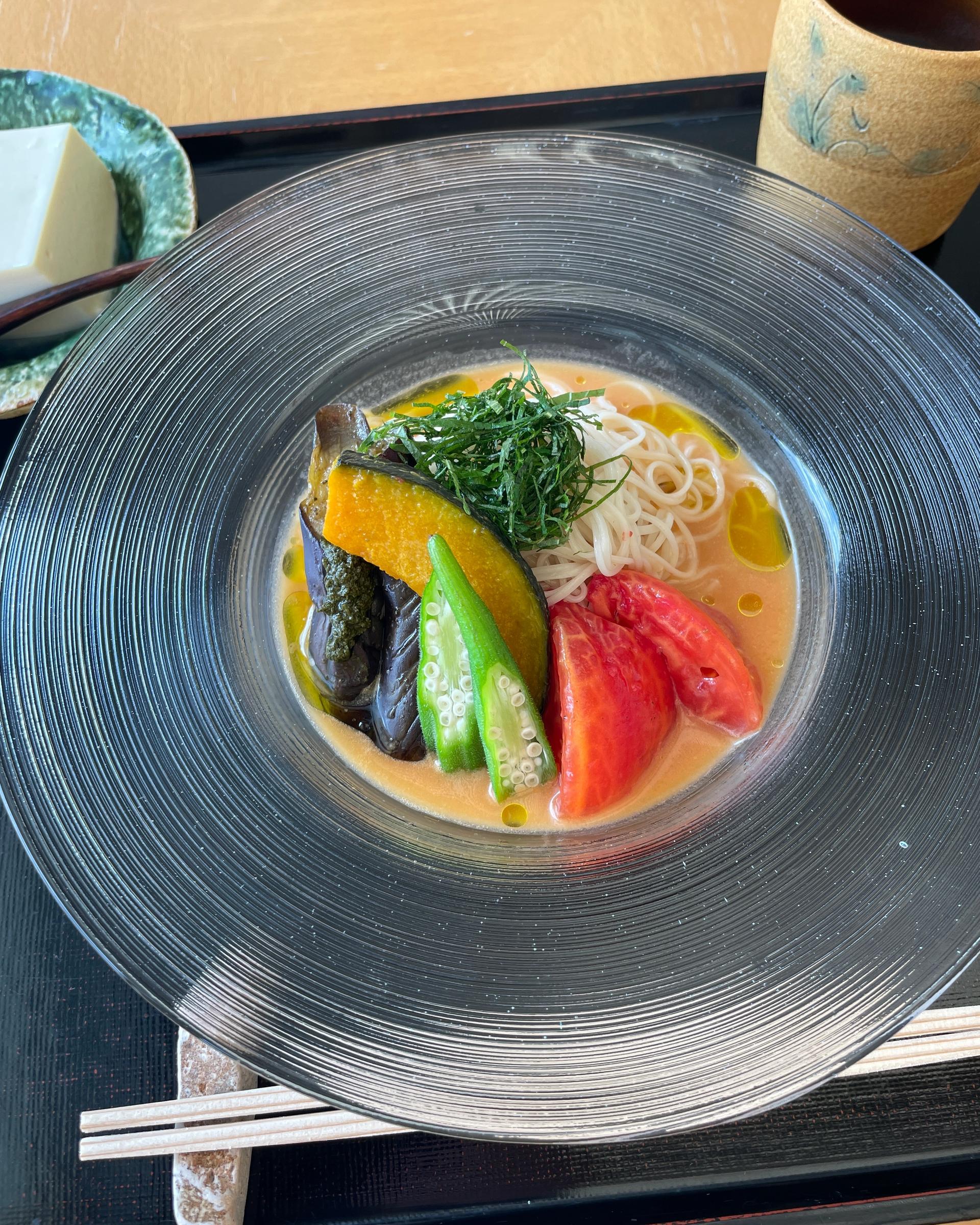
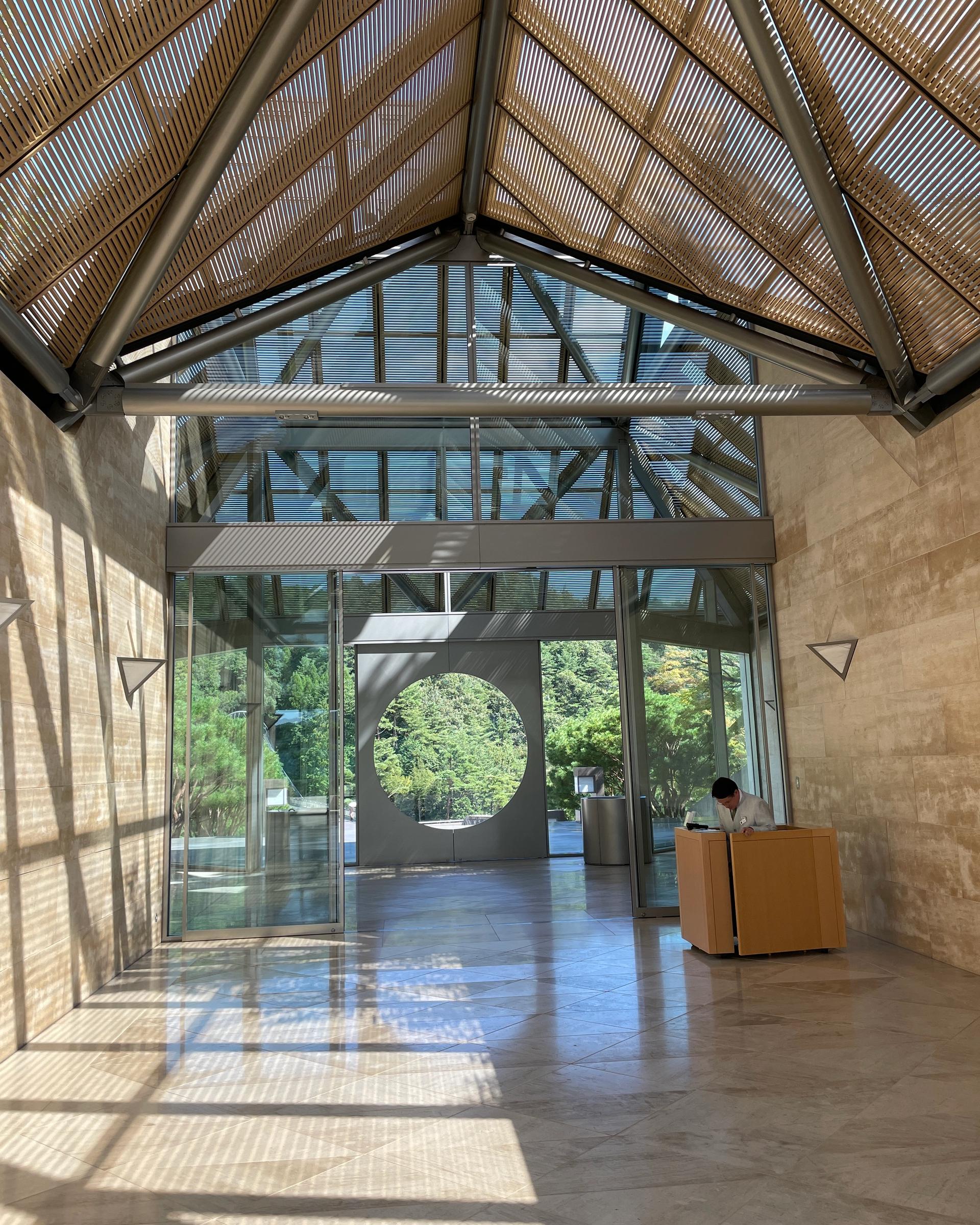
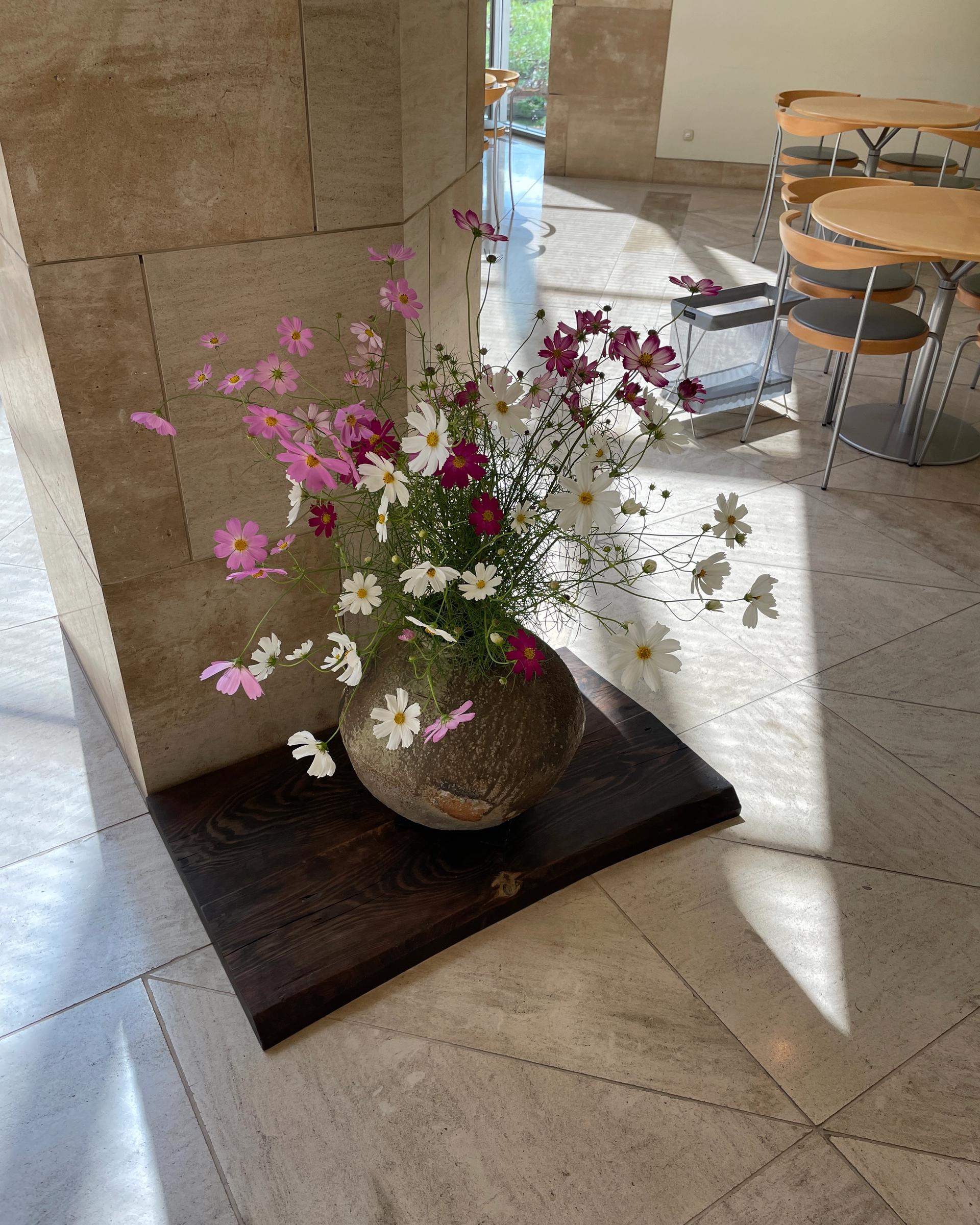
Tamba
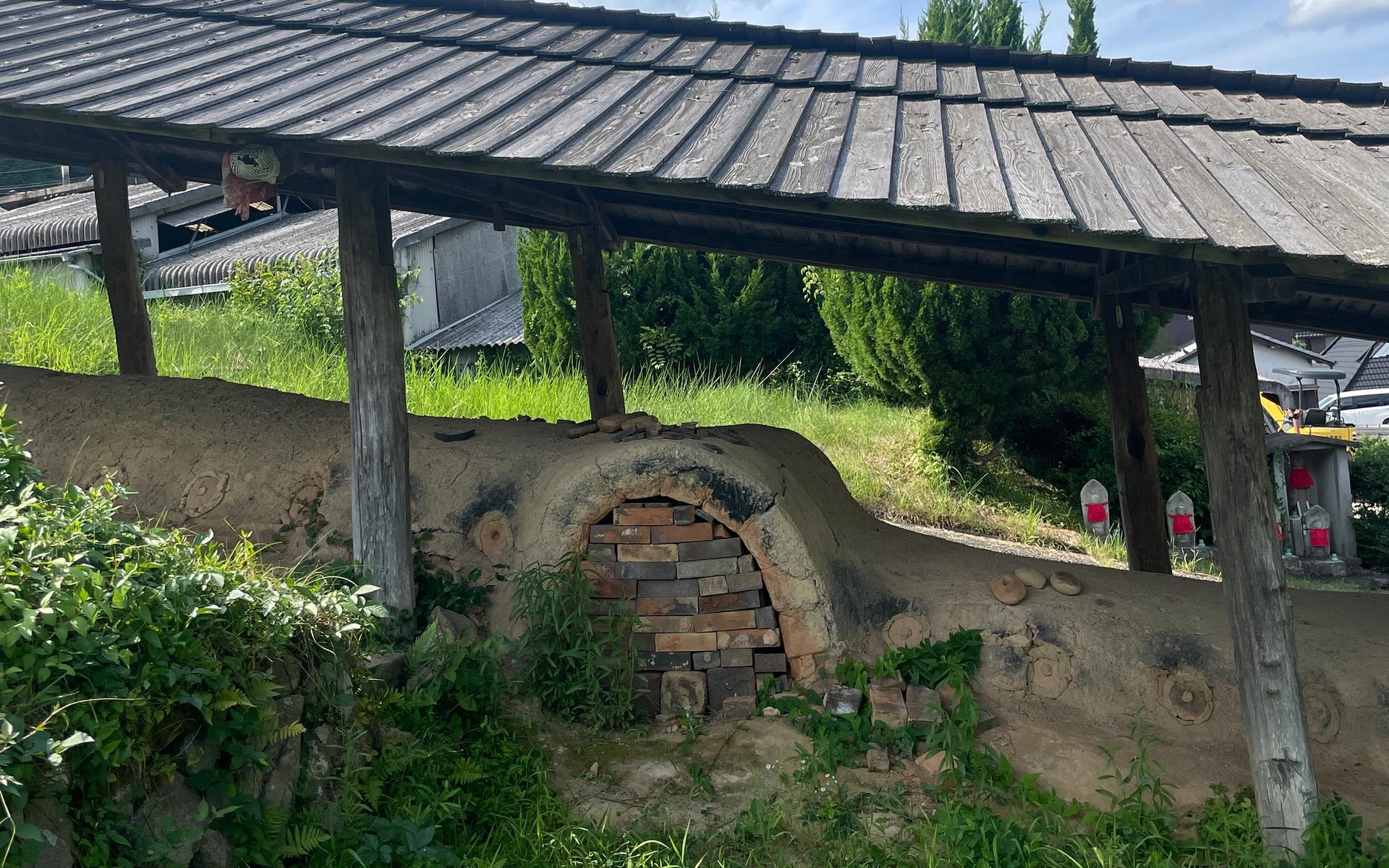
Tamba Pottery Town is another of Japan’s Six Ancient Kilns. We hired a car and drove here from Kyoto. The history of pottery in Tamba goes back over 800 years to the late Heian period. The climbing kiln is the oldest existing kiln in Japan. It was built in 1895. It is 47m long.
Tamba ware is noted for its understated beauty, natural ash glazes, and practical forms developed for everyday use. There are lots of small pottery shops and studios here and a good museum.
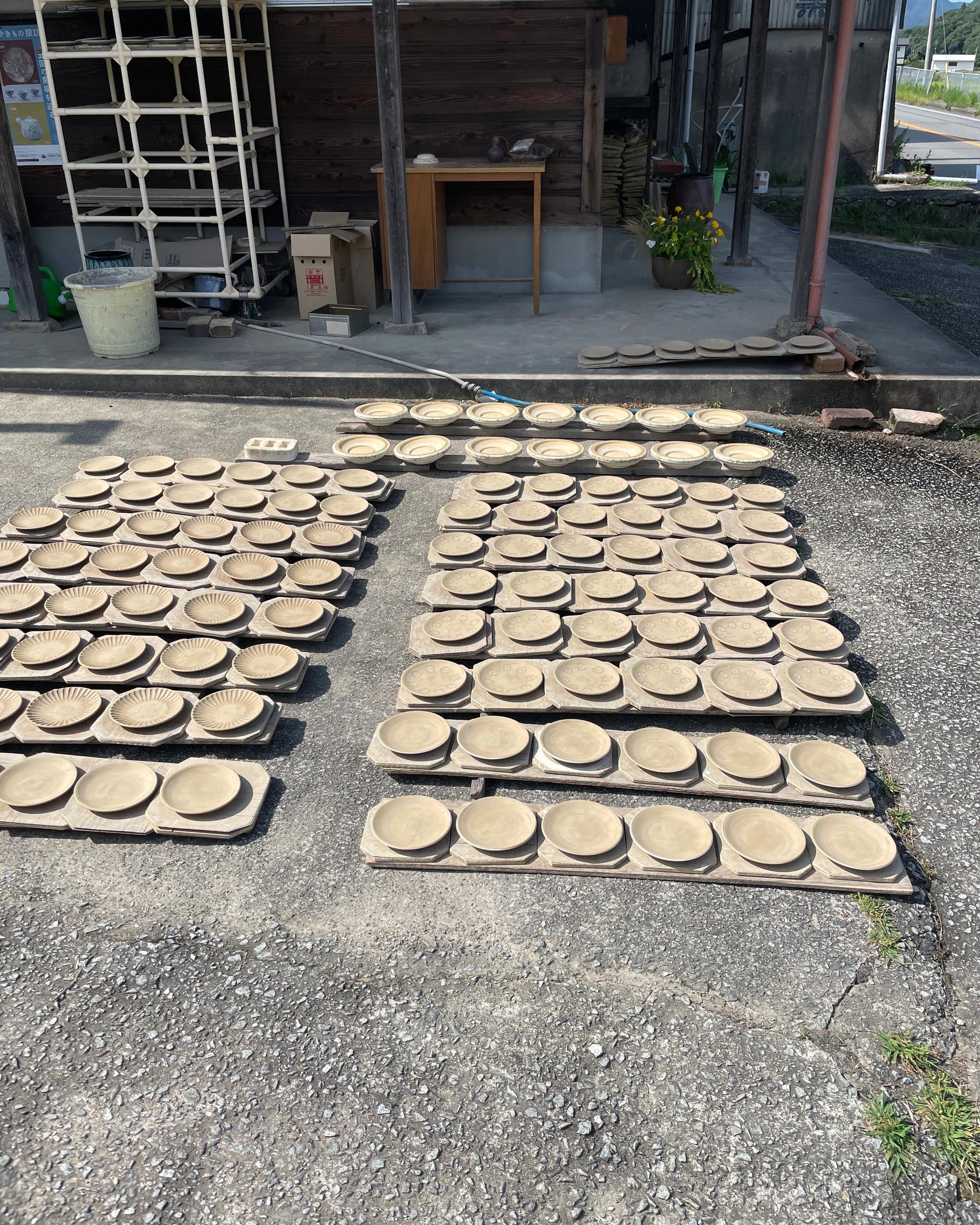
We really wanted to visit this potters studio shop called Tanso Kiln when we visited Tamba, but we got our timings wrong and sadly when we got there, they were closed. We had researched their work & read about how they trained under Bernard Leach. I think their studio will be a special one! Below are photos I took from outside.
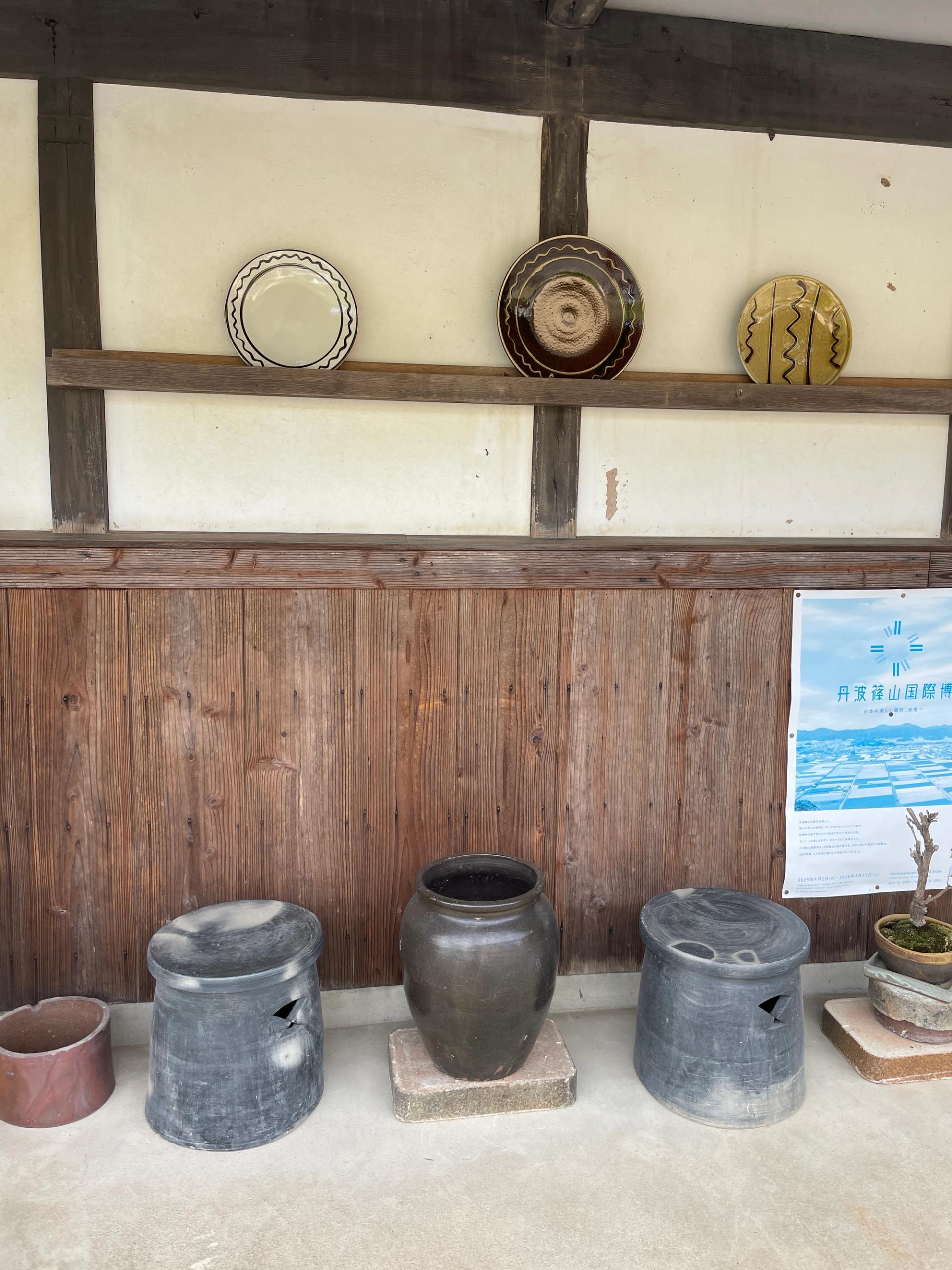
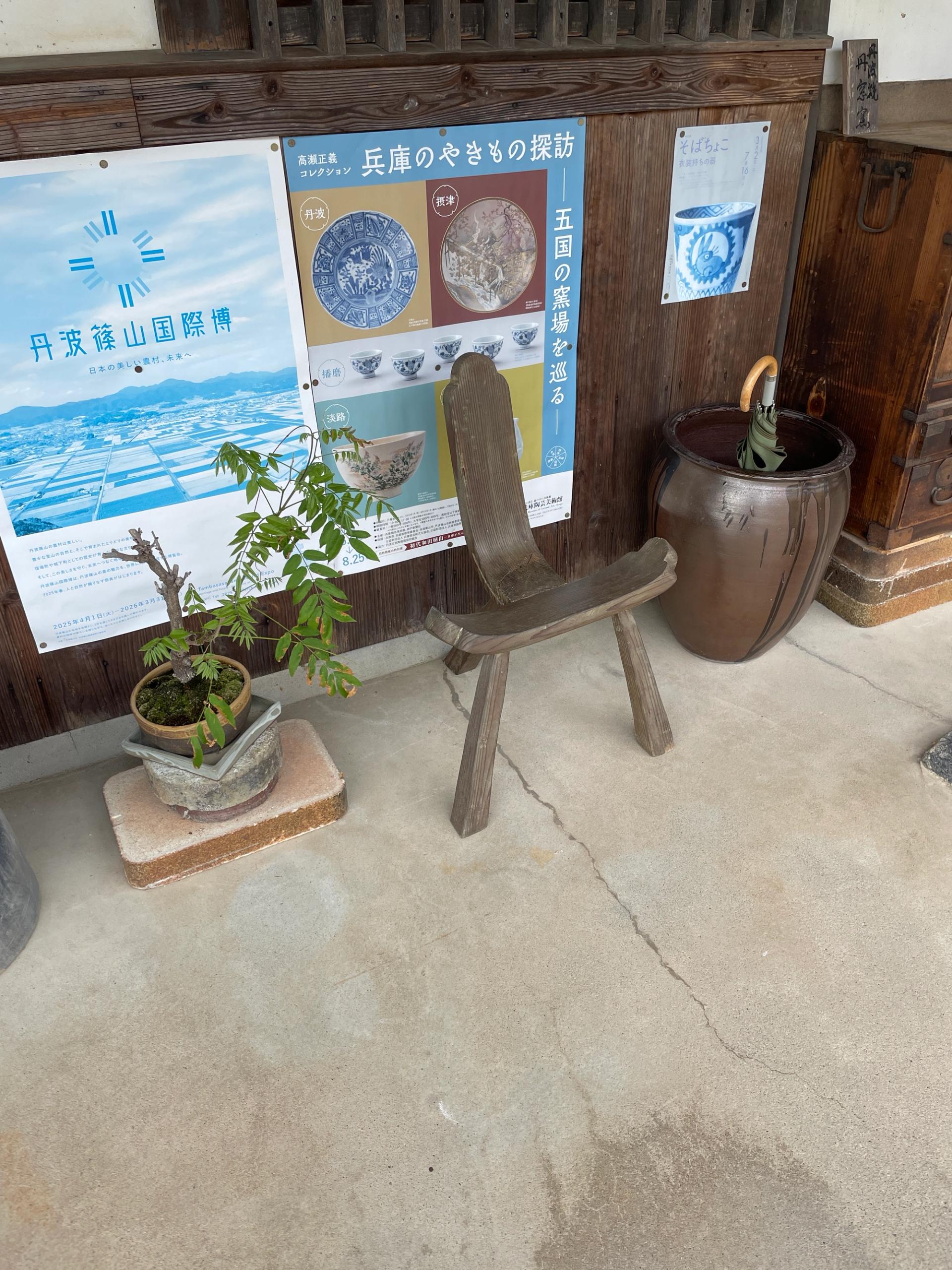
We enjoyed visiting the Tamba Traditional Craft Park. It played gentle music in the outdoor walkways, which billowed throughout the whole village and we could hear it as we were driving around, bouncing off the hills. We got a map when we were here, which we used to work out what pottery studios we wanted to visit. They also have a display of most of the pottery studios in town so you can look at little previews of so many crafts peoples work to see which styles you like and want to see more of.

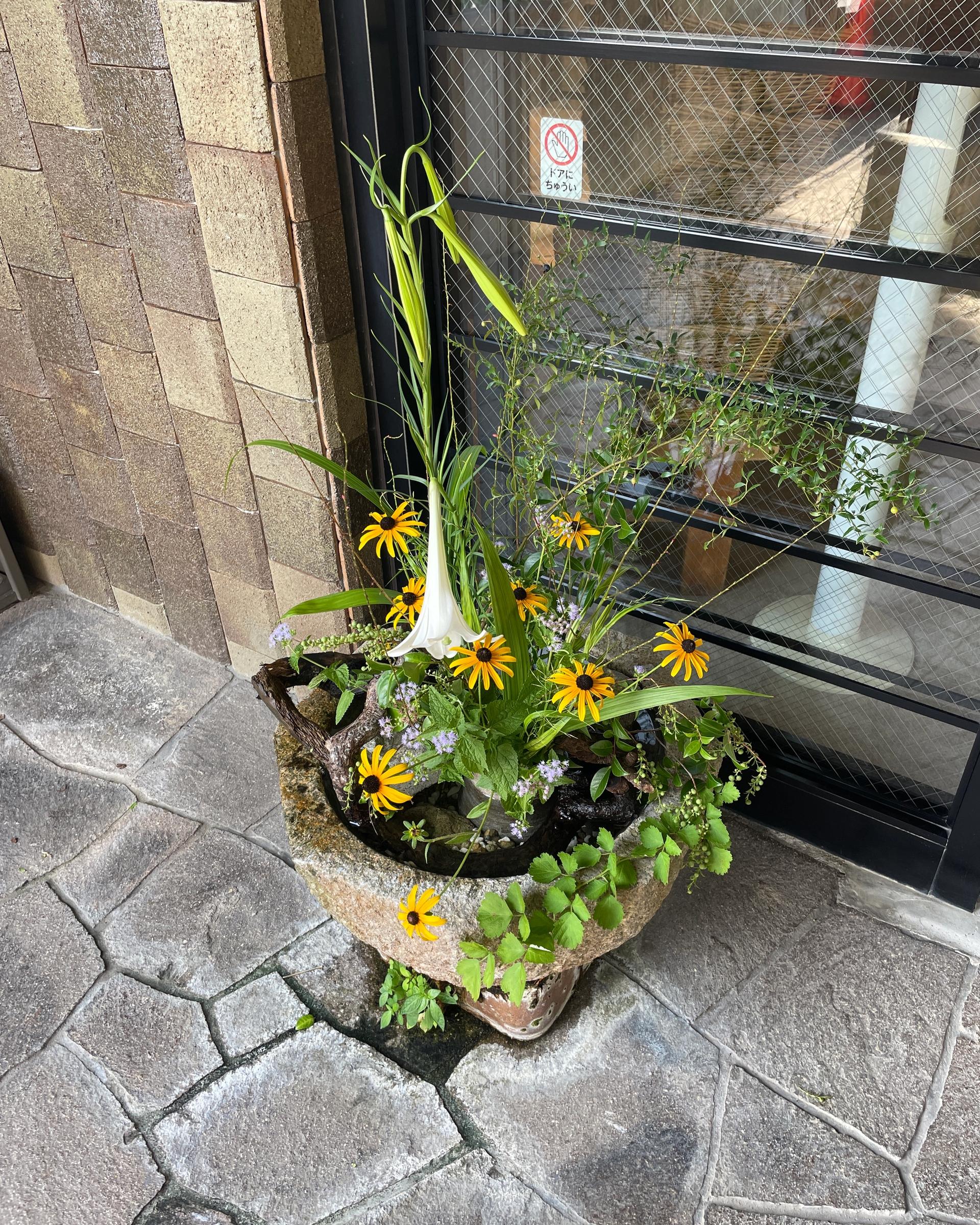
If you'd like to see more of my Japan tips, checkout the blog posts:
